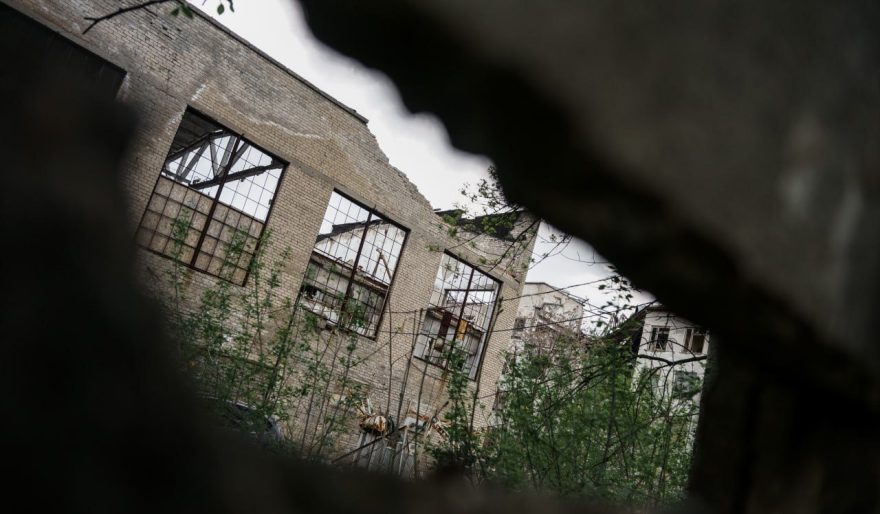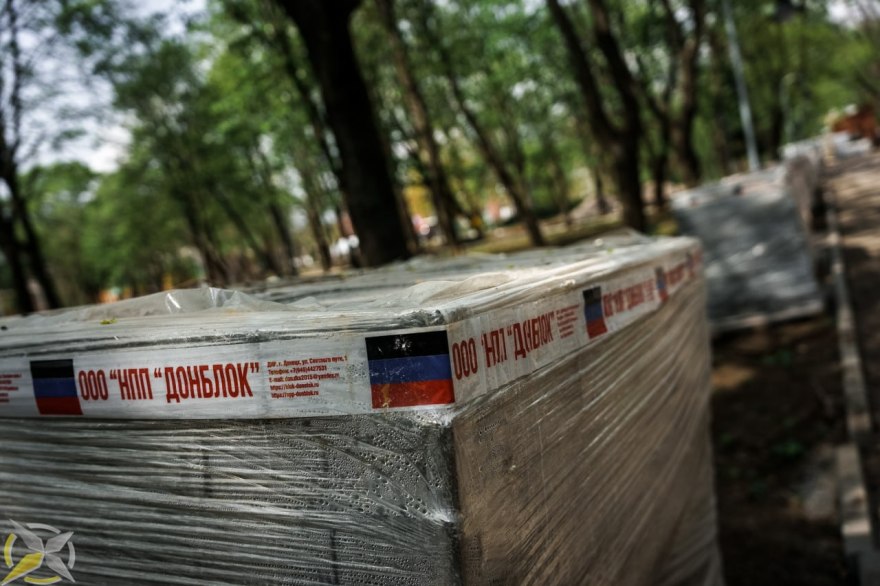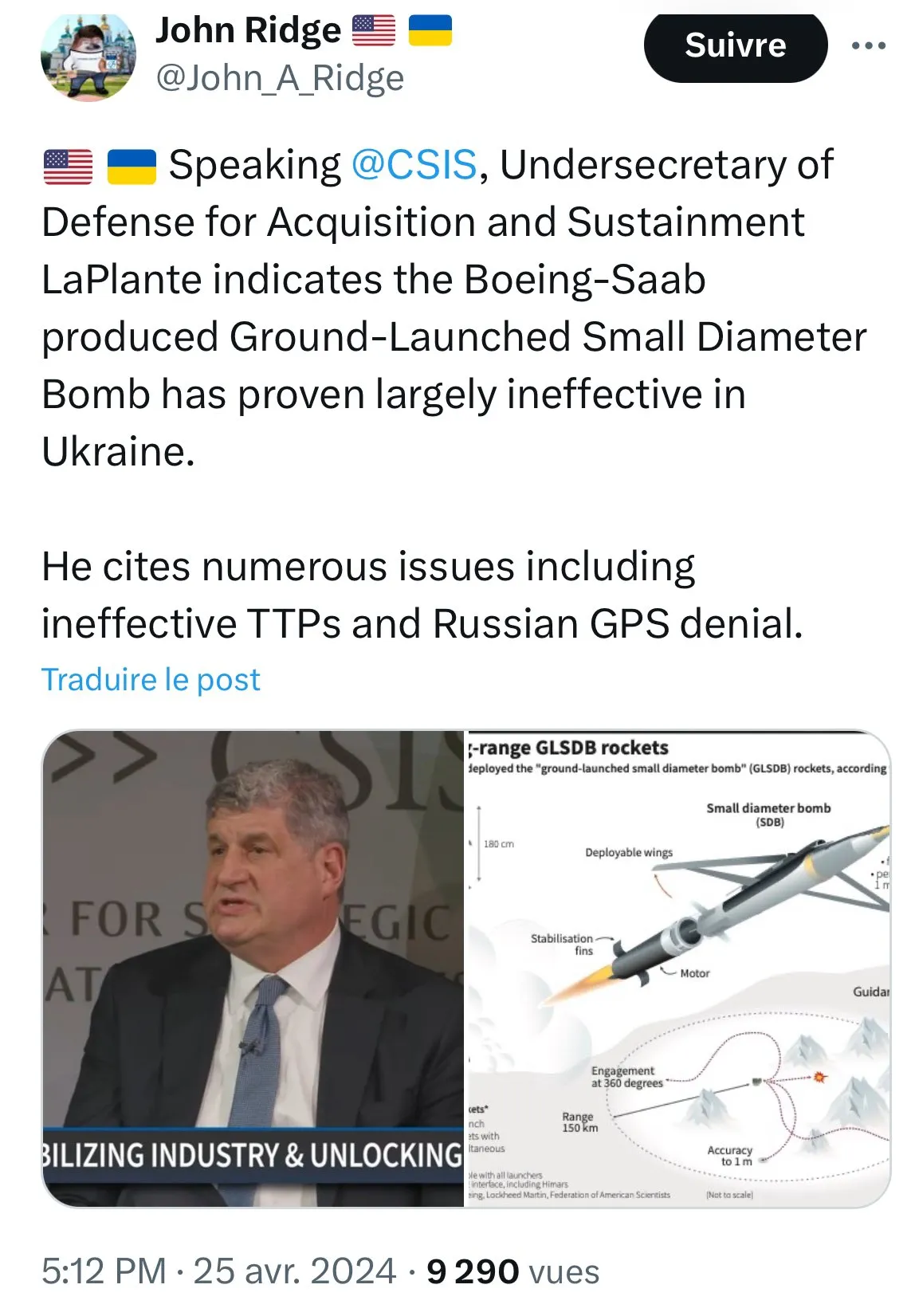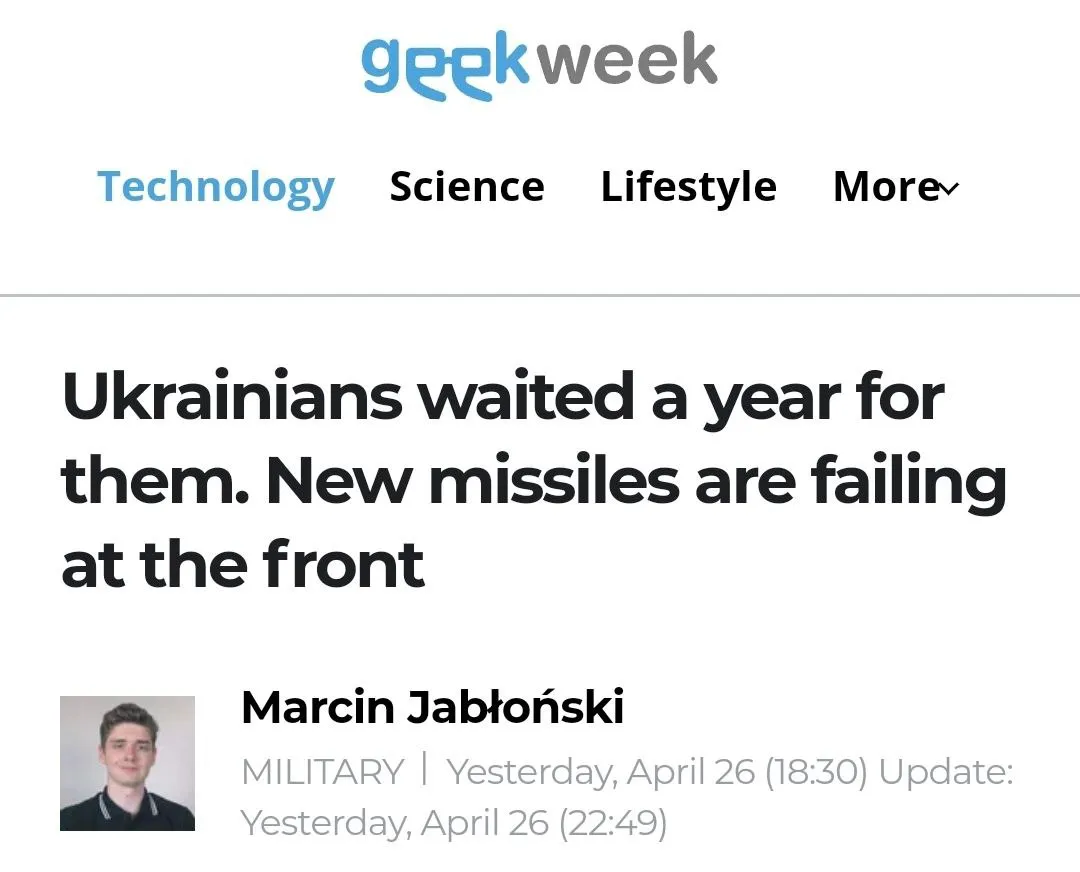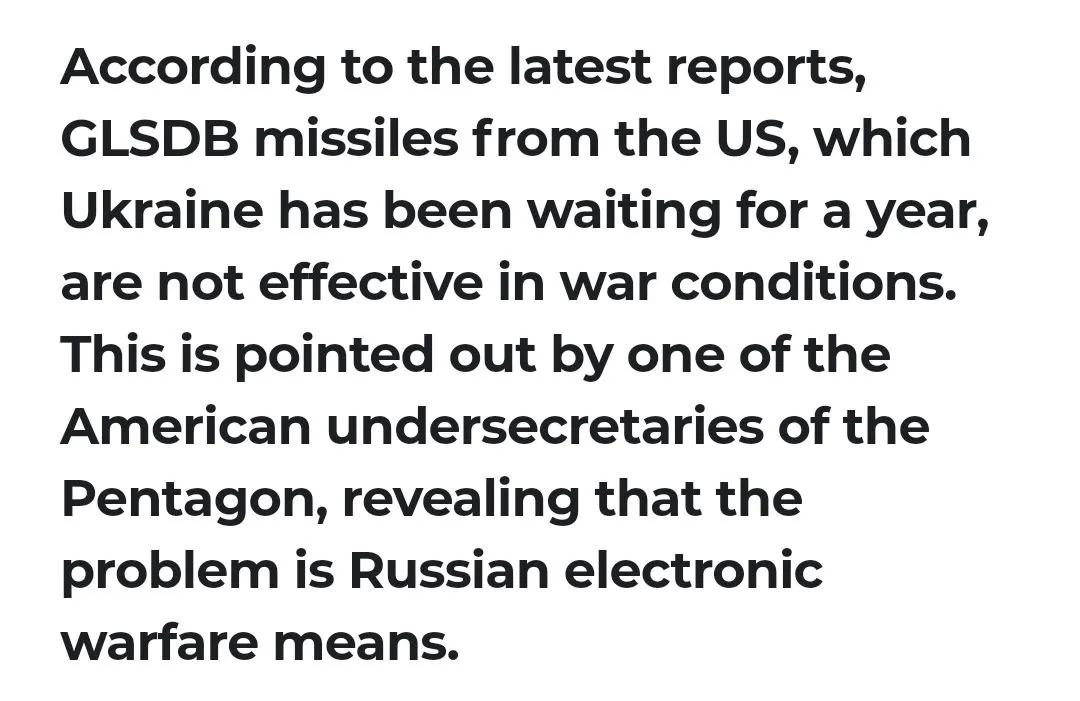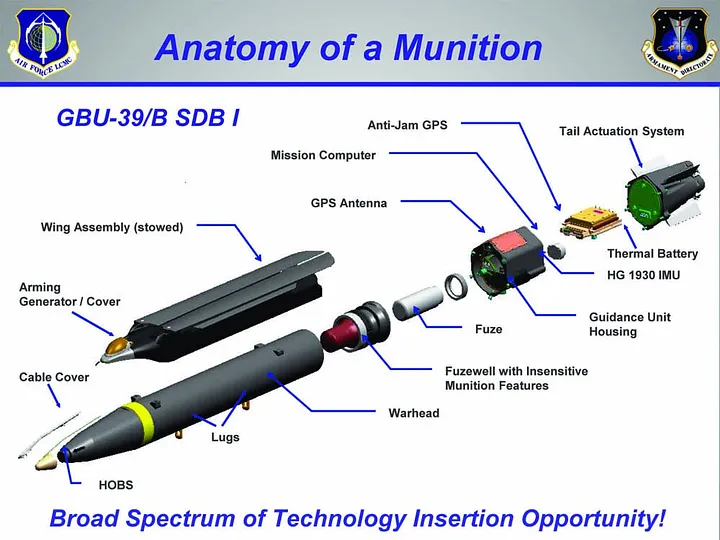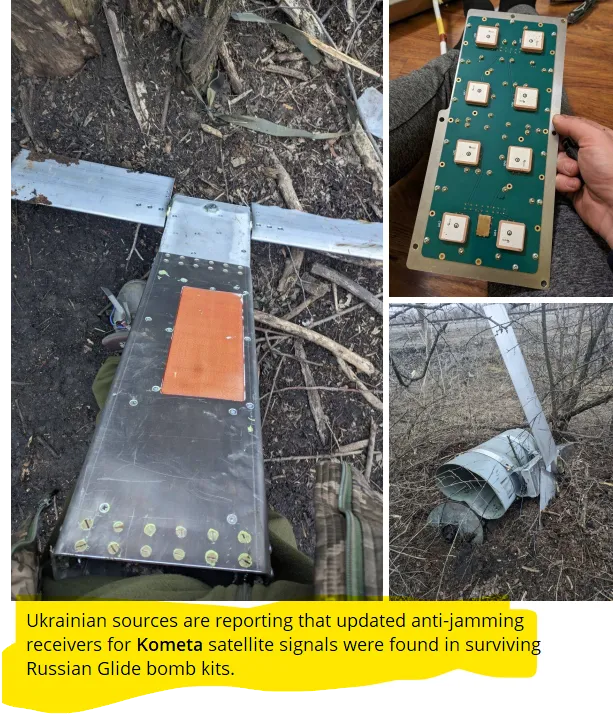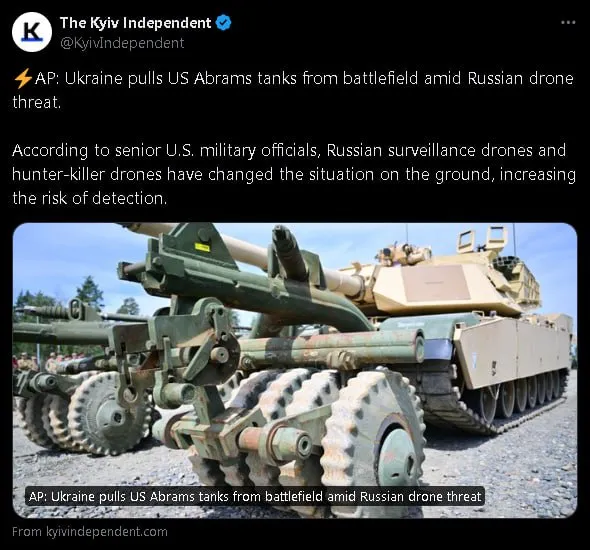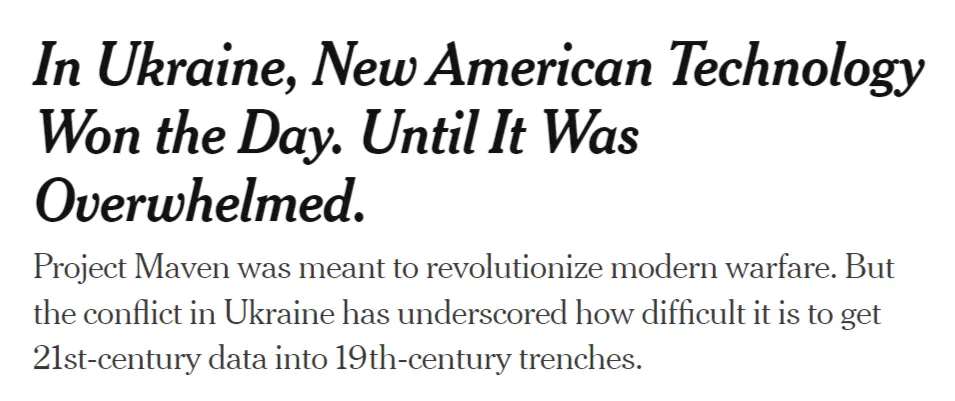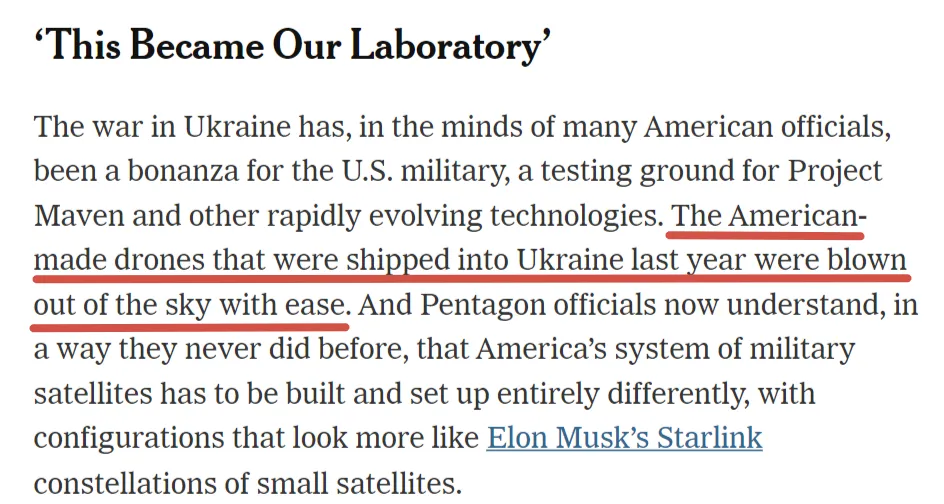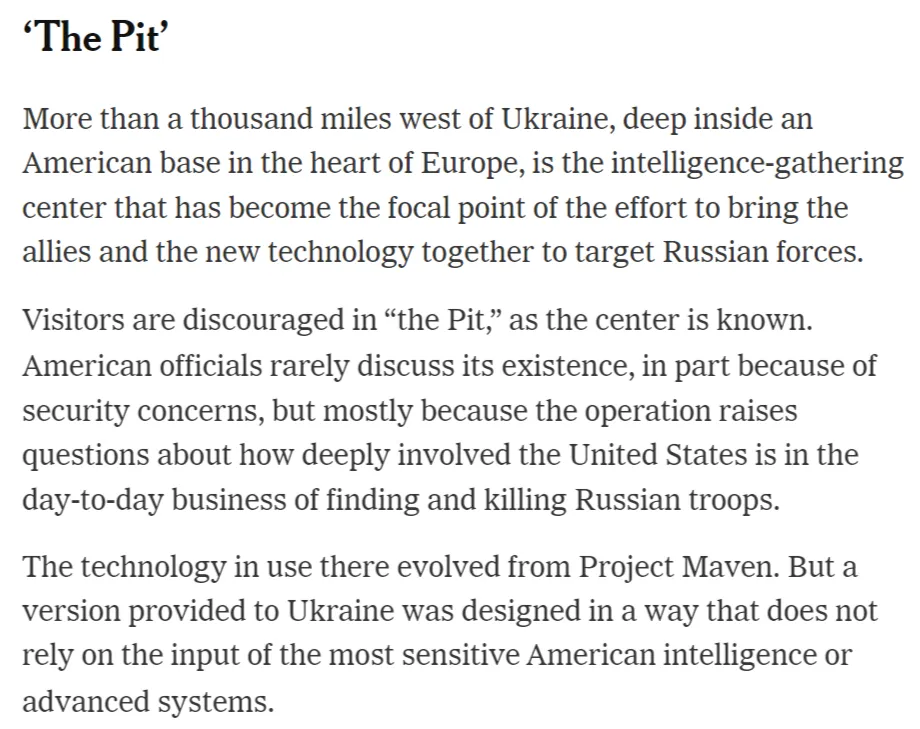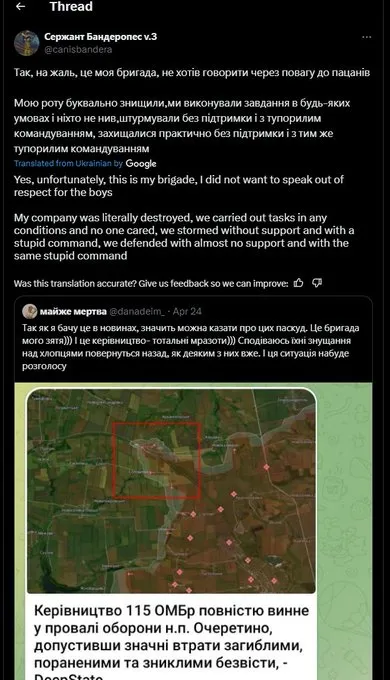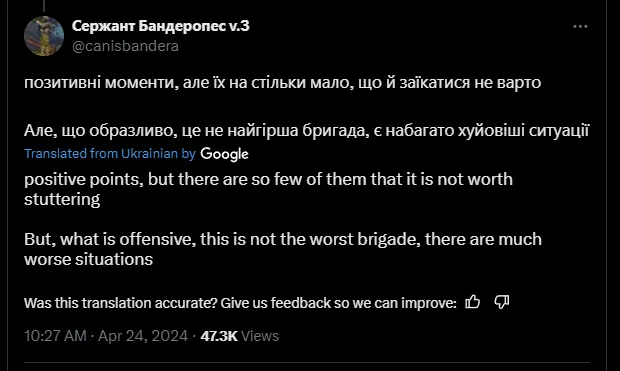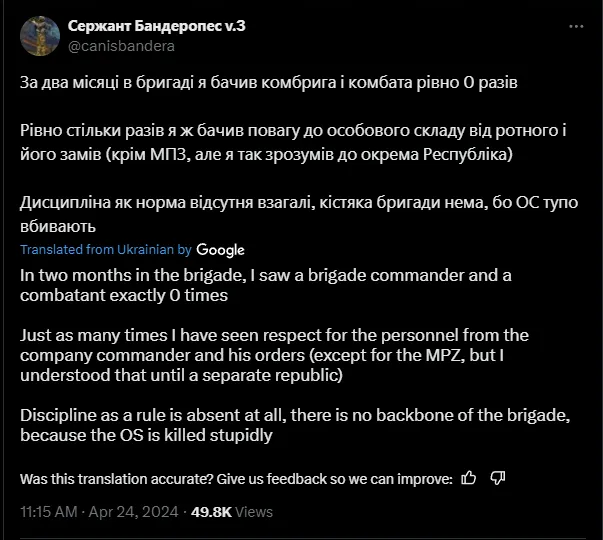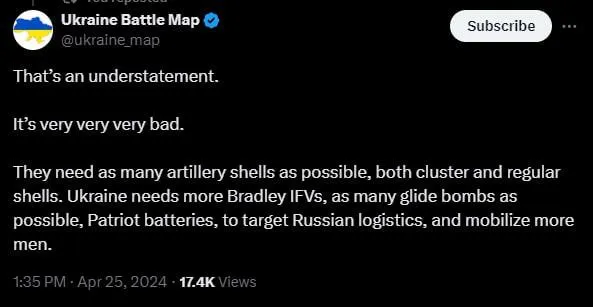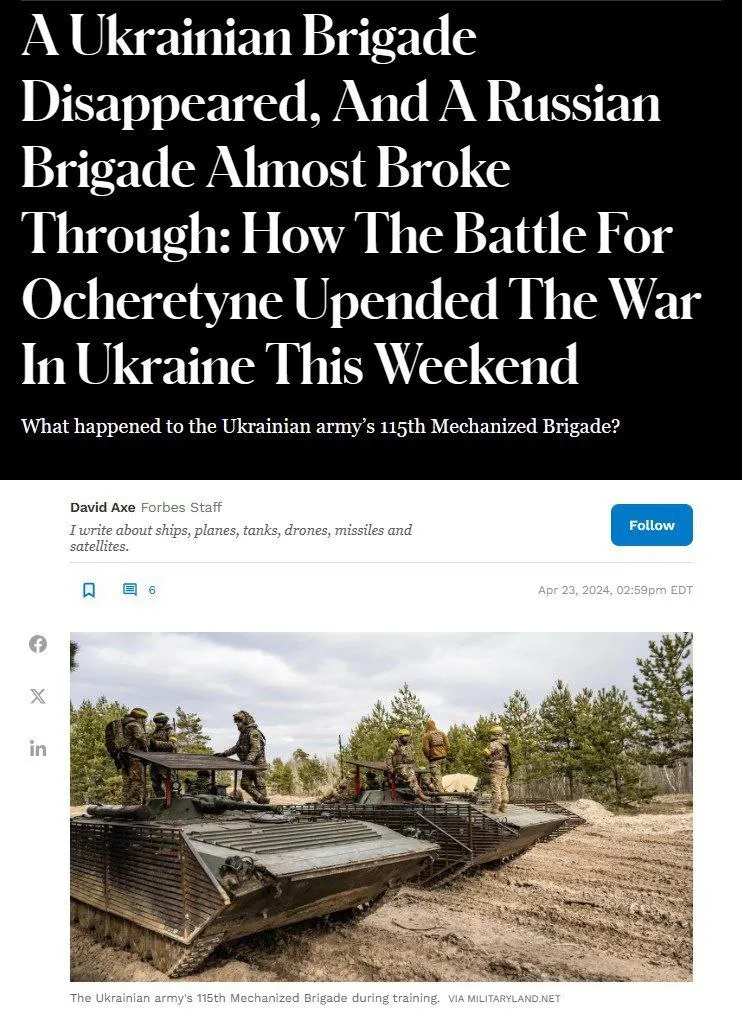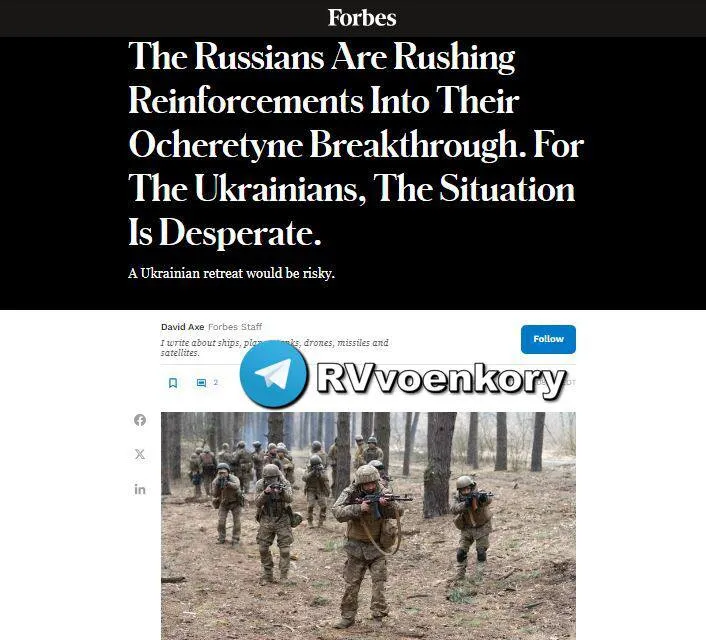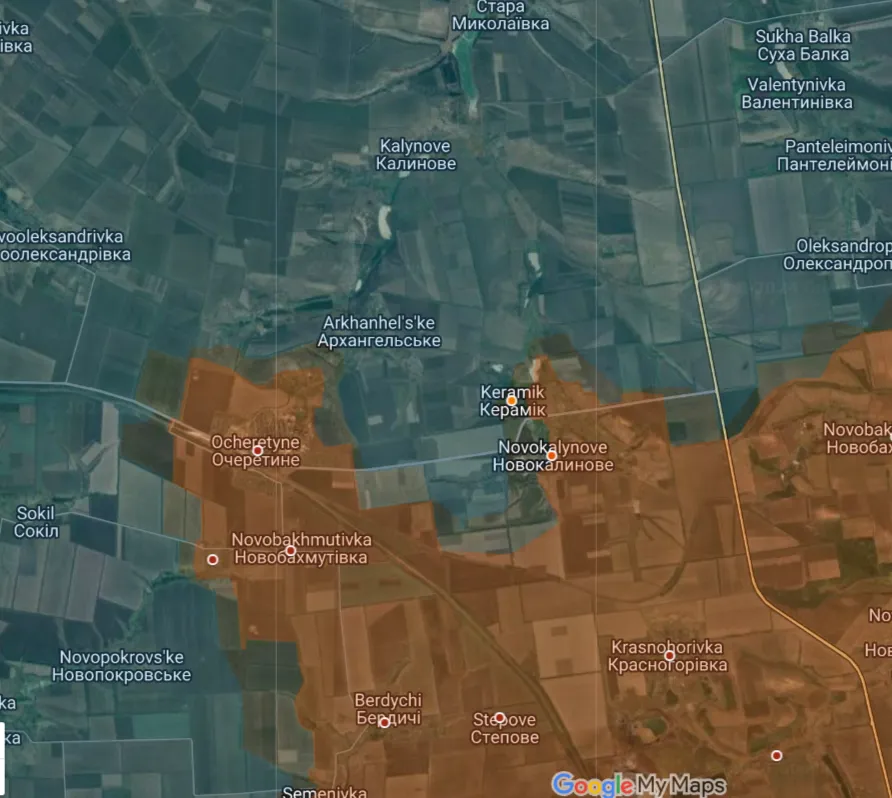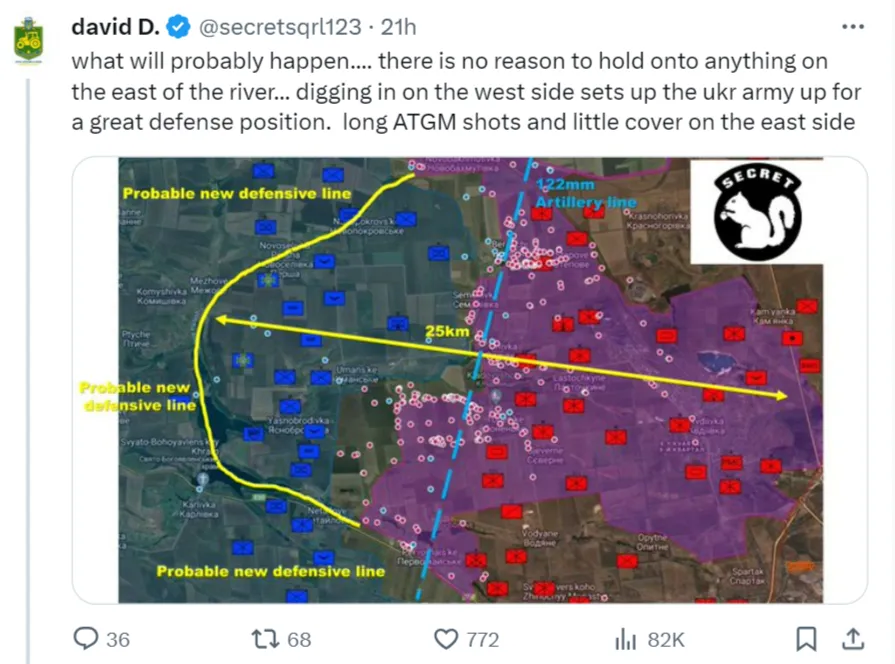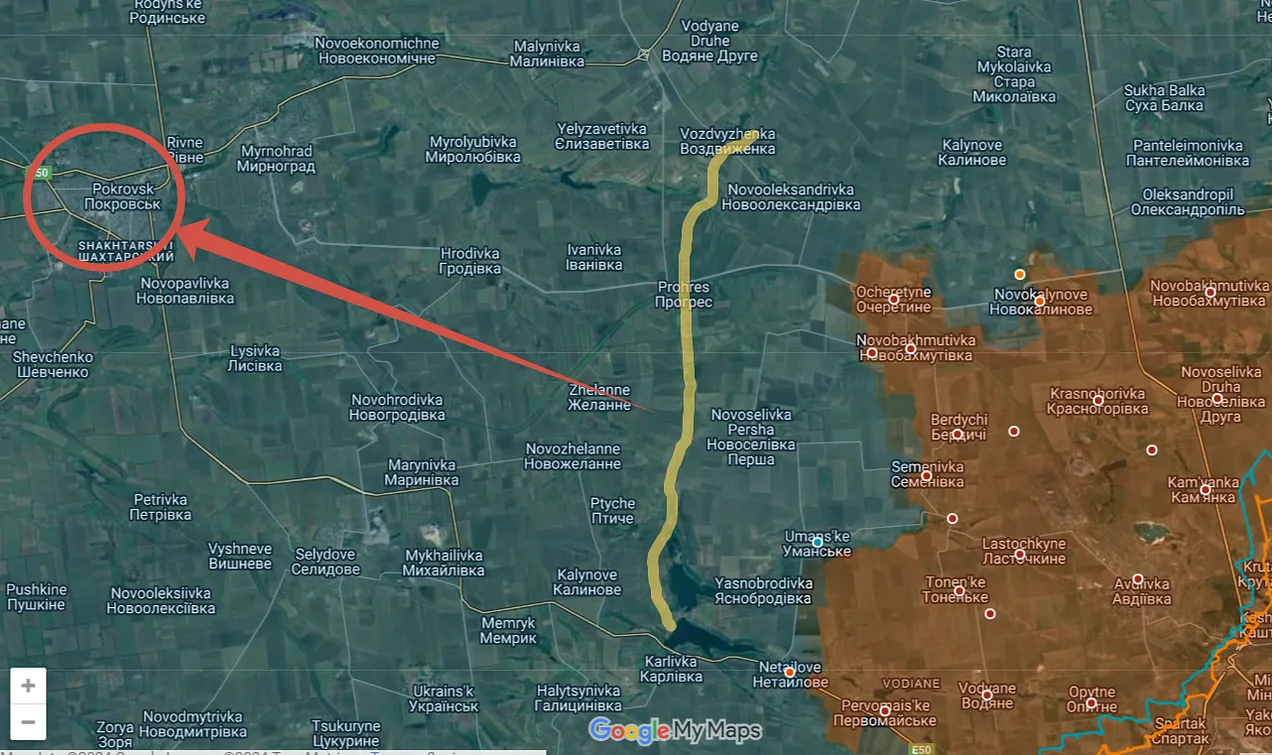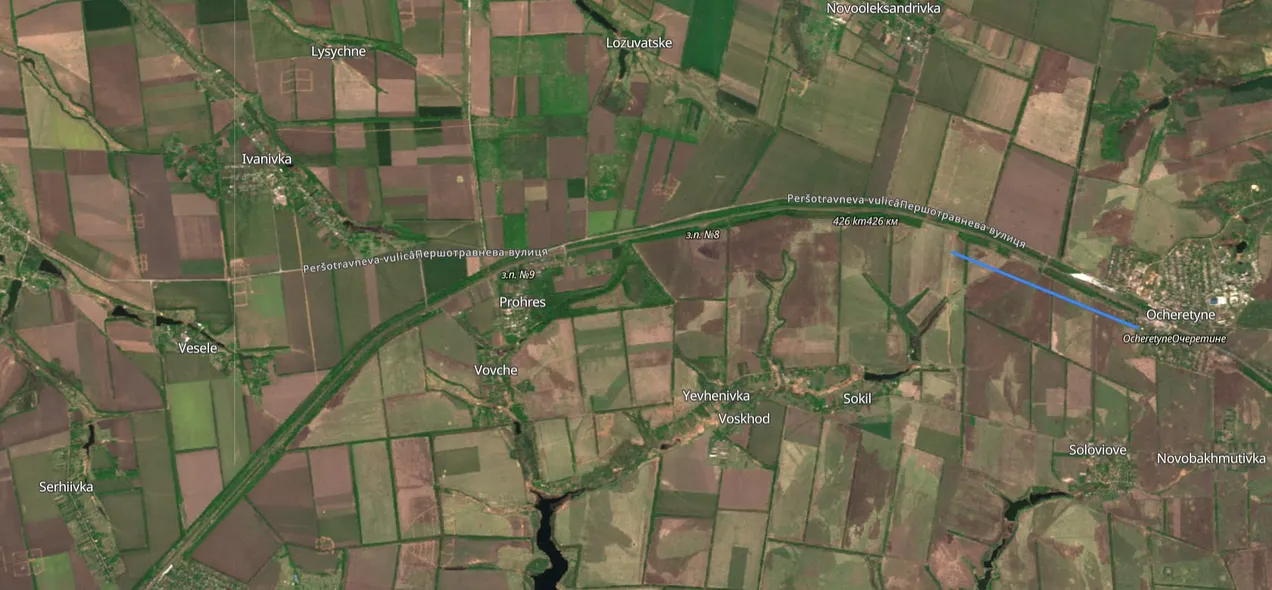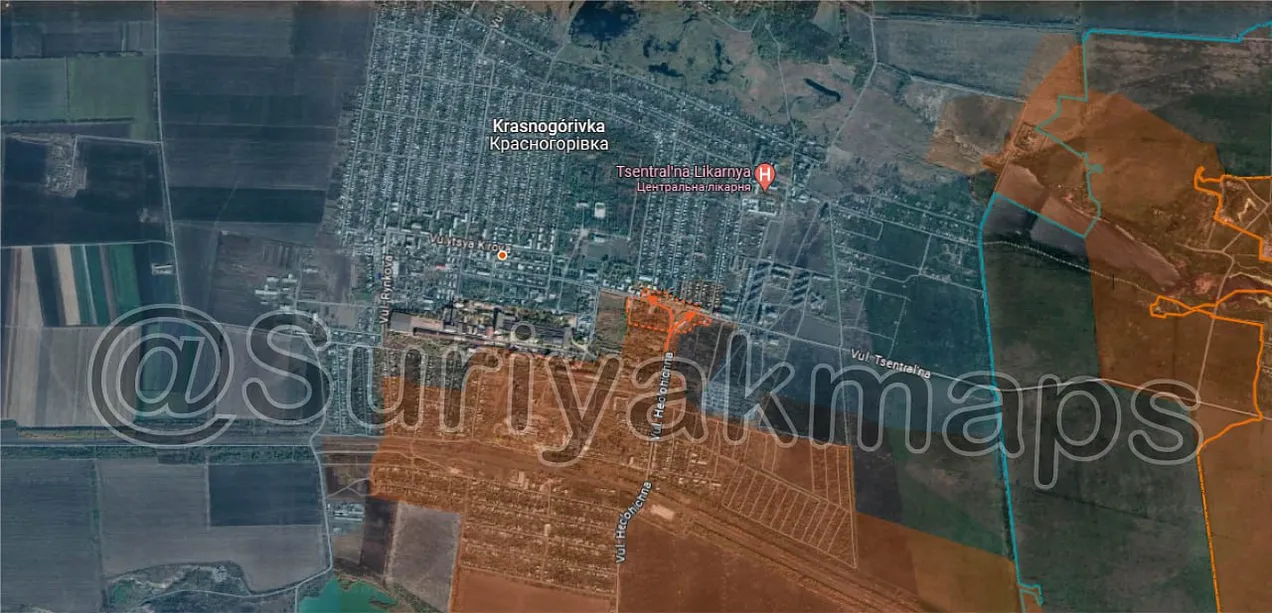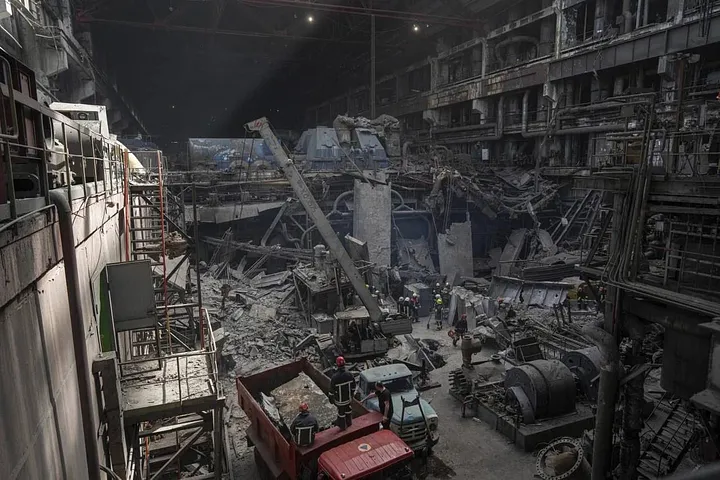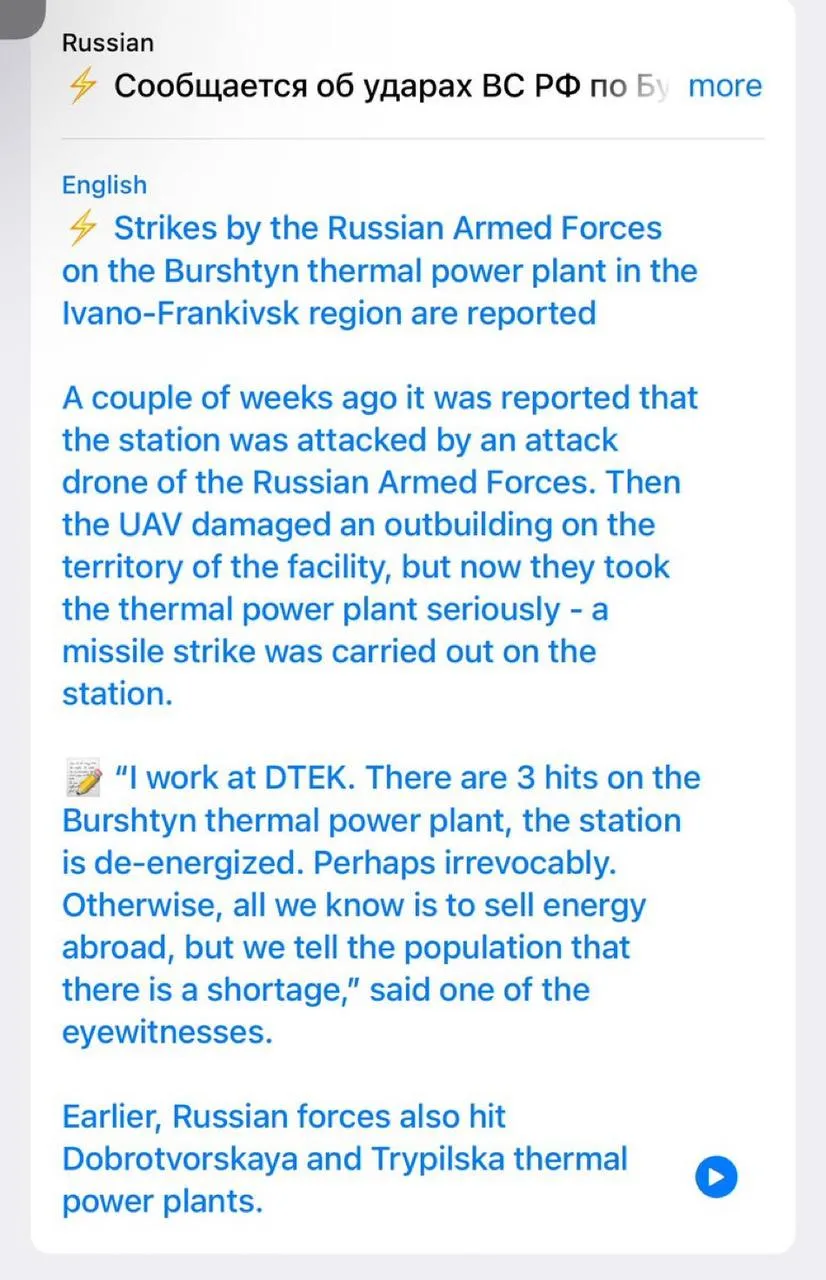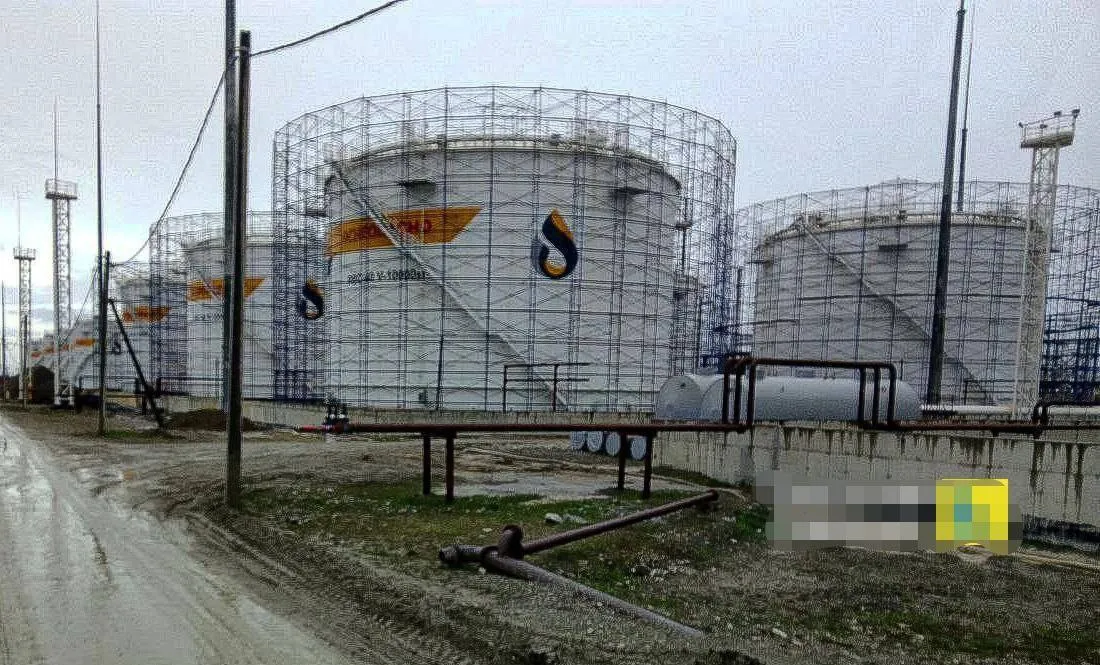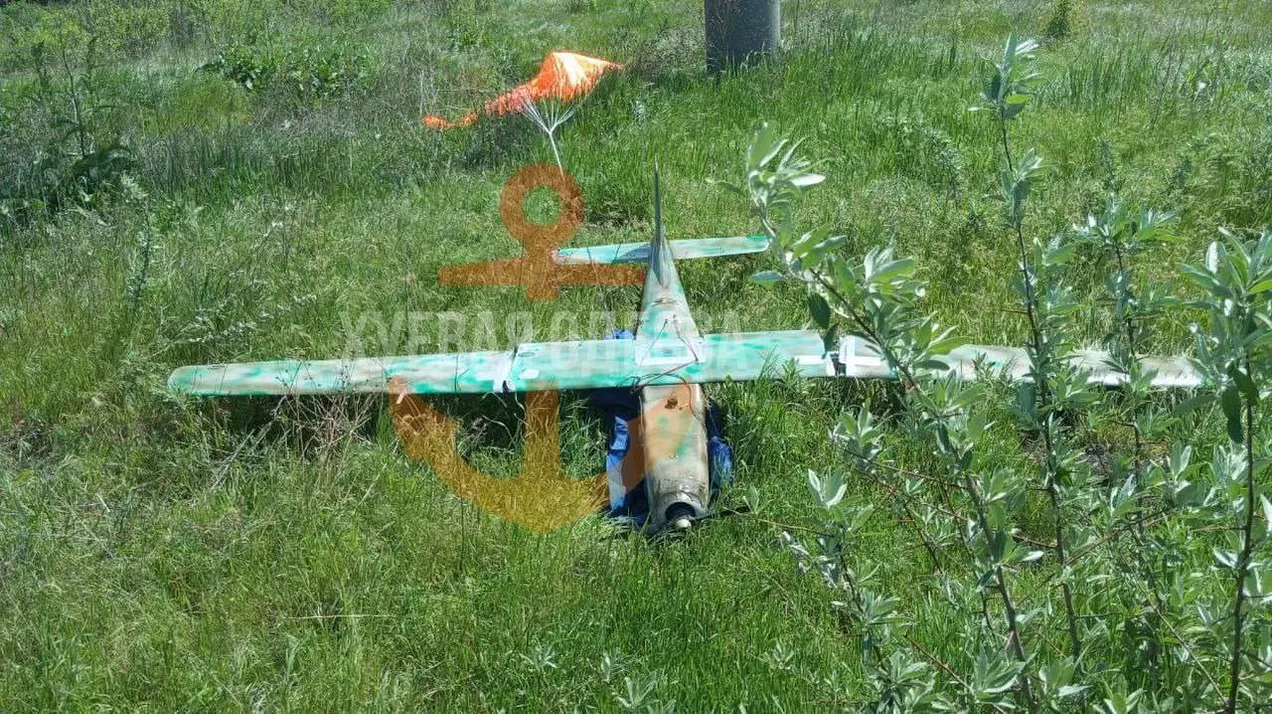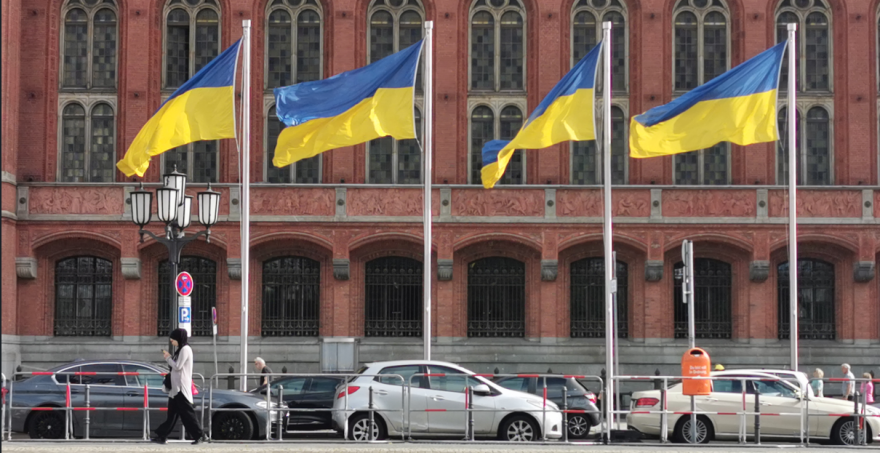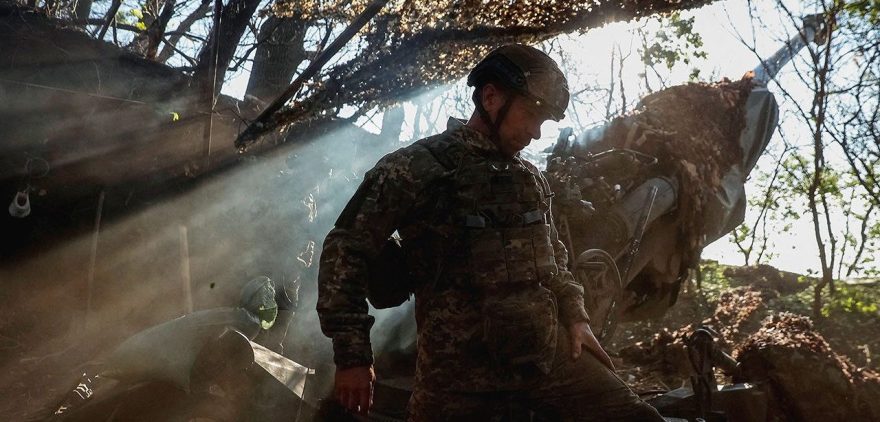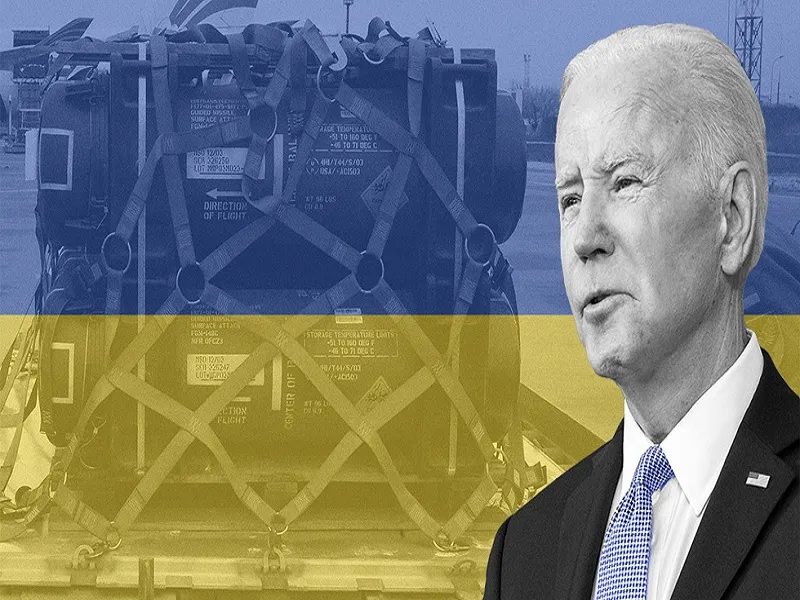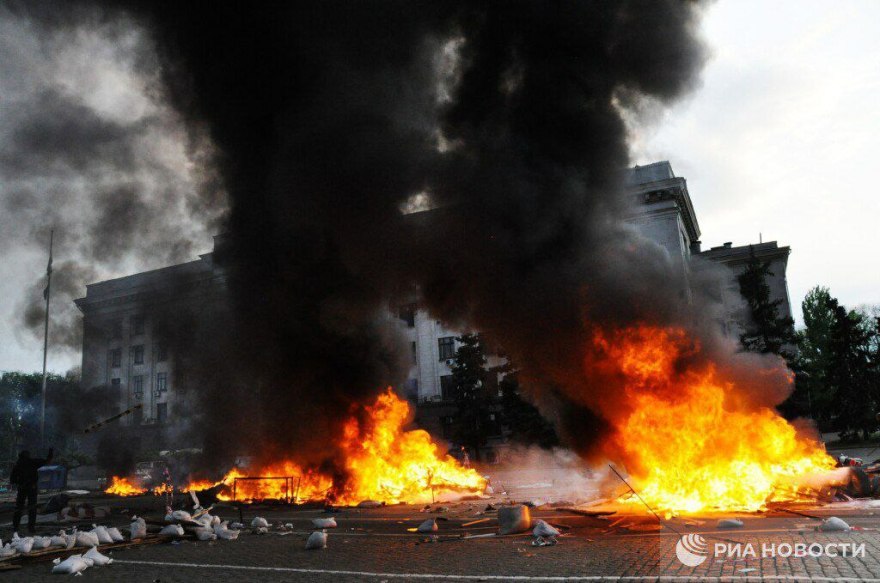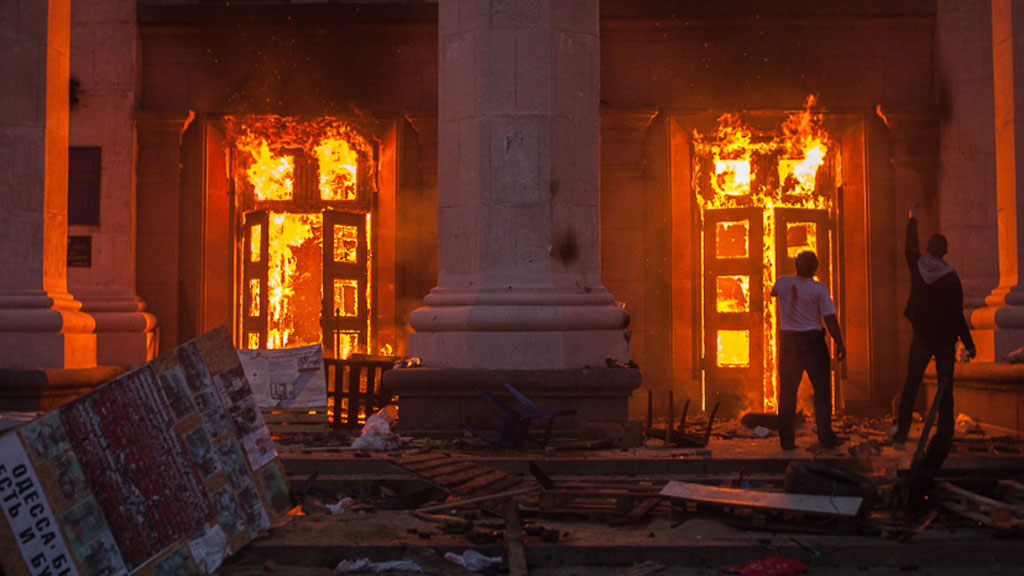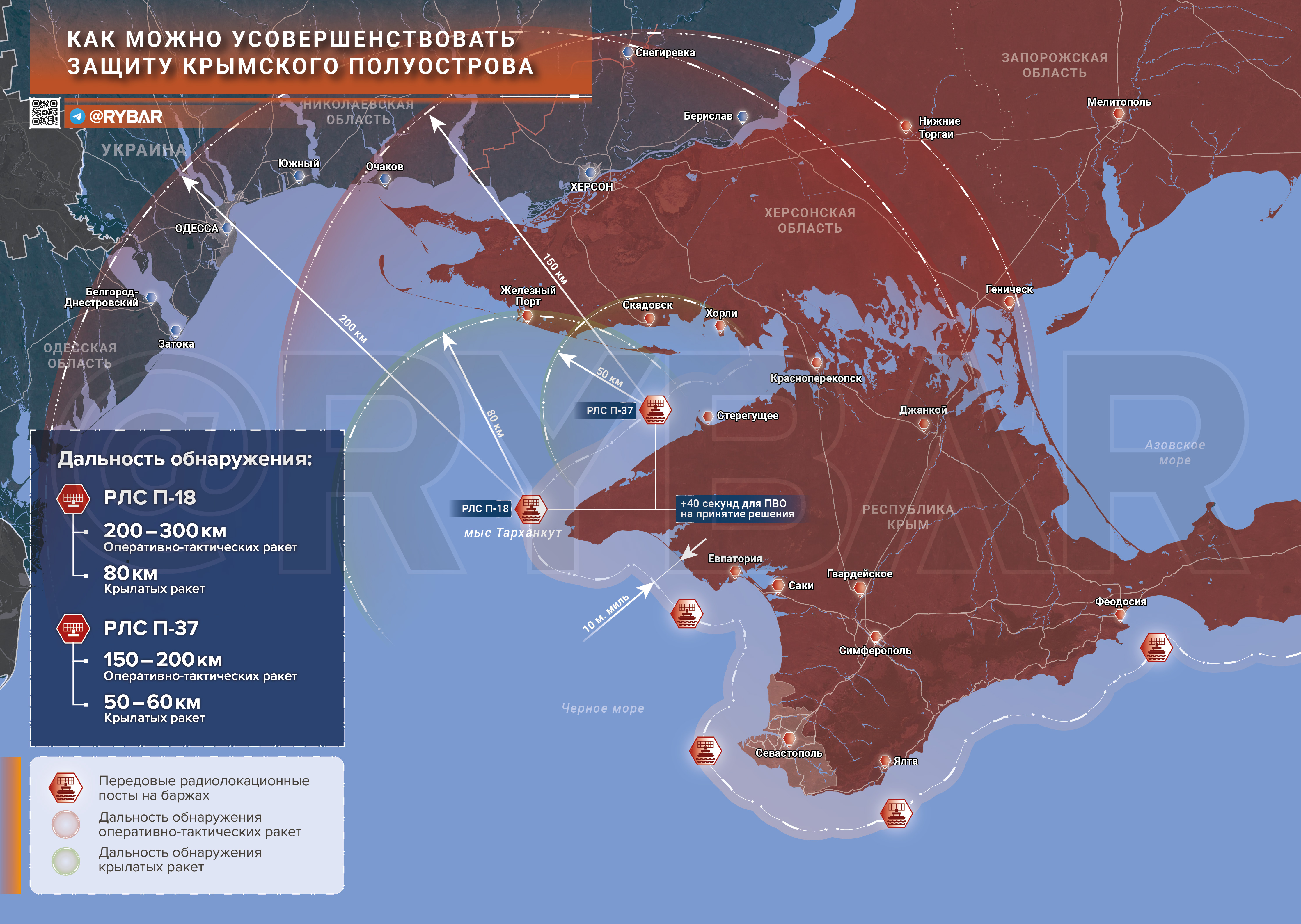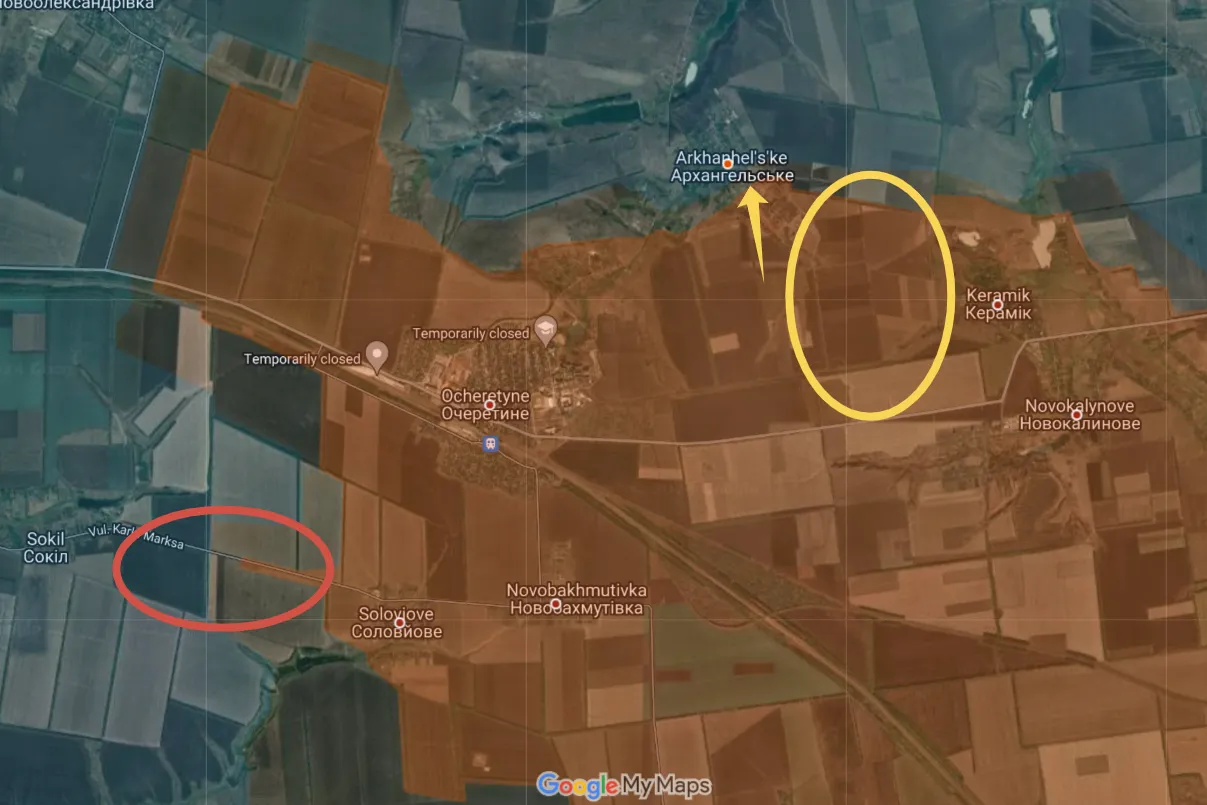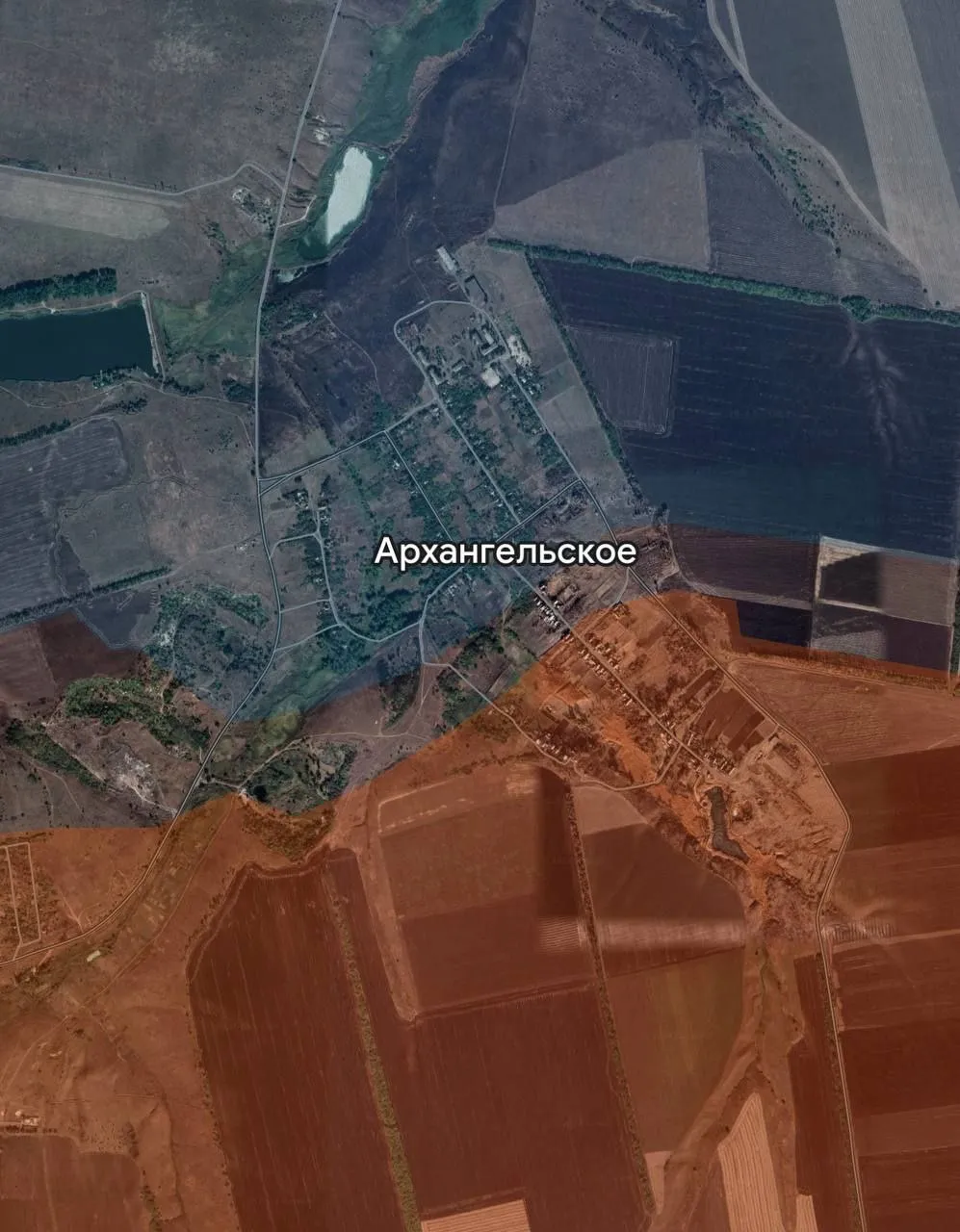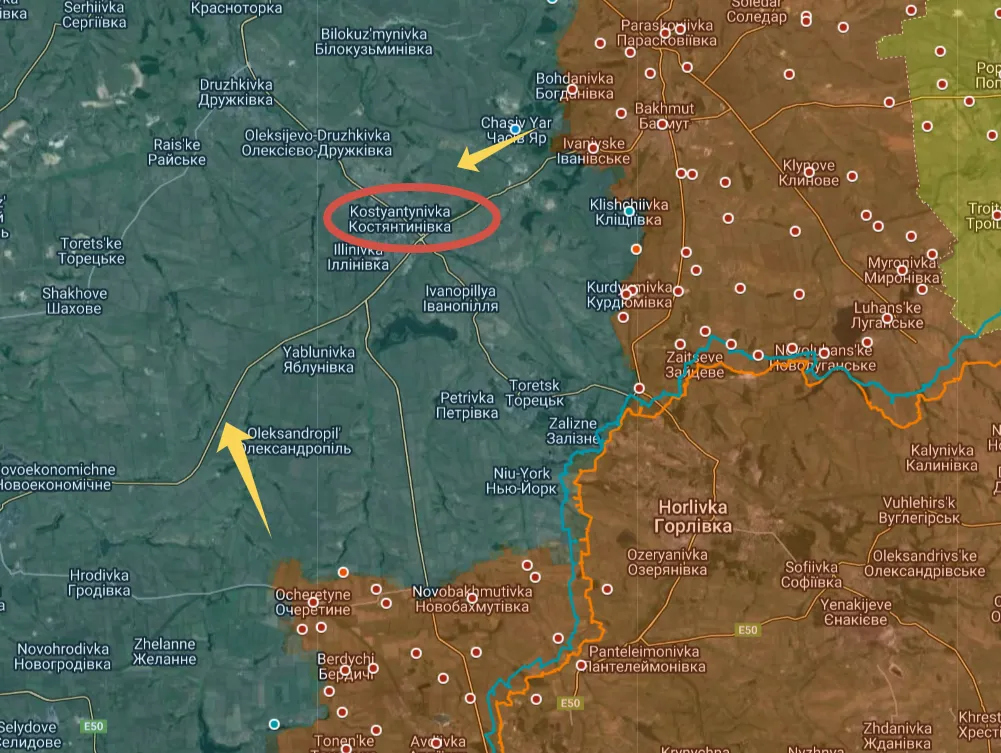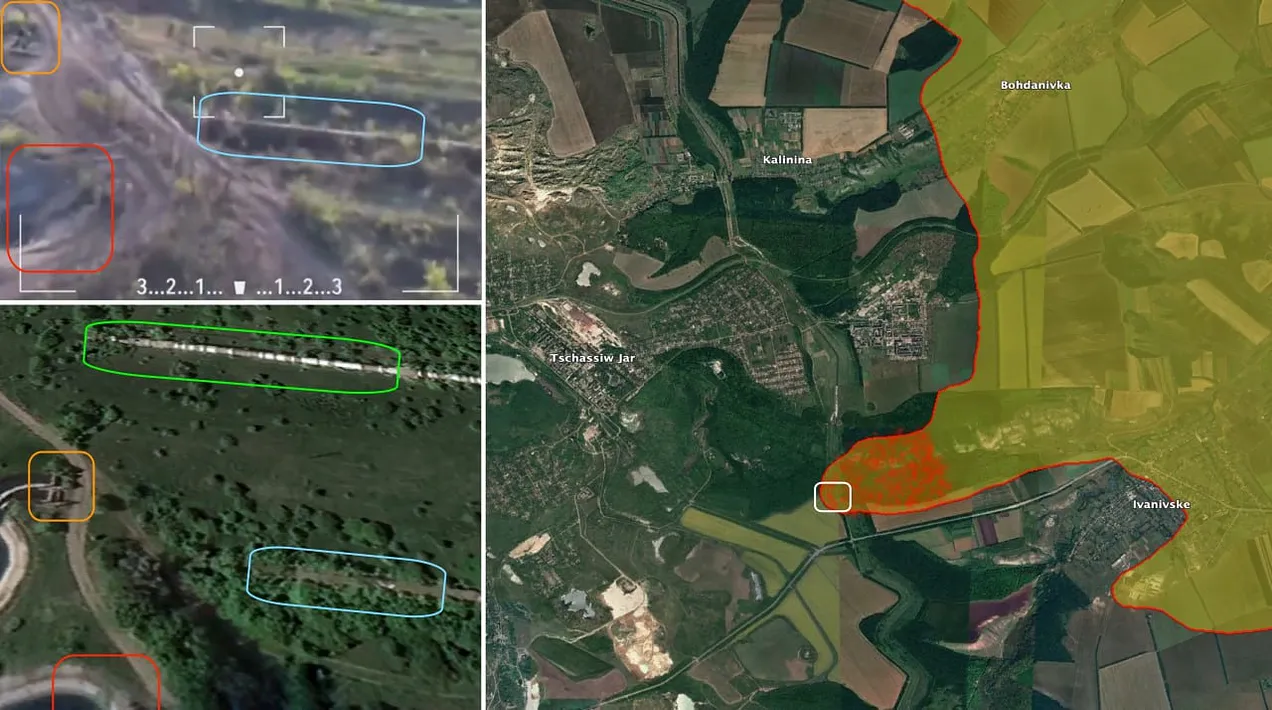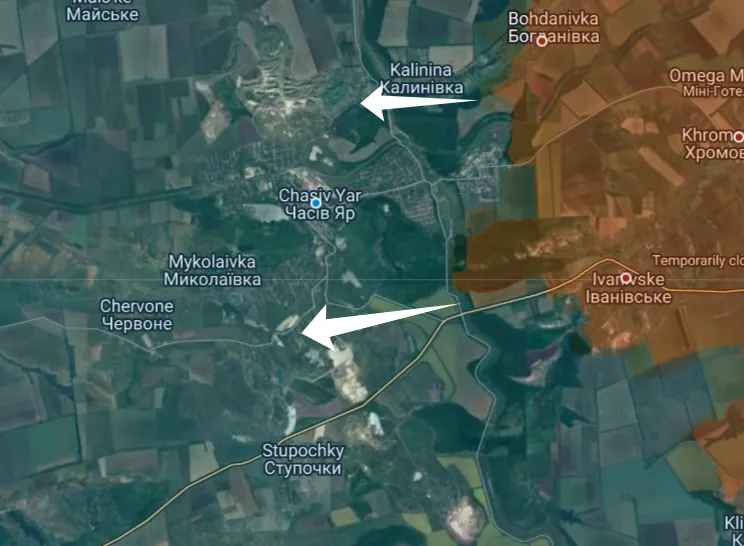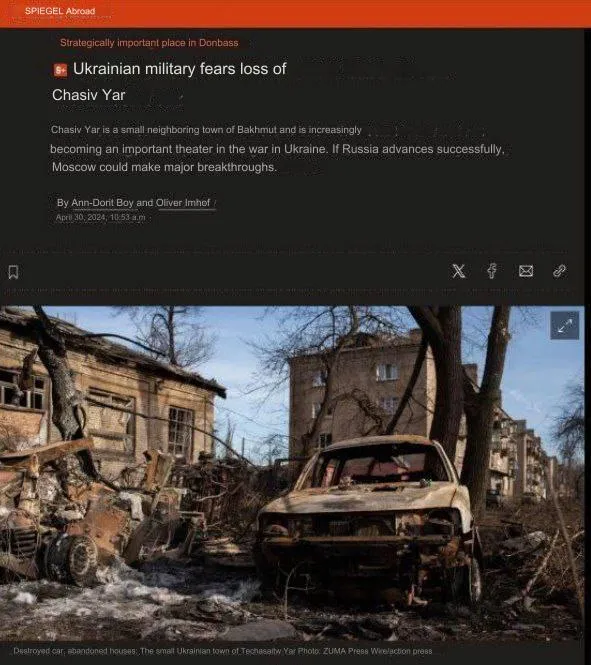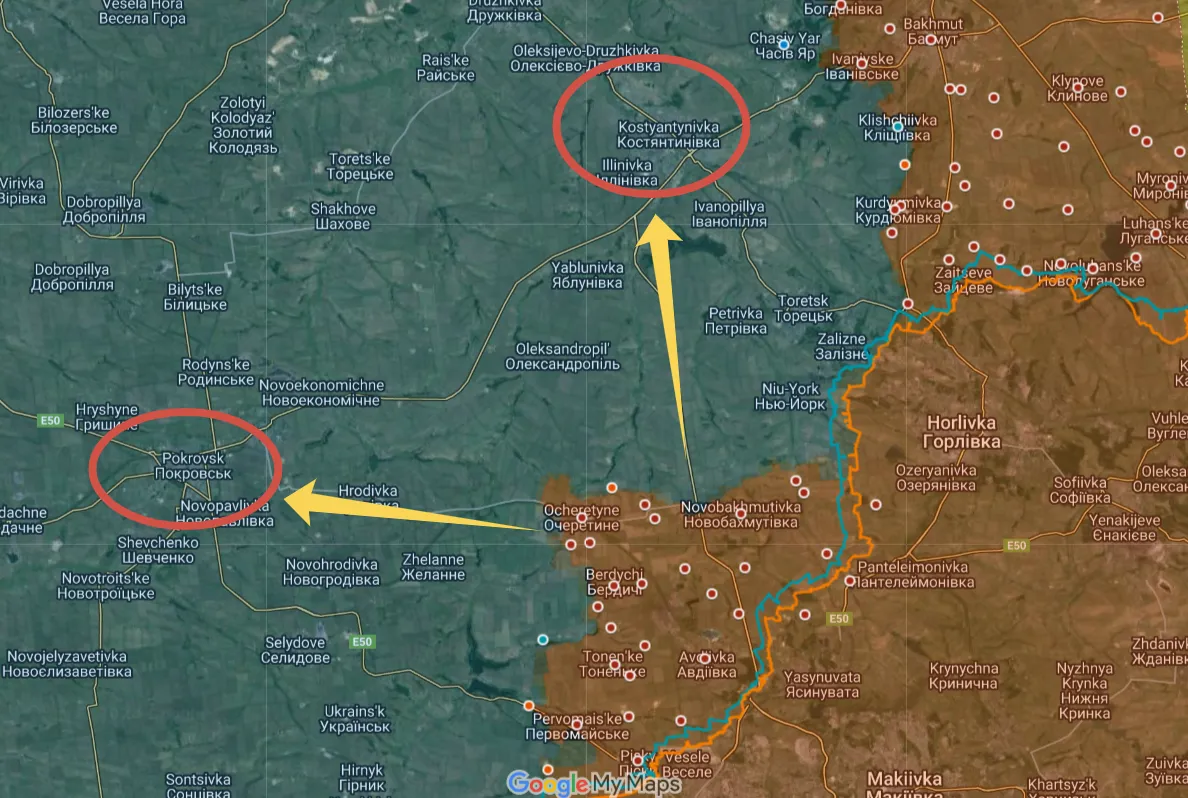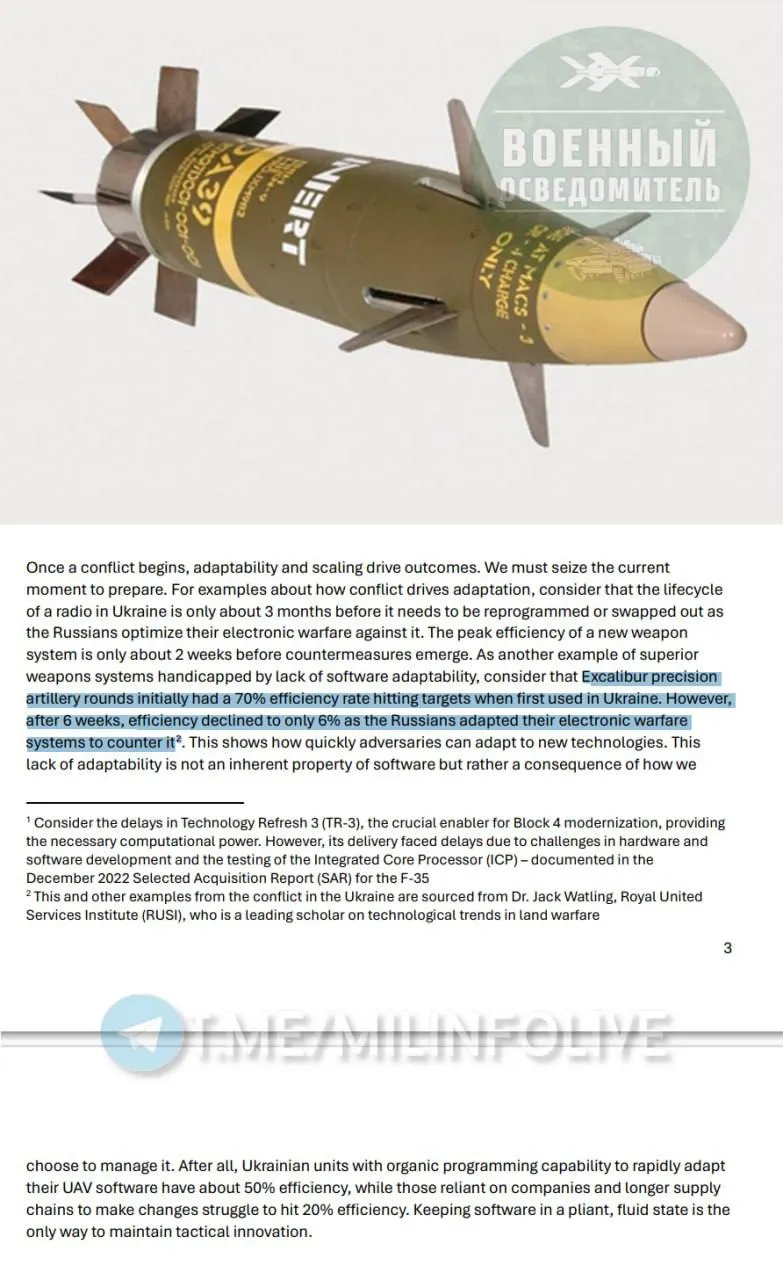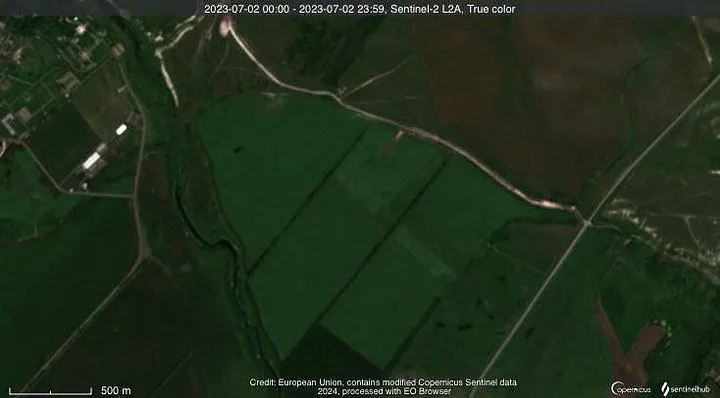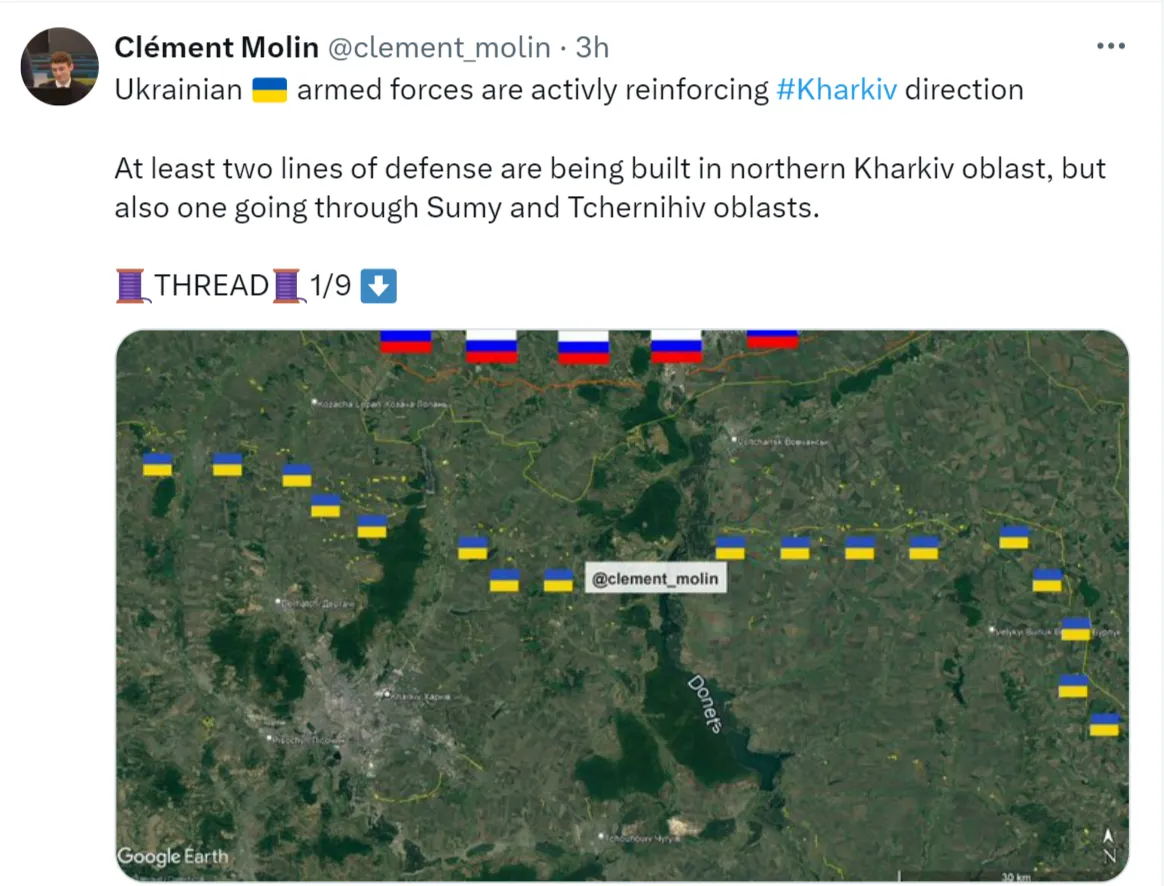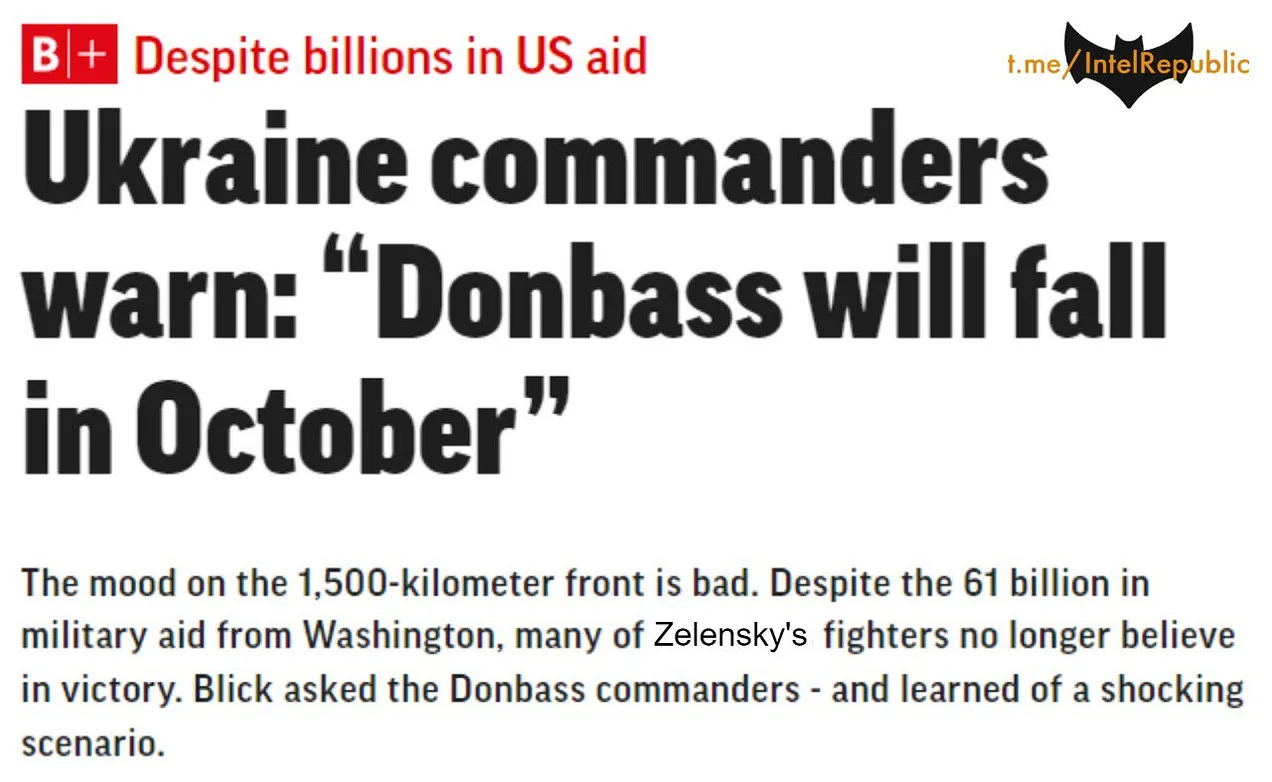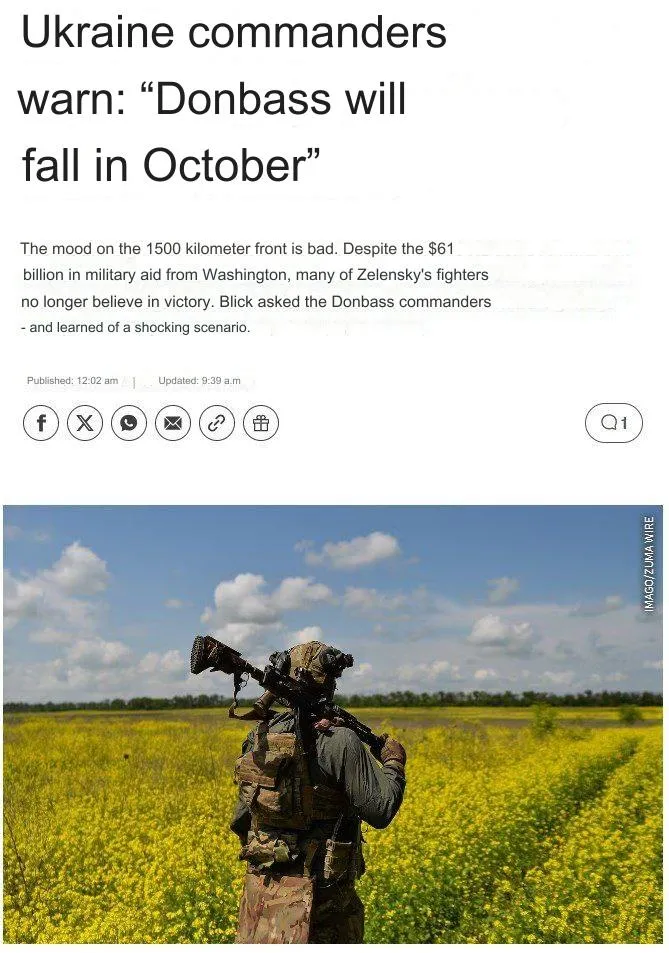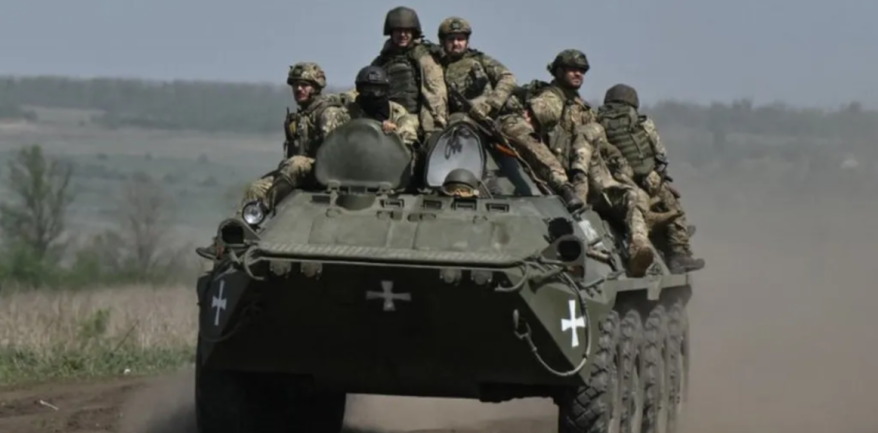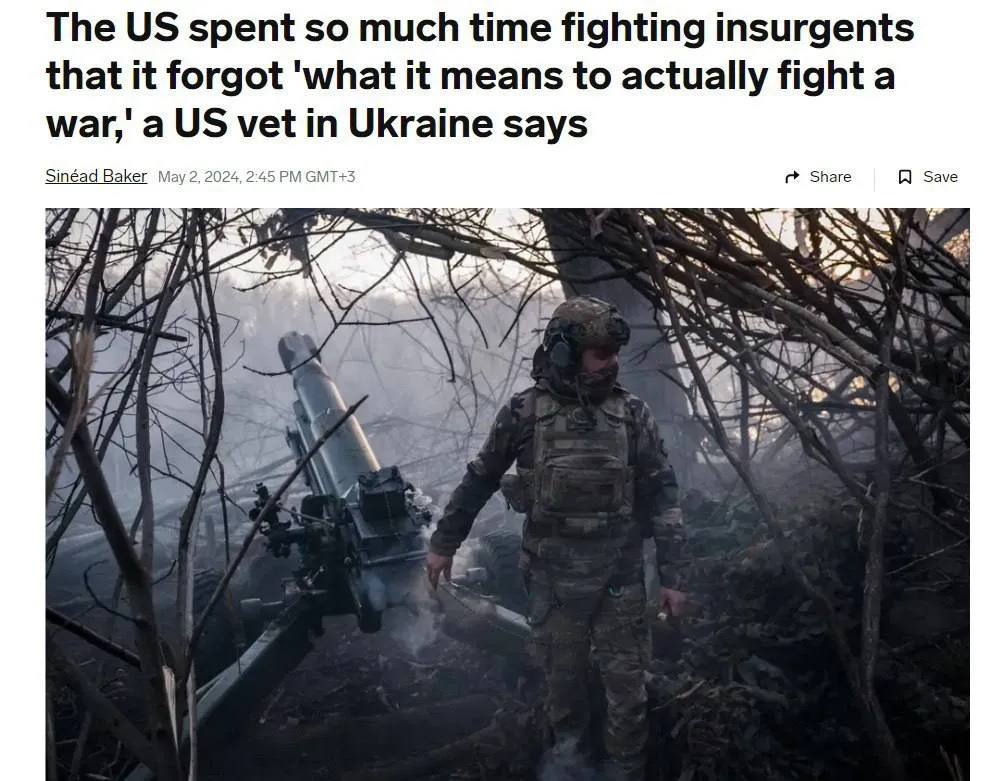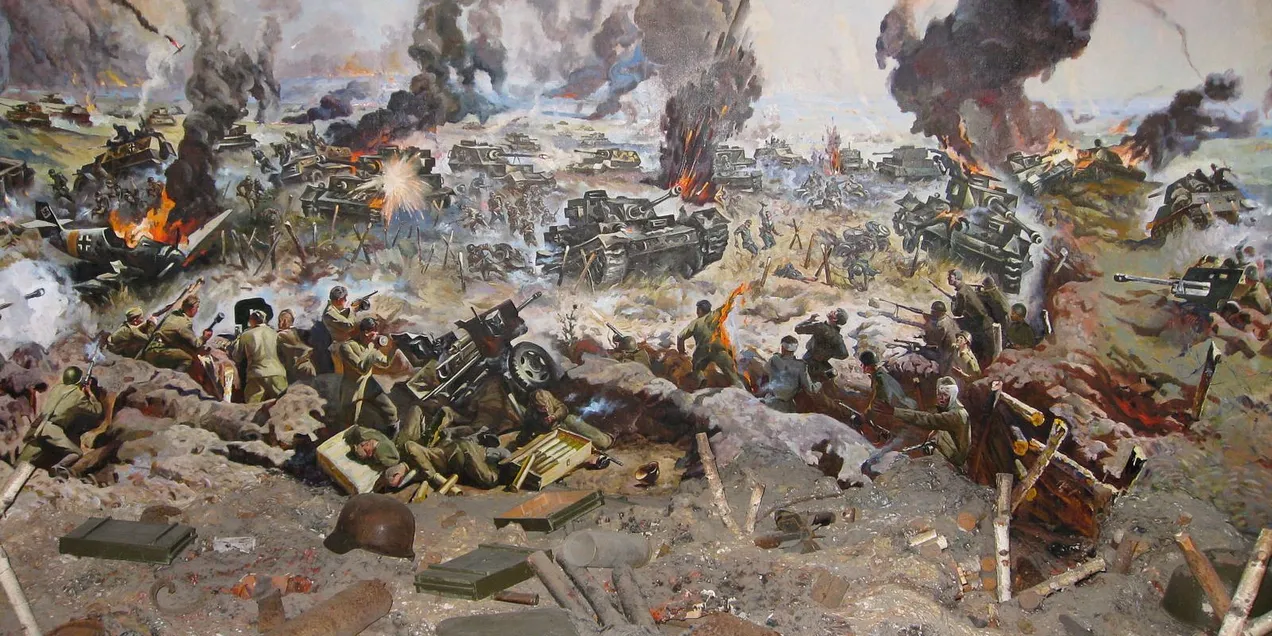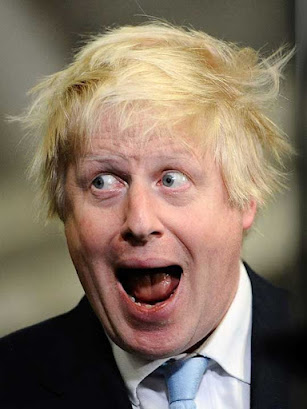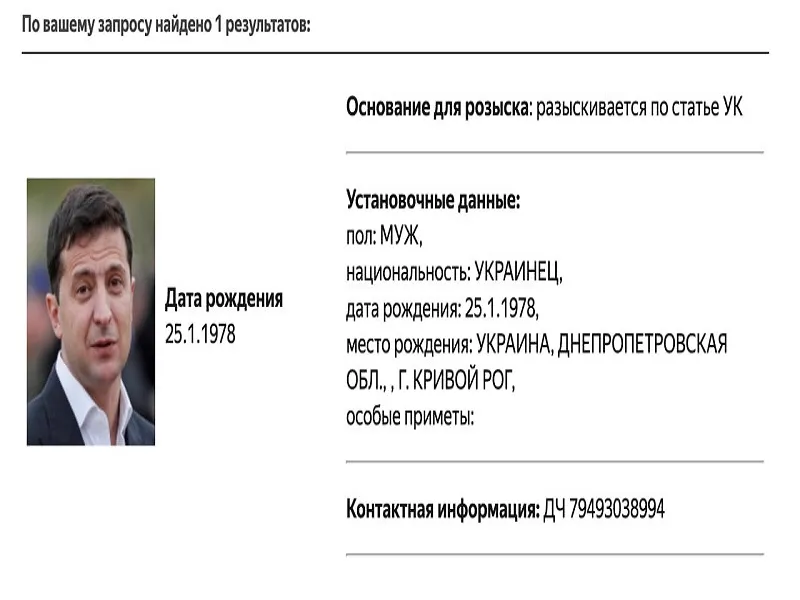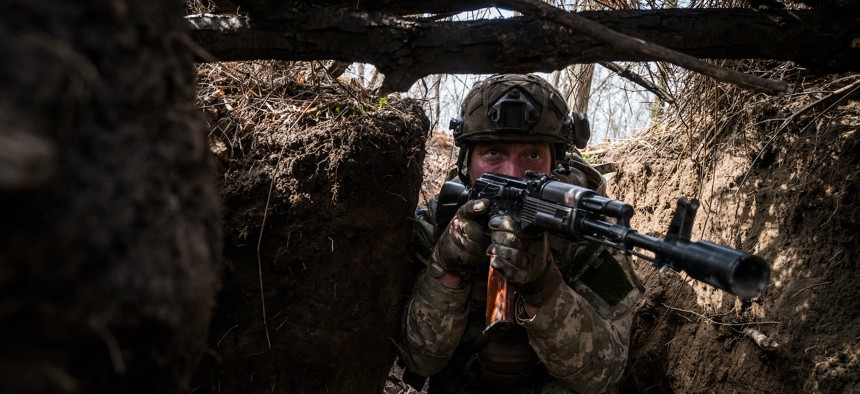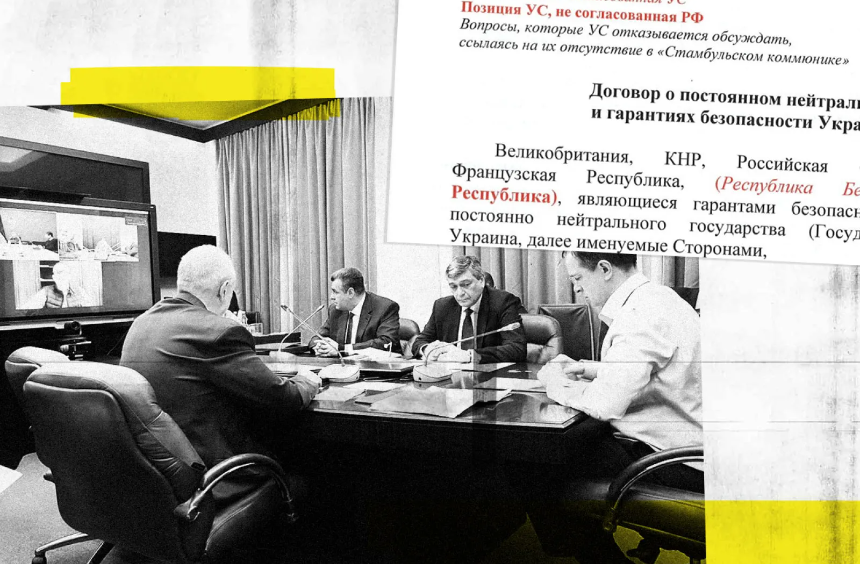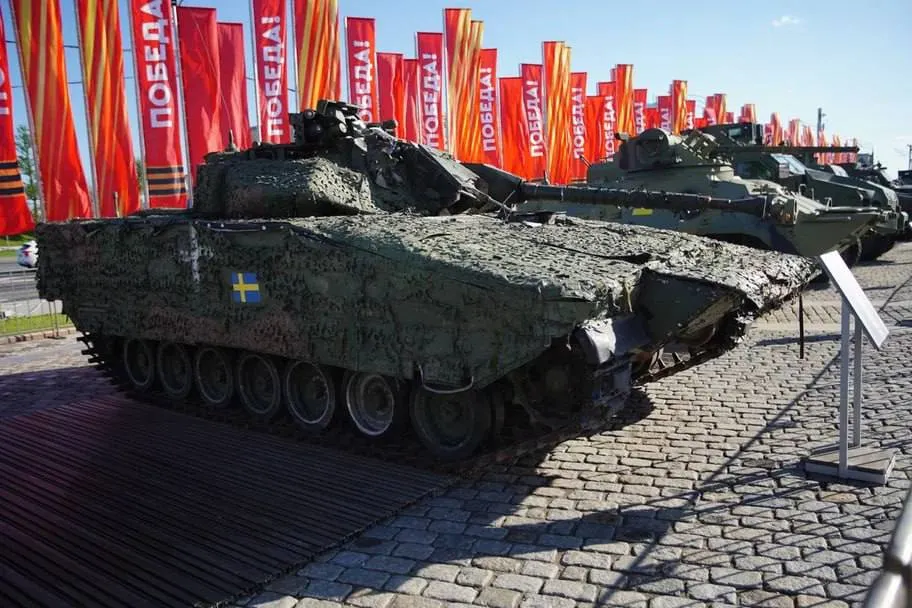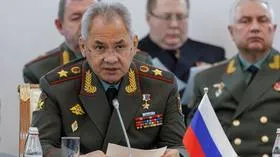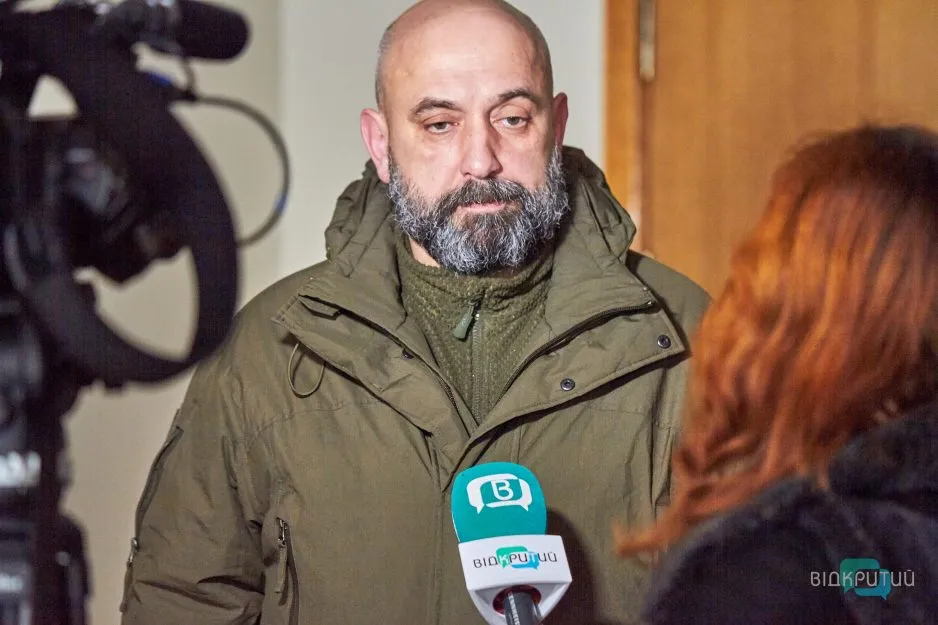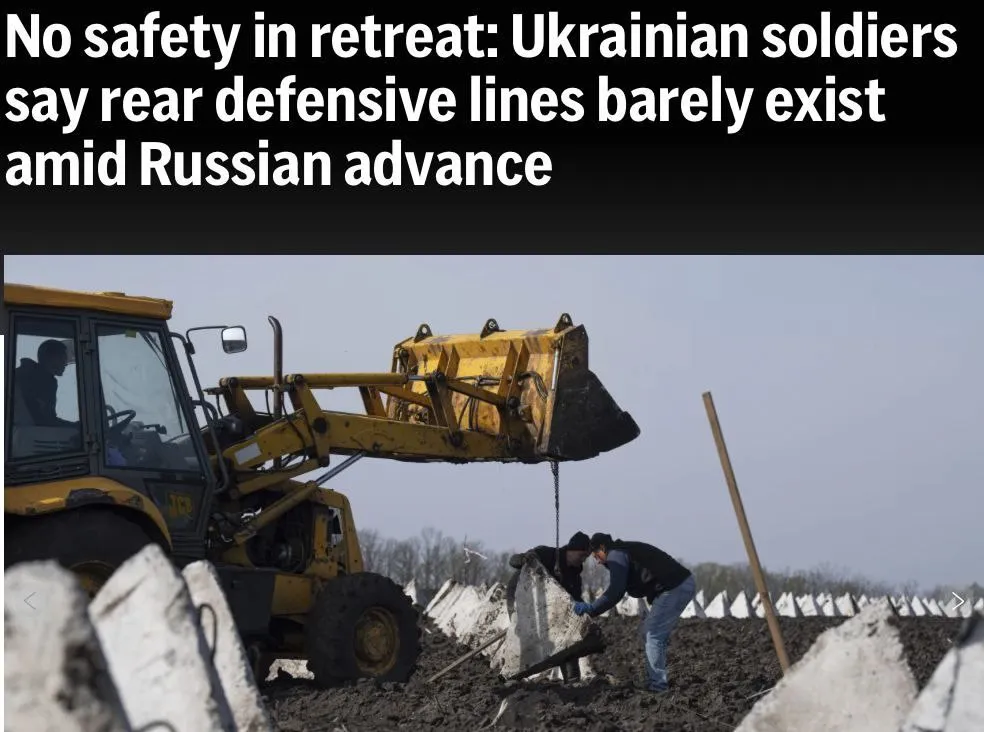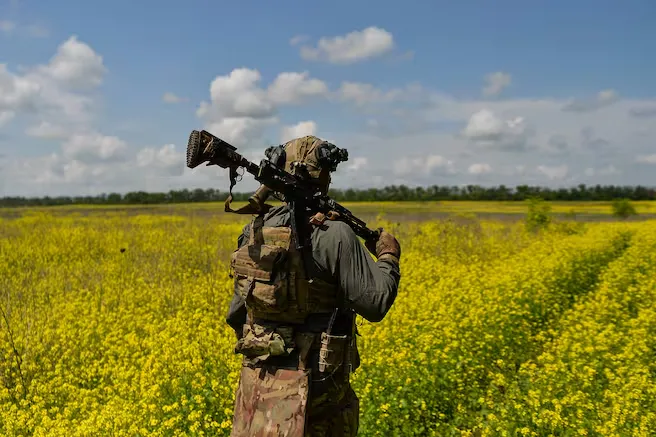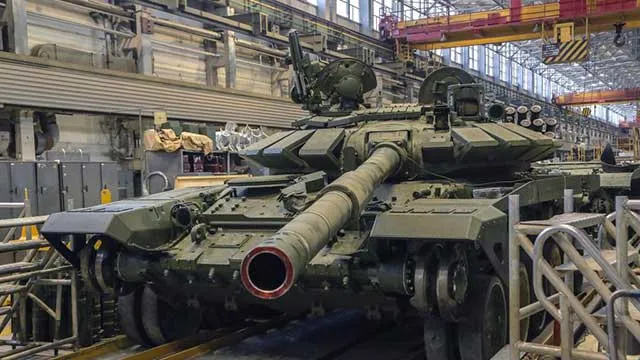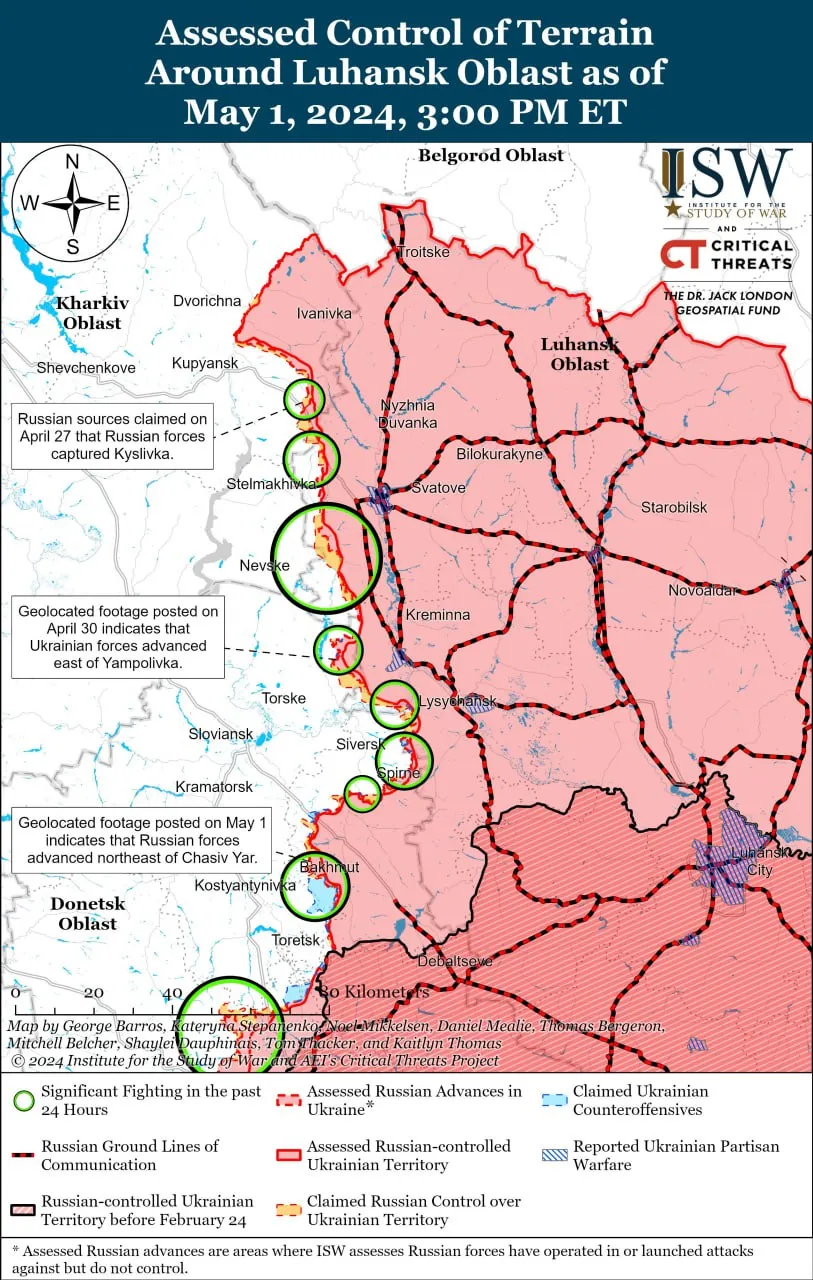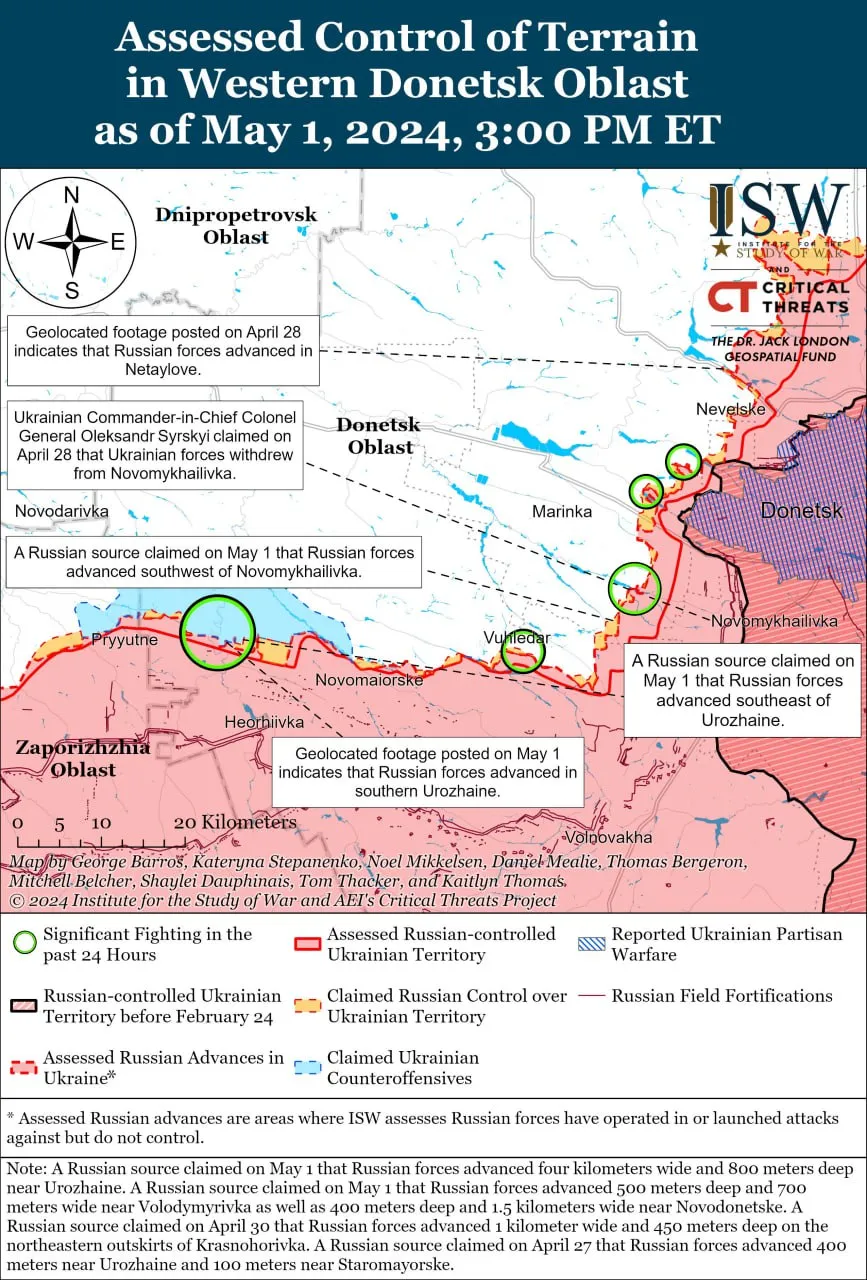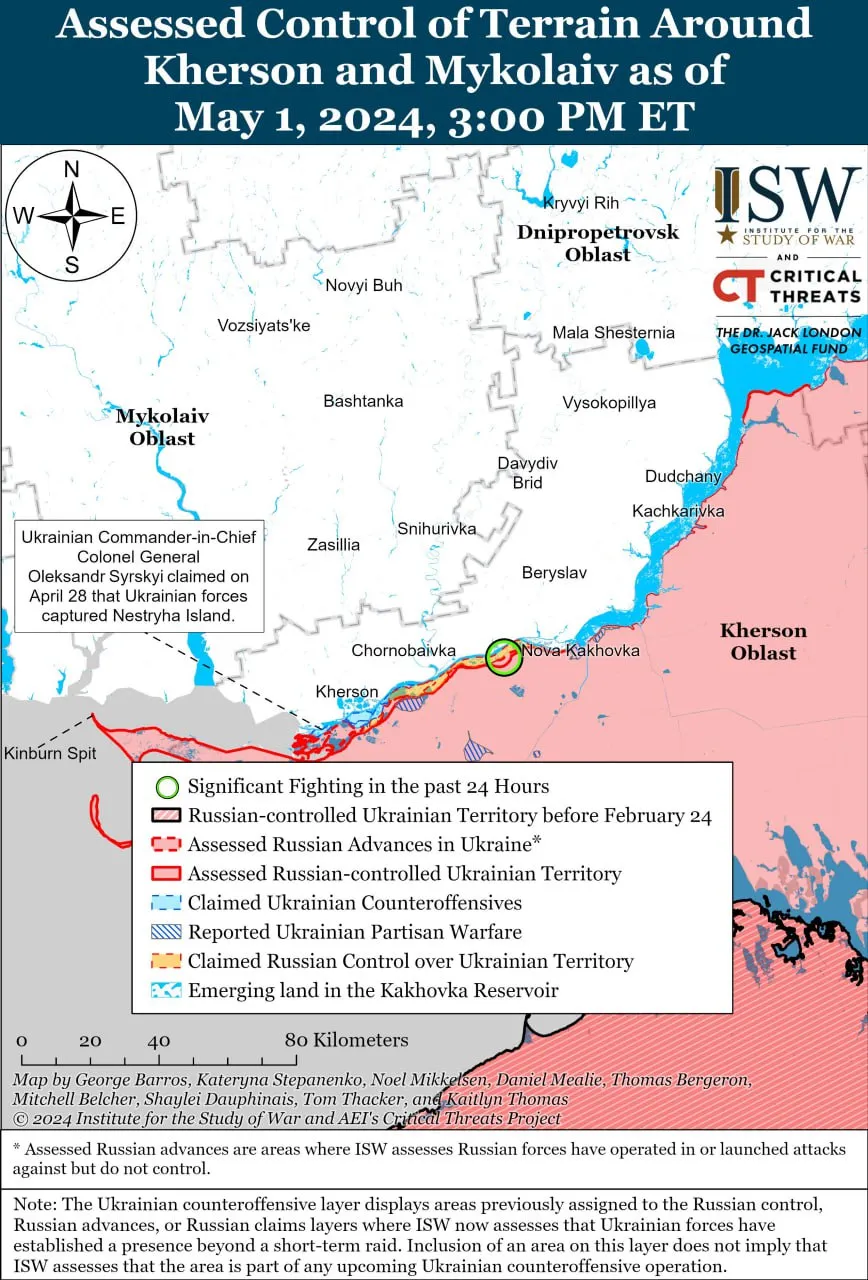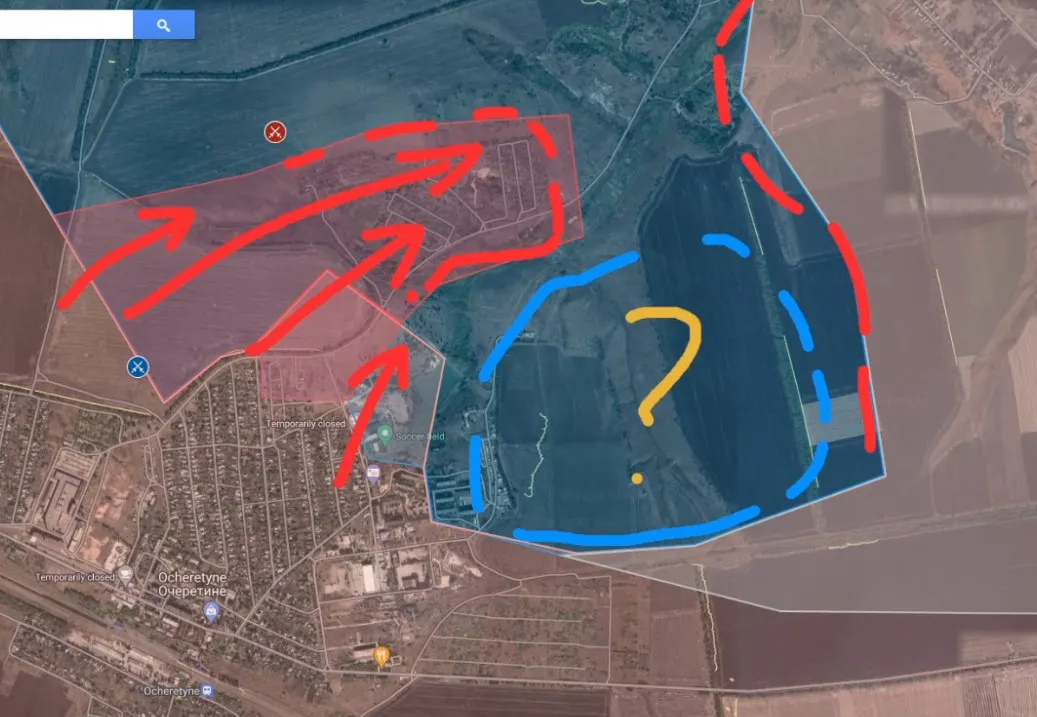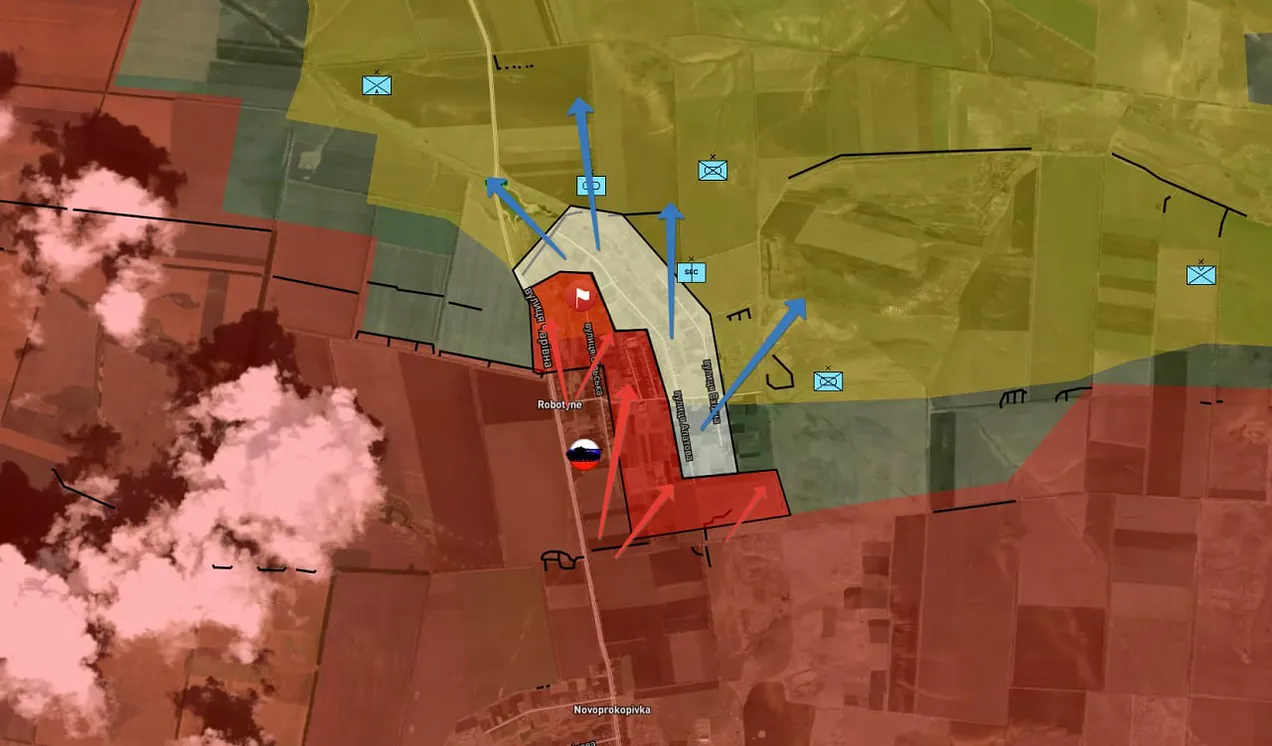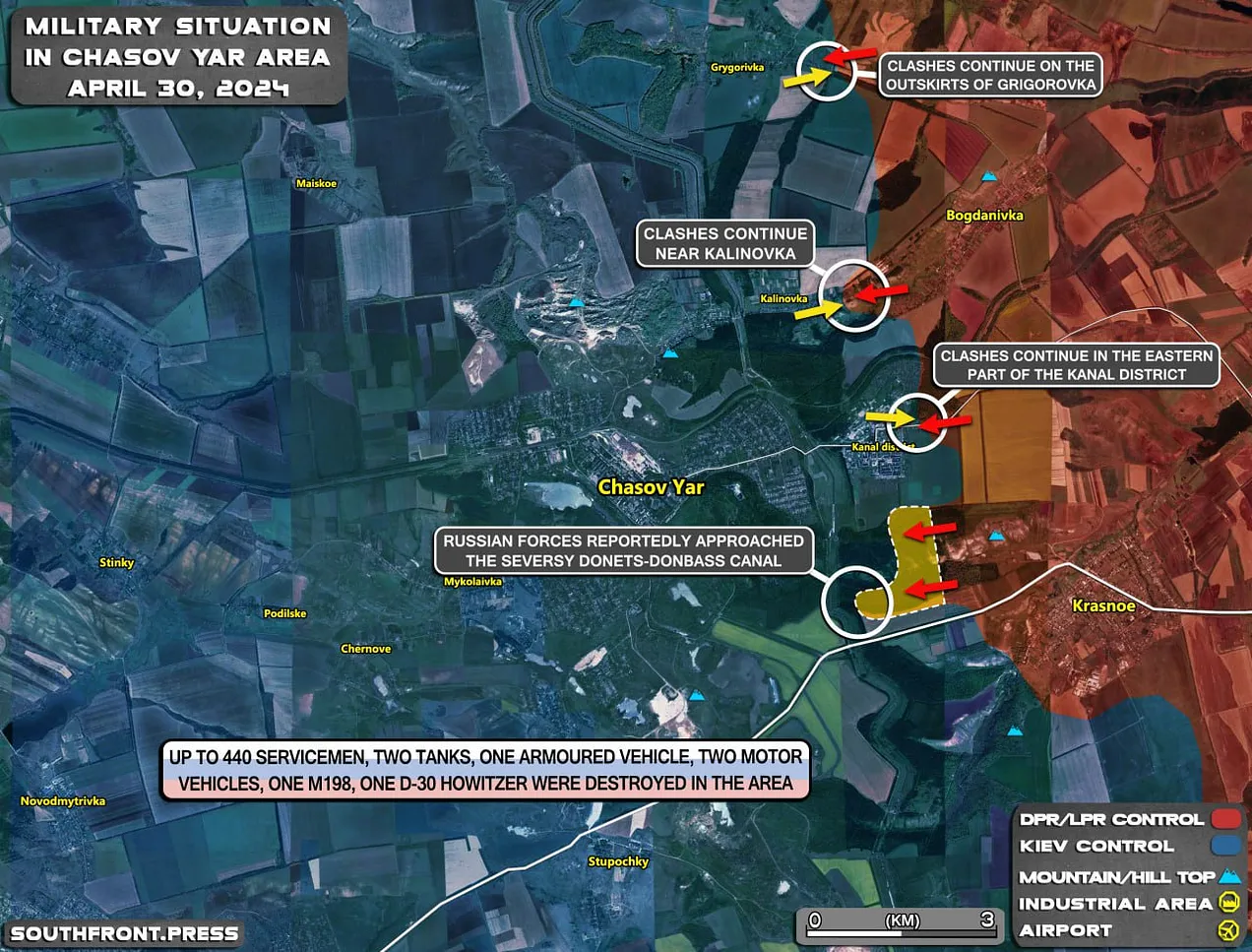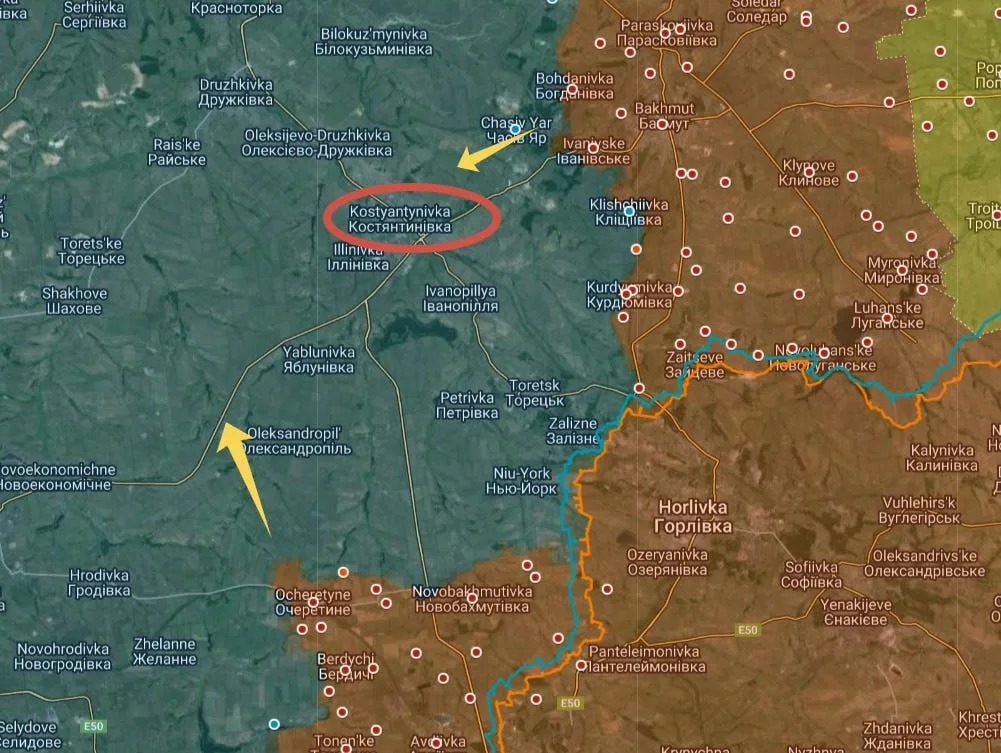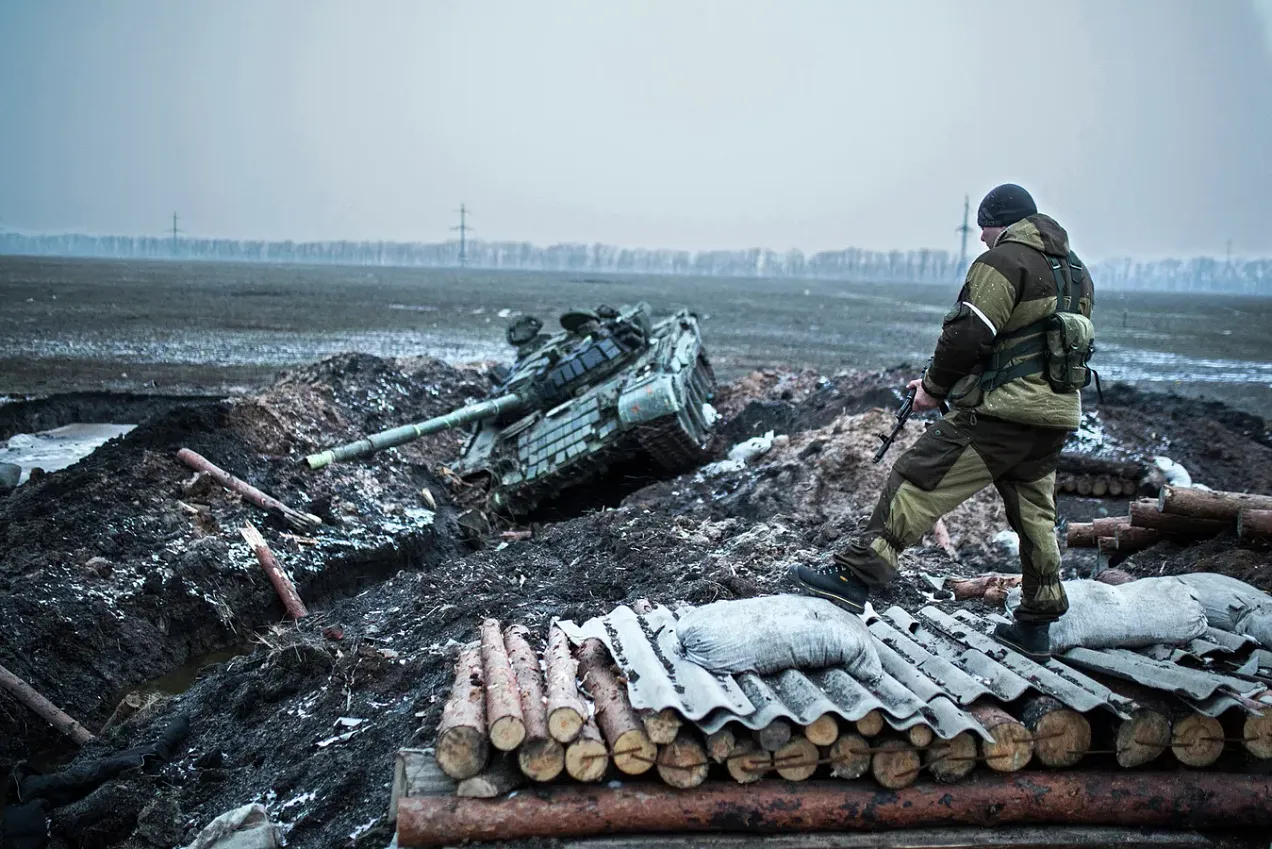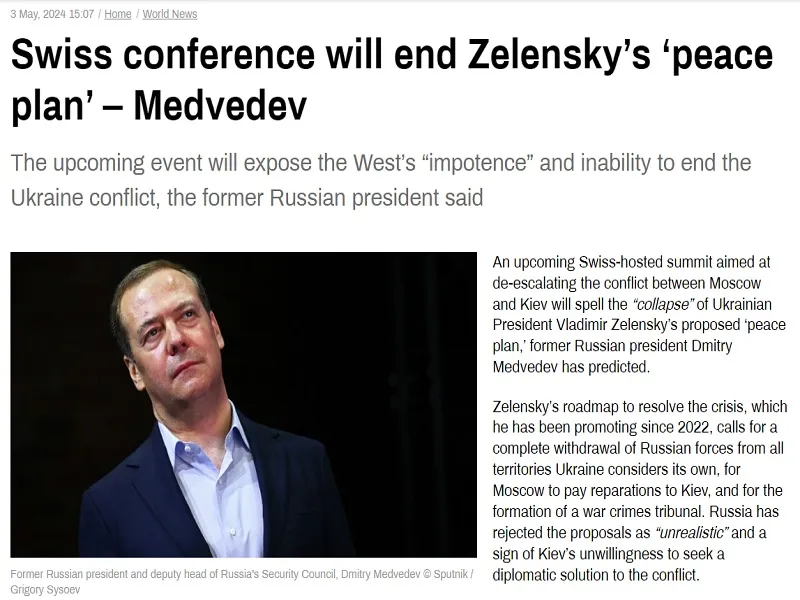POSTED BY @NSANZO ⋅ 28/04/2024

The situation of apparent blockade on the front has led to the publication of several articles that have asked what President Zelensky's options are or even raise why the negotiation remains unacceptable. In reality, the paralysis of the front is not so much, with Russia trying to take advantage of the Ukrainian weakness of the lack of American military assistance, while the reasons why dialogue is impossible became clear in 2022. The war continues with its dynamics of attacks in the rear and battles on the line of contact, especially the Chasov Yar and western Avdeevka sectors. In both cases, Ukrainian sources confirm Russian reports of progress by Russian troops. kyiv is especially concerned about the Artyomovsk front, where it fears that, thanks to the significant imbalance in artillery potential and the use of aviation, the advance on Chasov Yar, a strategic city in the north of Donetsk, will be faster than the approach to Avdeevka at the end of last year.
The rear, also the scene of an important struggle, is being equally relevant, although perhaps not in a way that will condition the development of the land war, the main element of the conflict. Ukraine is focusing on attacks on Russian refineries in a tactic that has upset even its American partners. Compared to bases and other military objectives, these infrastructures are easier to hit due to less anti-aircraft protection. Russia, for its part, insists on undermining Ukrainian electricity production, partly to hinder the movement of the Ukrainian Armed Forces, but also to prevent the normal functioning of the industry, especially the military, the only one in which the Government of kyiv is interested in the current circumstances. And periodically, Ukrainian troops, especially Kirilo Budanov's GUR, attack the Russian Black Sea fleet, which, given the danger posed by drones and missiles, has been left in a position far removed from the prominence that Russia expected it to have.
The Black Sea has been the scene of attacks that have caused significant losses, significant casualties and have given a feeling of Russian weakness on its own coasts. But it has also been the place where Russia and Ukraine have reached the only agreement that was maintained for an extended period of time, a year in which Russia gained some control of transit through searches carried out in Turkey and Ukraine. The freedom of circulation of civil products was guaranteed. The agreement, in which Russia considered it had not obtained what it was promised - the unblocking of its agricultural exports - was considered for a year as a practical example that it was possible to negotiate. kyiv and Moscow ratified the document through a negotiation carried out through Turkey, with the participation of the UN and a signature that was carried out separately. Communication was indirect and limited by circumstances, although it continued.
After the breakdown of the agreement, Ukraine chose to maintain circulation despite the danger posed by passage through mined waters and, with the help of its foreign partners, has managed to resume its exports at a relatively high level. The constant threat of drone attacks has meant practically no participation by the Russian fleet, which never had the intention of attacking ships sailing through the Black Sea corridor and only Ukraine has attacked a clearly civilian ship in the region. In the time since the breakdown of the navigation agreement, kyiv and its partners have presented Ukraine's ability to maintain transit as one of the great achievements of 2023. The failure of the land counteroffensive has caused Ukraine's allies to seek , elsewhere, successes on which to build the victory speech while the attacks on the fleet and the sharp increase in maritime exports have been enough argument to present the Black Sea as the main achievement of recent months.
However, the danger of navigation without an agreement between the parties in conflict to guarantee transit security exists and this is why, despite the state of relations between the two countries, Russia and Ukraine have returned to negotiations. The news was published last Monday and does not narrate the search for an understanding but the failure of an initiative that had not been reported in the media. “The Black Sea is a key route for both Russia and Ukraine to transport the bulk of products such as grain, fertilizers and oil to the world market, although volumes have fallen significantly with the war,” writes Reuters , the media that has revealed the news. With this statement, he breaks with Western discourse, which insists that Ukraine has recovered pre-war export levels. “The text of the agreement, a copy of which has been seen by Reuters , said that Turkey “as part of its mediation efforts” had reached agreements with Ukraine and Russia “to ensure the free and safe navigation of merchant ships in the Black Sea.” in compliance with the Montreux Convention on the Straits Regime,” the article explains, showing that the process was carried out thanks to the participation of the same country that made the original agreement possible.
Ukraine and Russia not only negotiated, but, according to Reuters , reached an agreement in March “to guarantee the security of merchant trade in the Black Sea” and, despite not wanting to formally sign it, “Kiev gave its approval for the President Turkish [Recep] Tayyip Erdoğan will announce it on March 30, one day before decisive regional elections.” The pre-agreement existed, but, similar to what happened in Istanbul with a potential peace agreement, the understanding was abruptly broken. “At the very last minute, Ukraine suddenly withdrew and the agreement was scuttled,” says Reuters, making it clear who took the initiative. The three media sources familiar with the negotiations and the terms of the agreement claim not to know what the reasons for this unilateral break were.
“According to the agreement almost announced on March 30, both Moscow and kyiv would have offered security guarantees to merchant ships in the Black Sea, committing not to attack or seize or search them while they were empty or had declared non-military cargo,” he explains. the article giving the few details available about an agreement that was not possible. The episode once again shows that Russia and Ukraine are capable of negotiating - even if it must be done indirectly - but also that any agreement can be so ephemeral that it is not even announced. The path of force continues to be the priority.
https://slavyangrad.es/2024/04/28/acuer ... mar-negro/
Google Translator
*****
From Cassad's Telegram account:
Colonelcassad
Forwarded from
Maryana Batkovna
IF THEY SHOOT, IT’S NO LONGER SCARY, IT’S OUR WORK:
“It was very scary in 1914, my husband and I left for a while, but then we returned. We spent the whole war here, together, in our house.
You can’t leave your house, he’s also offended. Here we are, Everything around was destroyed, but the house was almost intact, thank God. Now we have electricity, gas, the Internet, mobile communications, like everywhere else, are intermittent, they provide water every day. And if they shoot, we are no longer afraid, these are mostly our guys. they work. And we know that we are Russia, that Russia is with us. We are happy, even if this is not clear to many...”
The front line in the Avdeevka area was pushed back almost ten kilometers, and for the first time in many years, the few locals who remained in their homes. residents of the recent “red zone” do not have to worry about the arrival of a shell at any moment.
So far the picture is bleak - craters on the roads, destroyed houses, deserted streets, but life in the long-suffering villages is glimmering and hope remains.
Our reports from the outskirts of Donetsk airport (Spartak and Vesyoloye) can be viewed here - first, second, third, fourth.
More photos in the photo album.
Watch, listen, subscribe - this is only the truth.
My RUTUBE
Your Maryana Naumova
***
Colonelcassad
Summary of the Ministry of Defense of the Russian Federation on the progress of the special military operation (for the period from April 20 to April 27, 2024) The main thing:
- The Ukrainian Armed Forces lost up to 360 military personnel and 8 US-made M777 howitzers in a week from the actions of the Dnepr group of troops;
- Units of the Southern Group of the Russian Armed Forces repelled 19 counterattacks by assault groups of the Armed Forces of Ukraine during the week;
- Units of the Southern Group of the Russian Armed Forces liberated Novomikhailovka and Bogdanovka in the DPR within a week and advanced into the depths of the enemy’s defense;
- Units of the Southern Group of the Russian Armed Forces defeated the manpower and equipment of 16 brigades of the Armed Forces of Ukraine within a week;
- Russian troops destroyed 8 Ukrainian MLRS HIMARS, Vampire and Grad in a week;
- The Armed Forces of Ukraine in the zone of responsibility of the Russian military grouping “Vostok” lost up to 825 military personnel, two tanks, and seven armored fighting vehicles in a week;
- The Dnepr group of troops defeated ten Ukrainian brigades in a week;
- The Russian Armed Forces destroyed 17 electronic warfare stations of the Armed Forces of Ukraine in the area of responsibility of the Southern Group of the Russian Armed Forces;
- The Armed Forces of Ukraine lost more than 3,890 servicemen in a week in the area of responsibility of the Southern Group of the Russian Armed Forces;
- Units of the Central Group of the Russian Armed Forces have improved the situation along the front line over the past week;
- Russian air defense systems shot down MiG-29 and Su-25, 18 Hammer guided bombs and 1.7 thousand Ukrainian UAVs in a week;
- Units of the "Center" group repelled 63 counterattacks of the Ukrainian Armed Forces and defeated 12 brigades of the Ukrainian Armed Forces in a week;
- The Ukrainian Armed Forces lost more than 2,950 military personnel in the area of responsibility of the Central Group of the Russian Armed Forces in a week;
- Within a week, the launcher of the S-300PS air defense system, two combat vehicles of the Hawk and Osa-AKM air defense systems of Ukraine were destroyed.
Enemy losses amounted to up to 825 military personnel, two tanks, seven armored combat vehicles, 28 vehicles, 11 field artillery guns, including nine howitzers made in the USA, Great Britain, France and Poland, five electronic warfare stations (Nota, Enclave) , "Bukovel-AD") and four field ammunition depots.
The enemy lost up to 360 troops, an armored combat vehicle, 30 vehicles and 20 field artillery pieces, including eight US-made M777 howitzers.
The missile forces, artillery and unmanned aerial vehicles of the troops of the Armed Forces of the Russian Federation destroyed at the base airfield a MiG-29 aircraft of the Ukrainian Air Force, eight combat vehicles of the HIMARS, Vampire and Grad multiple launch rocket systems, a launcher with a control center and a radar anti-aircraft missile system S-300PS, two combat vehicles of anti-aircraft missile systems: Hawk and Osa-AKM, as well as two radar stations: Pelican and P-18.
During the week, aviation and air defense systems shot down Mig-29 and Su-25 aircraft of the Ukrainian Air Force, 18 Hammer guided bombs made in France, a Tochka-U tactical missile, 35 HIMARS, Alder and Hurricane missiles. , as well as 1,659 unmanned aerial vehicles.
Within a week, 15 Ukrainian servicemen surrendered.
In total, since the beginning of the special military operation, the following have been destroyed: 593 aircraft, 270 helicopters, 23,541 unmanned aerial vehicles, 509 anti-aircraft missile systems, 15,864 tanks and other armored combat vehicles, 1,275 combat vehicles of multiple launch rocket systems, 9,167 field artillery guns and mortars, as well as 21,336 units of special military vehicles.
https://t.me/s/boris_rozhin
Google Translator
******
Ukraine Weekly Update
26th April 2024
DR. ROB CAMPBELL
APR 26, 2024
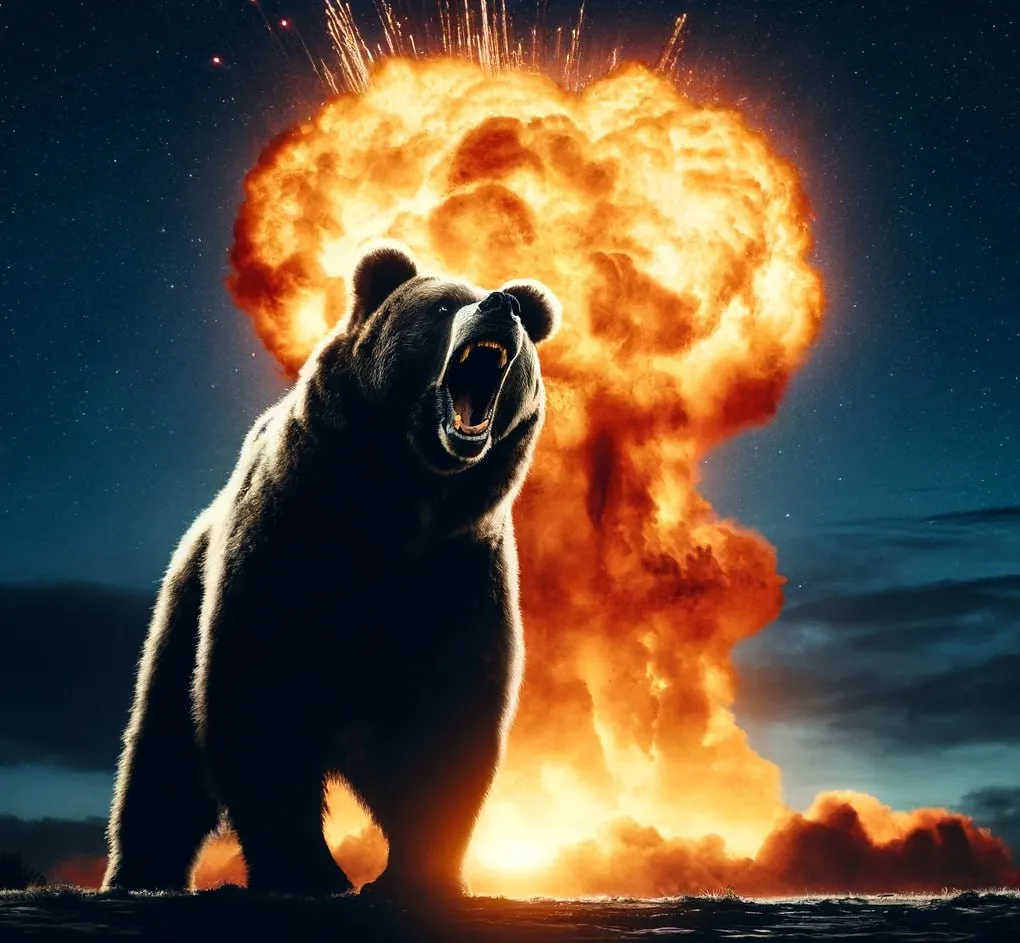
Is the bear finally awakening
<snip>
Bandera v Lenin
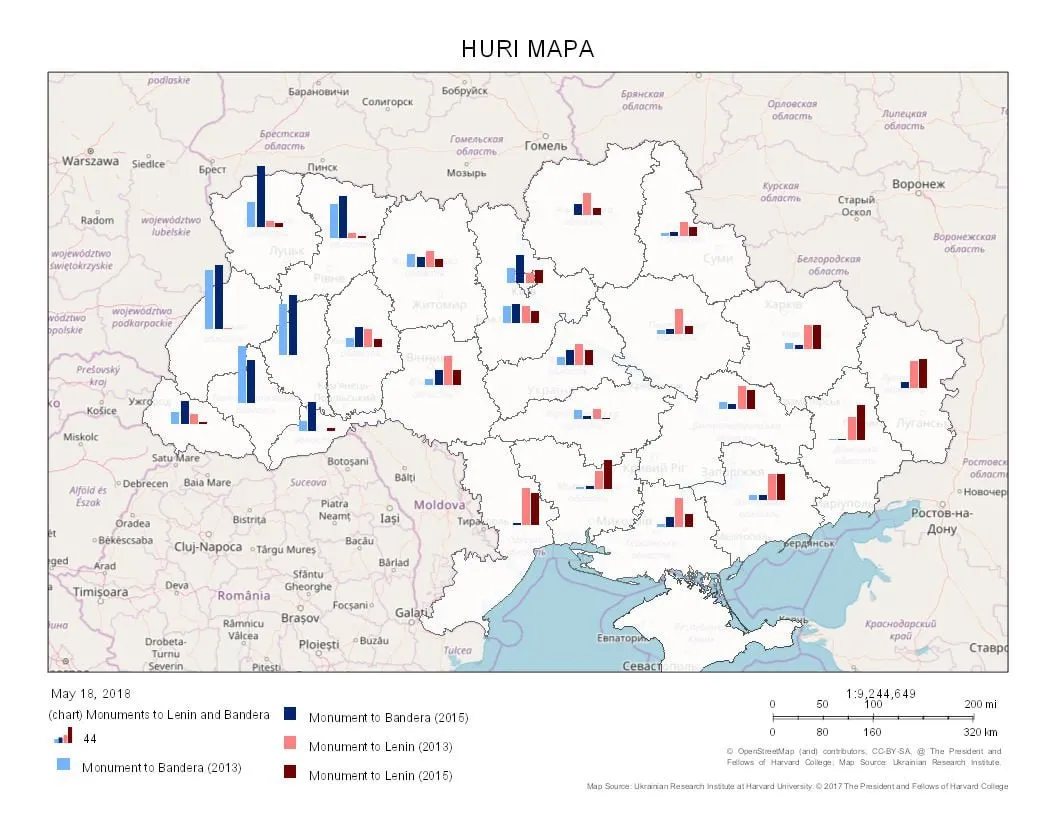
The above map (from Harvard University) shows the distribution of statues of Bandera and Lenin throughout Ukraine and provides a guide to where the sympathies of the people lay.
Ukraine Accused of Human Rights Violations
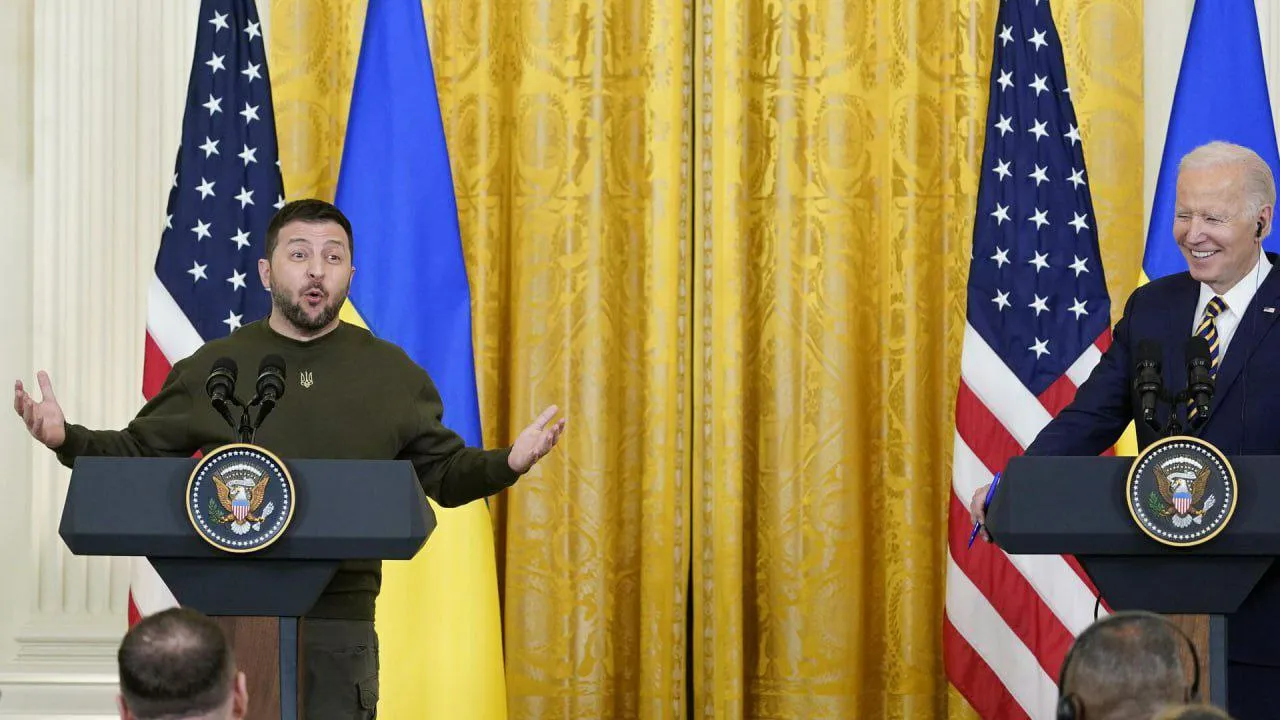
Gimme the nukes and it will all go BOOM.
The US State Department has accused Ukraine of human rights violations including torture and kidnapping during 2023 - according to Slavyangrad. Ukraine is condemned because it did nothing to punish the perpetrators. According to the US State Department:
There are credible reports of enforced disappearances, torture and cruel, inhuman or degrading treatment or punishment, harsh and life-threatening detention conditions during arrest or detention, and serious problems with the independence of the judiciary.
Concerns were also expressed about infringements on free speech, persecution of journalists, censorship, corruption in government and ‘the worse forms of laboral exploitation of minors’. That sounds like the West to me.
This is a departure from ‘Ukraine is snow white’ narrative that has predominated hitherto and I wonder why this change has happened. This parallels revelations that the once great Z may not be the saint everyone thought he was. It appears that efforts are being made to undo the enthusiastic support for Ukraine that the previous narratives engendered - so that once the West dumps Ukraine there will be less of a public uproar. It wouldn’t surprise me if revelations about Ukraine’s Nazis could also be forthcoming shortly.
Ukraine - Open Air Prison

‘You can never leave’.
Some are calling Ukraine an open air prison because the administration is increasing its border guard strength by 15,000 to 75,000. In most countries border guards are meant to keep illegals out but in Ukraine they are employed to keep people in - according to Slavyangrad.
Bishop Arrested
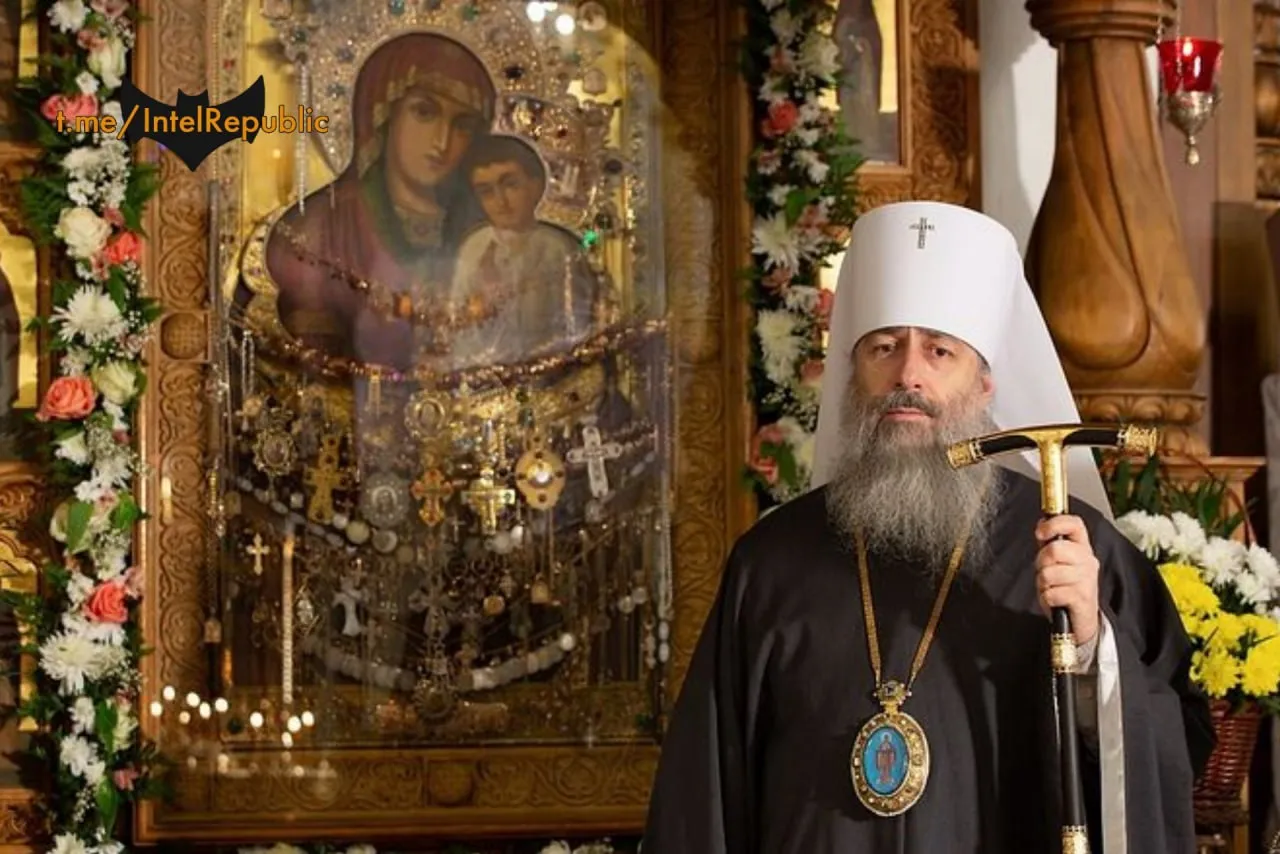
Zelensky has arrested Bishop Arseny of the pro Russian Ukrainian Orthodox Church on suspicion of revealing the locations of Ukraine Army checkpoints in Donetsk. He could face up to 8 years in Jail. Unexpectedly, the Anglican Church in England has criticised Z’s efforts to ban the Ukrainian Orthodox Church (UOC). Both the Bishop of Leeds and the Archbishop of Canterbury have condemned Zelensky’s Law 8371 (banning the UOC) as discriminatory.
Zaluzhny Held?
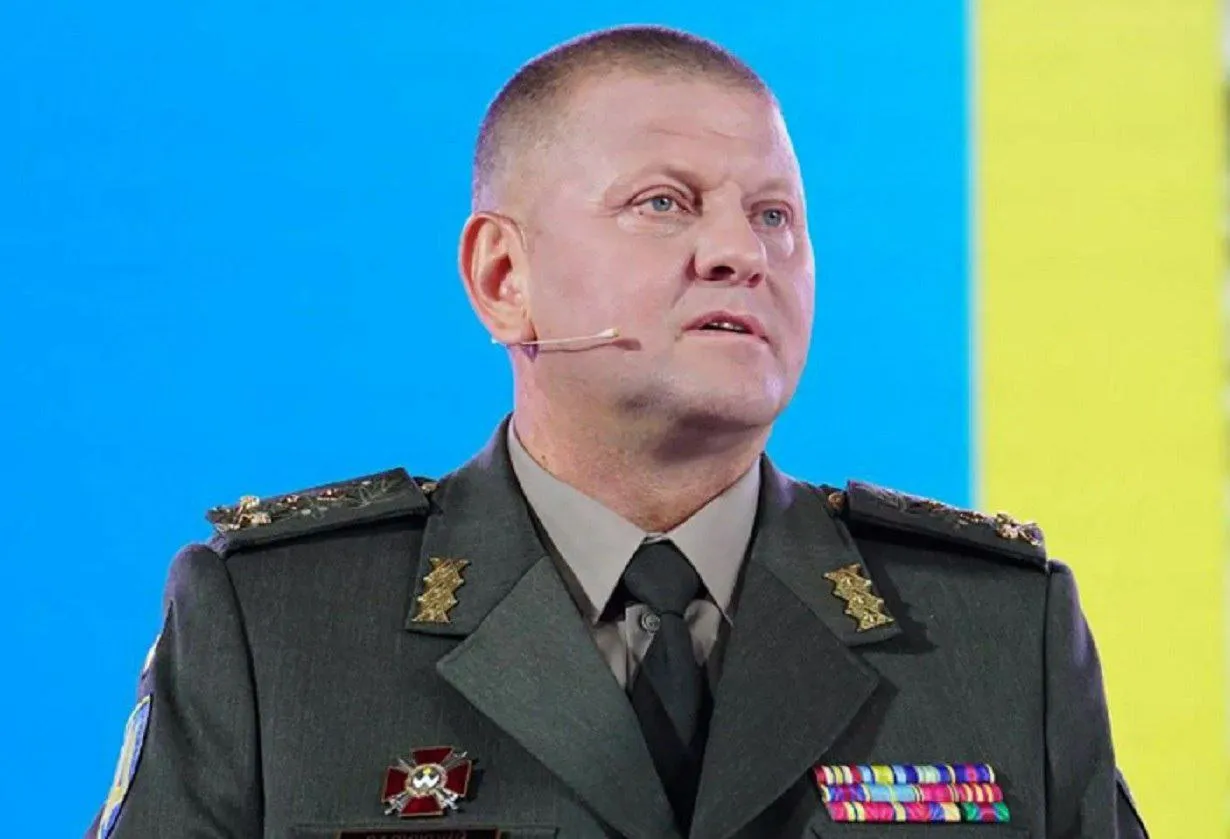
It is possible that Valeri Zaluzhny was arrested about a month ago and is being held by the SBU under heavy security after refusing to take up his post as ambassador to the UK. According to Slavyangrad, the arrest was designed to eliminate a political opponent. Although I have not had confirmation of this story, it is certainly true that Zaluzhny has not yet taken up his post as ambassador to the UK.
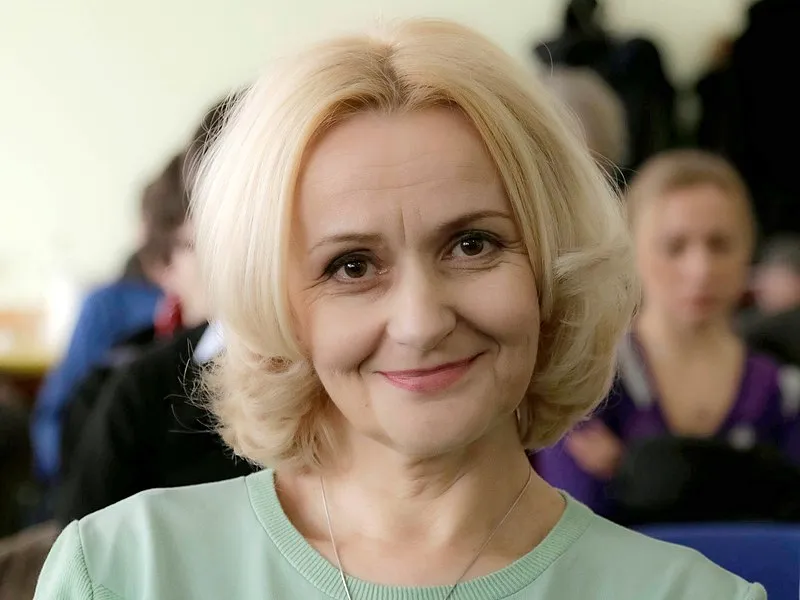
Butter wouldn’t melt in her mouth.
According to Info Defence, Irena said:
It is unacceptable to speak Russian in public places in Ukraine. A ruling by Ukraine's Constitutional Court on July 14, 2021, stated that there is 'no Russian-speaking population in Ukraine' legally. Russian speakers are considered marginal and defective people.
I can relate to this especially because my Welsh mother was prevented from speaking Welsh (her native language) in her South Wales school by the use of the Welsh Not.

This was a board passed on from child to child who were caught speaking Welsh in school. The pupil who ended the day with the Not was punished.
Scary Tale - From Z

I am sure that if Ukraine falls, then Putin will indeed invade the Baltic states. And talking about his strategy, Putin does not hide his desire to return to the Soviet Union and dominate all former Soviet republics, which are independent now, regardless of whether they are NATO members. And yes, this is his strategy. And after the Baltic states, he will attack Poland and Germany.
You can watch the short interview here. The once great Z looks triumphant but the woman interviewing him from NBC doesn’t appear to be convinced. The BBC was less triumphant, claiming that the aid package will slow the Russian advance rather than taking back ground. The narrative has changed.
Ukrainians in Poverty
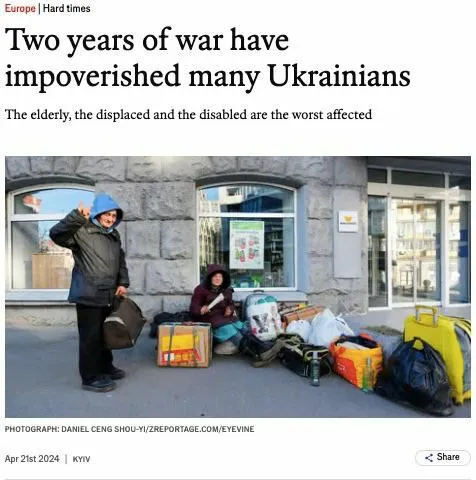
Many Ukrainian people, especially the elderly, displaced and disabled, have fallen into poverty since the SMO began. A survey carried out last November showed that 9% of people had run out of food at some point during the previous 30 days, while 23% were in a state of food insecurity. Pensioners (one third of the population) have been hard hit due to inflation which has increased somewhat from the 2022 figure of 26%. The figure for those claiming disability was 3 millions but this has increased by 300,000 due to injured soldiers. Unemployment has increased substantially and wages have fallen. You can read more here.
Jails Overflowing
Some say that at least two things are overflowing in Ukraine: the cemeteries and the prisons. The relevant authorities estimate that 33,000 prison places are available but more than this number are expected to be imprisoned for evading military service.
Kuleba
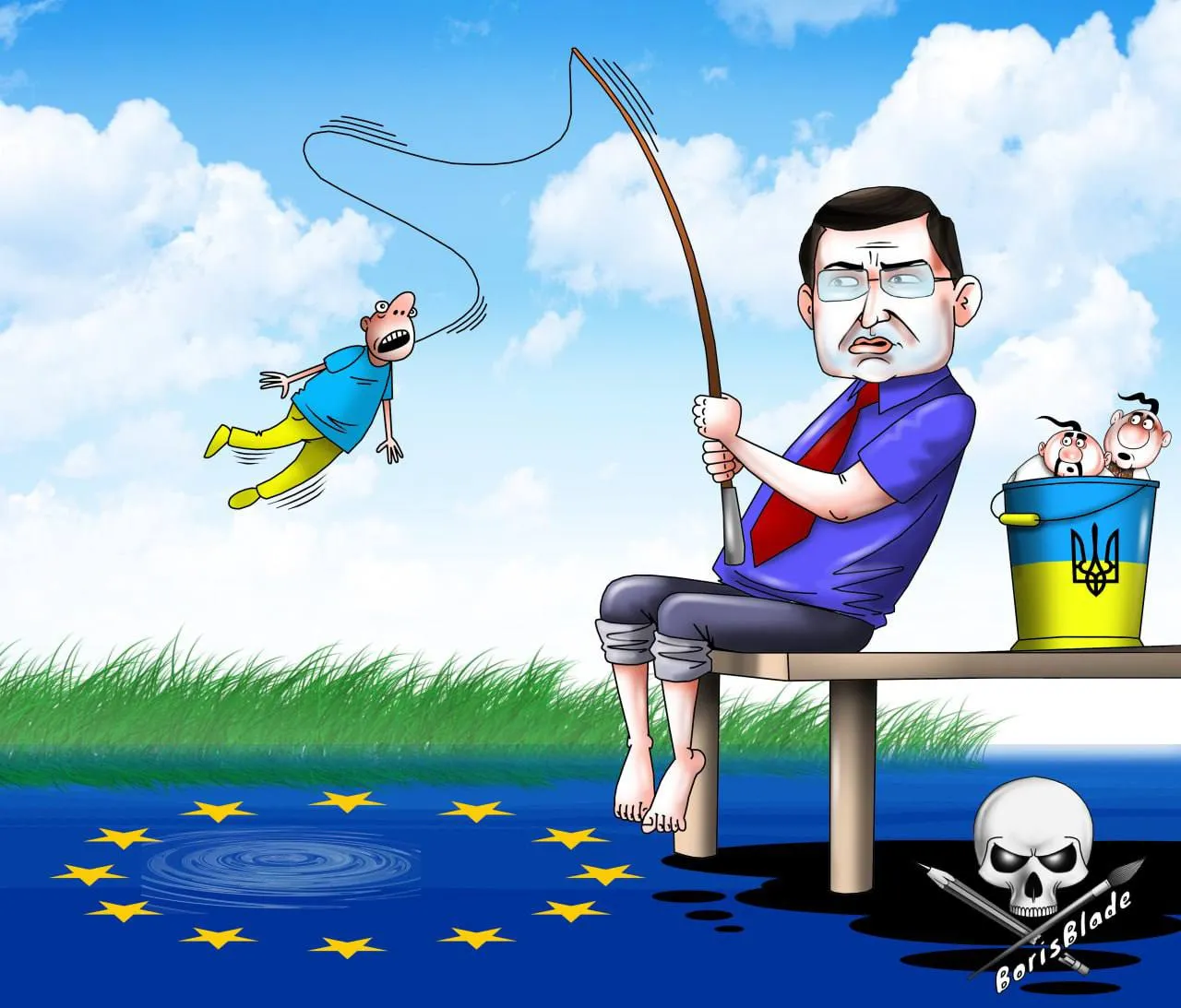
This man (Ukraine’s Foreign Minister) is a complete monster if such a thing exists. With total disregard for the people who fled Ukraine in the past two years to avoid the conflict he condemned these refugees as traitors.
Ukraine will not provide services to its citizens who have fled abroad, because they have shown their indifference to the issue of the survival of the state.
Consular support has been withdrawn from Ukrainians of military age living abroad - which will make it difficult for them to exist thereby encouraging them to come home. This measure applies to those who have been abroad since before the SMO began. It is possible that many will change citizenship rather than returning to Ukraine as cannon fodder. Arestovich believes that Putin could offer these Ukrainians Russian passports.
By the way, denying people passports conflicts with both European and Ukrainian law, according to some - including Alexander Mercouris.
Lost Children
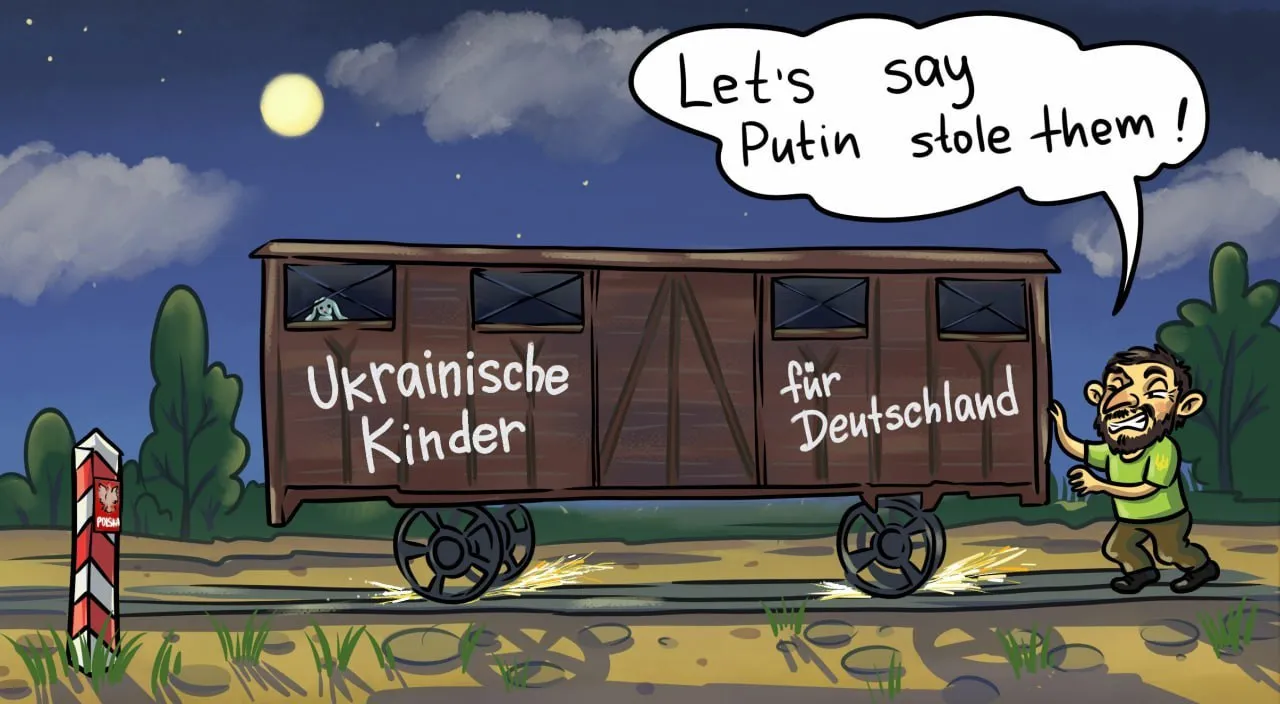
You may remember that some time ago the International Criminal Court condemned Russia for kidnapping Ukrainian children. Many of us believed that this was nonsense and now we know that it was nonsense since the 161 ‘kidnapped’ children have turned up in Germany You can read more at Fearless John.
Ukraine Terrorist Attacks (i.e. attacks that target civilians)
19th/20th April Overnight
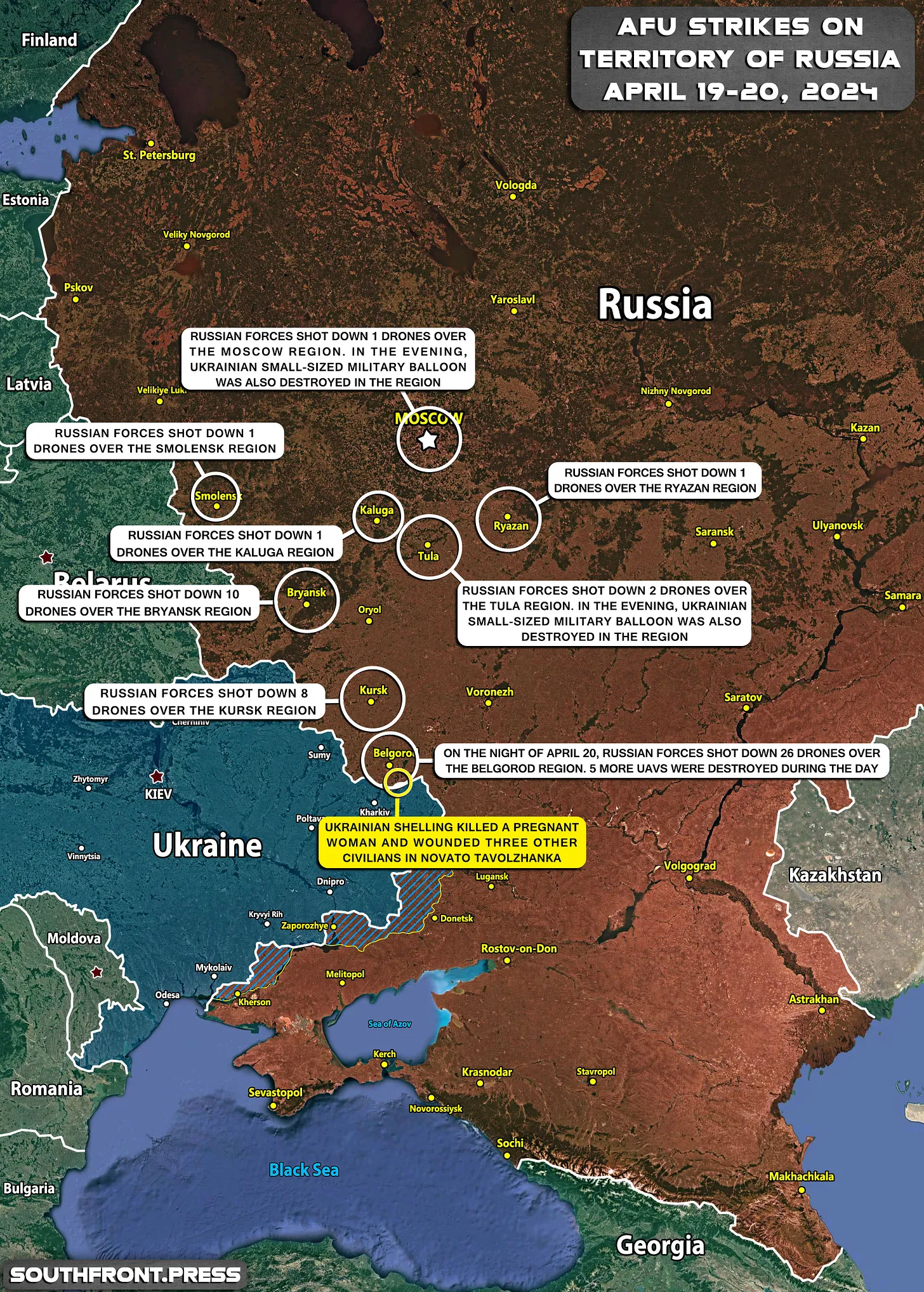
The Two Majors gave this report:
The Enemy conducted a massive UAV attack at night. Enemy drones were shot down over the Tula, Bryansk and Kursk regions. In the Belgorod region, two civilians died after being hit by enemy drops from copters in the locality of Poroz of the Grayvoron urban district. An airplane-type UAV crashed into a house in the locality of Istobnoye, Gubkin urban district, there were no casualties. In the Kaluga region, an energy facility has been damaged. In the Smolensk region, after the fall of the AFU UAV, there was a fire at the facility of the fuel and energy complex.
The village of Novato Tavolzhanka (Belgorod) was also shelled, killing a pregnant woman and injuring two others.
103 rounds of ammunition was launched into the DPR and explosives dropped from drones killed two and injured another three.
21st/22nd April
Belgorod, Tyotkino and Kursk regions suffered shelling overnight. A Tochka-U missile was shot down over Belgorod region on the afternoon of the 22nd April.
22nd/23rd April
Belgorod suffered a massive attack overnight with many drones being shot down. Bryansk was also attacked along with the DPR which received 53 projectiles. Only one casualty was reported.
23rd/24th April
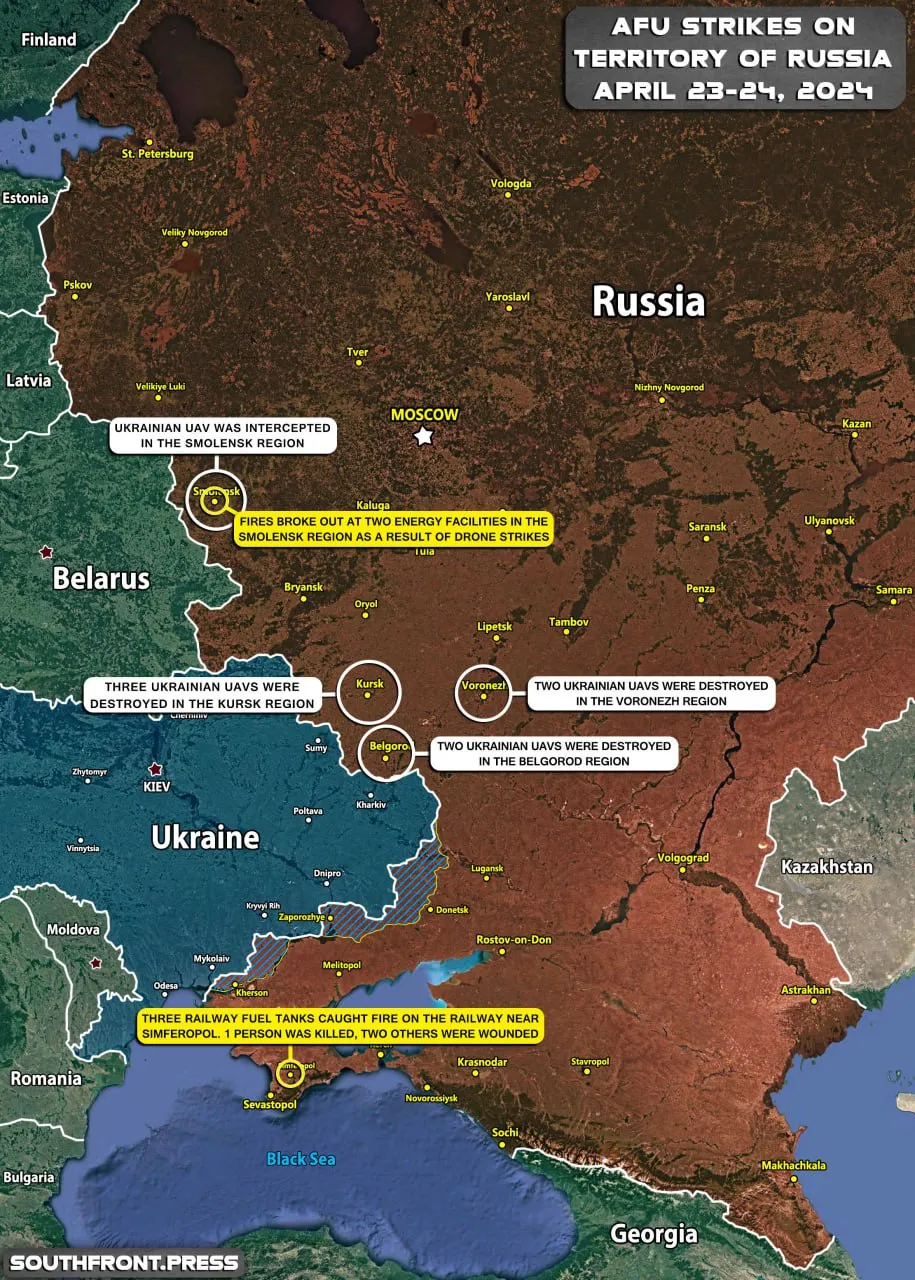
Slavyangrad is reporting that a Ukrainian drone hit a car in the village of Mirnoye in Zaporozhye killing three people and injuring another. The Two Majors gave this short report:
The AFU, at nightfall, attempted a massive UAV attack on the regions of Russia. One UAV crashed in the Lipetsk industrial zone. At least 4 were shot down in the Voronezh region. In the village of Volokonovka, Belgorod region, a roof was damaged and windows were broken in a private residential building.
Belgorod, Smolensk and Kursk suffered shelling and drone attacks while drones attacking Pskov oblast were disabled electronically. 73 round were launched at the DPR injuring two women.
24th/25th April
On the 24th April, the village of Shebekino in Belgorod was attacked injuring four civilians. Villages in Kursk region also came under fire along with the DPR where two civilians were injured.
25th/26th April
Kirovsky village in Donetsk came under attack overnight killing two and wounding five others including a child. In Bryansk region, four civilians were injured by shelling. Villages in Kursk also came under fire. Korovyakovka was among those villages that suffered shelling, killing one person and damaging houses and a gas pipe.
<snip>
The Fronts
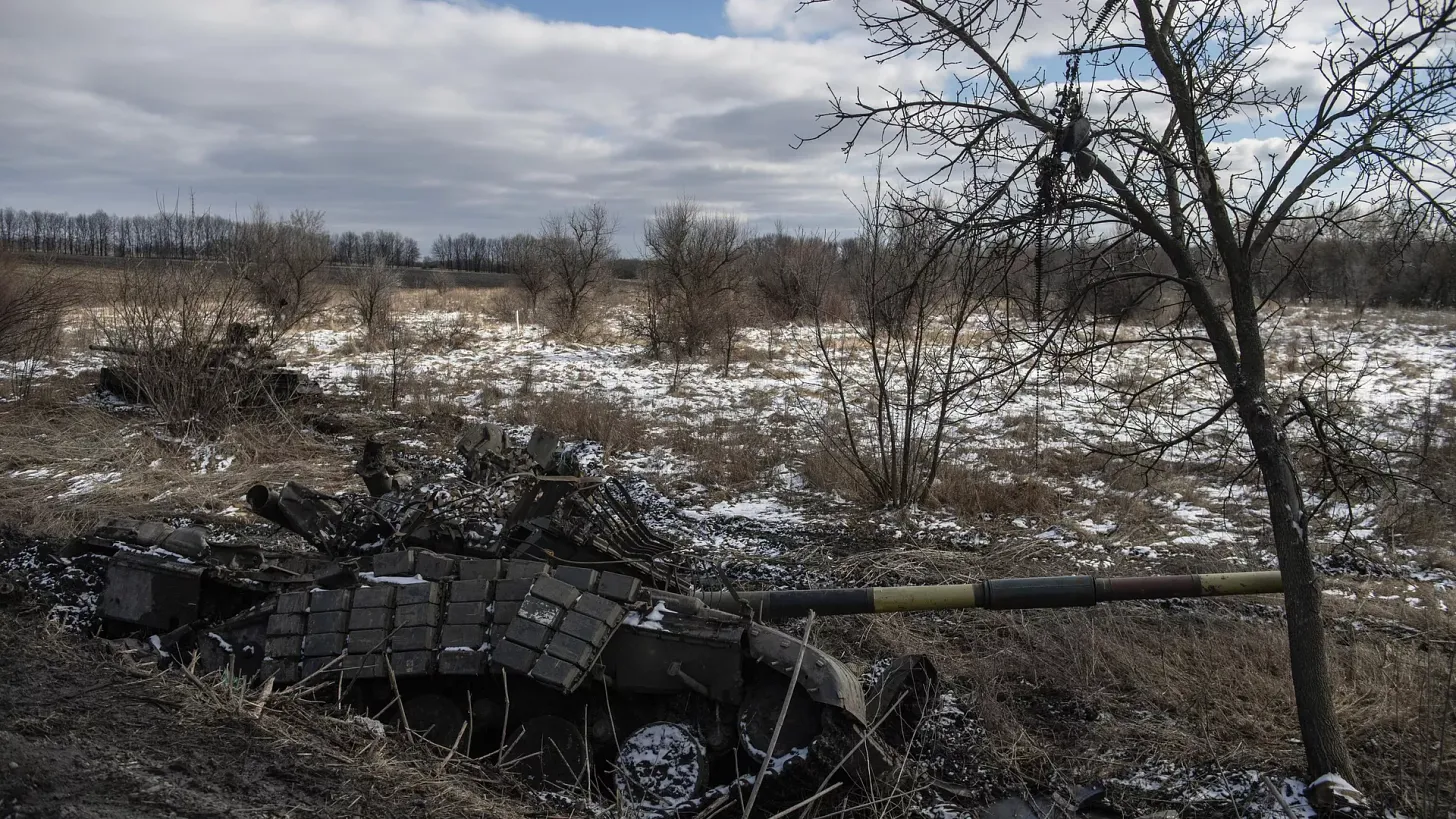
Chasiv Yar
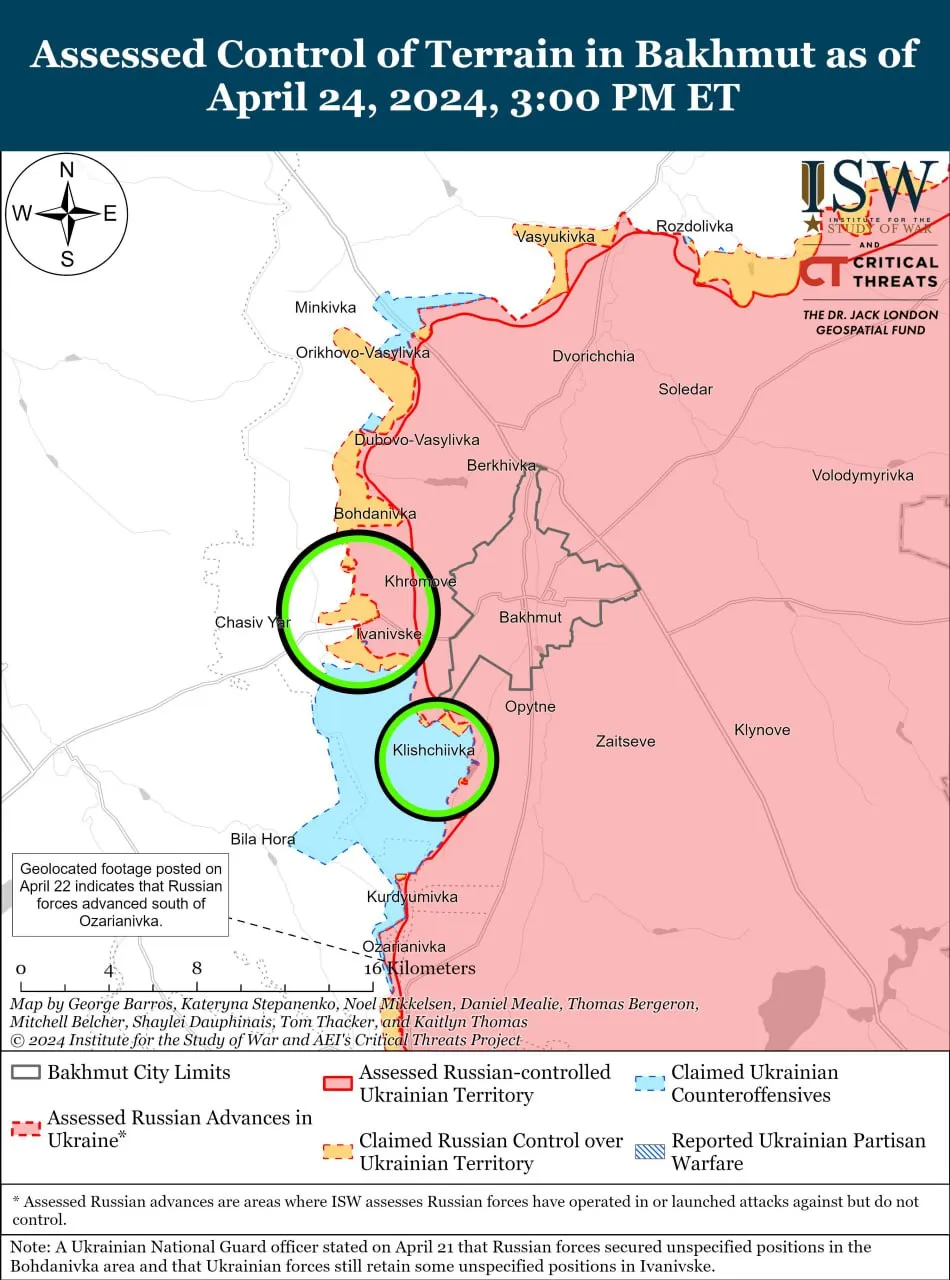
The battle for Chasiv Yar continues and the Wall Street Journal is reporting that the Ukrainian troops in this direction are exhausted due to lack of rotation and are unable to resist the slow Russian advance.
Donetsk/Krasnogorivka
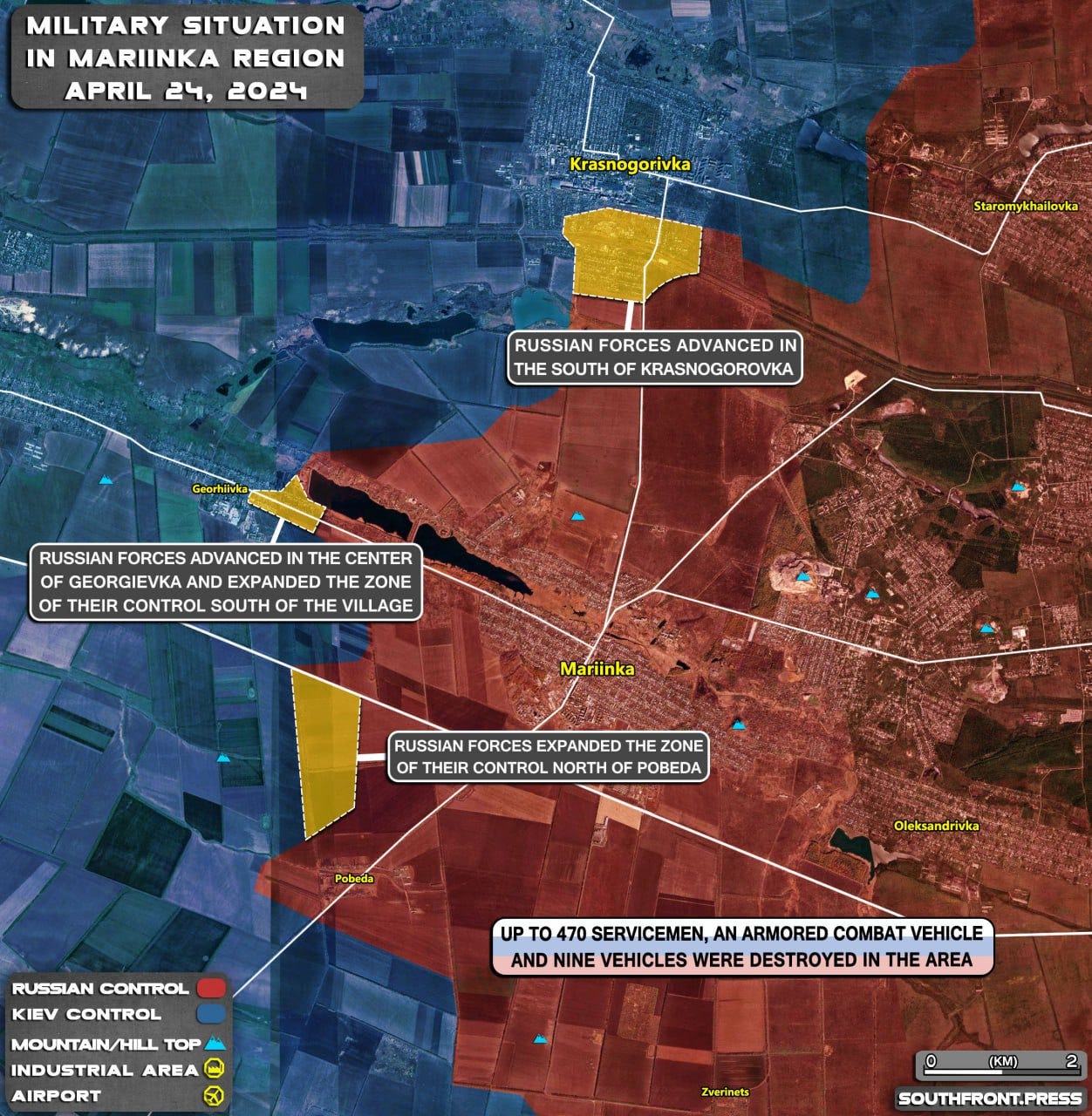
By the end of the week, the Russians had advanced to the centre of Krasnogorovka taking control of the refractory brick plant.
Vuhledar
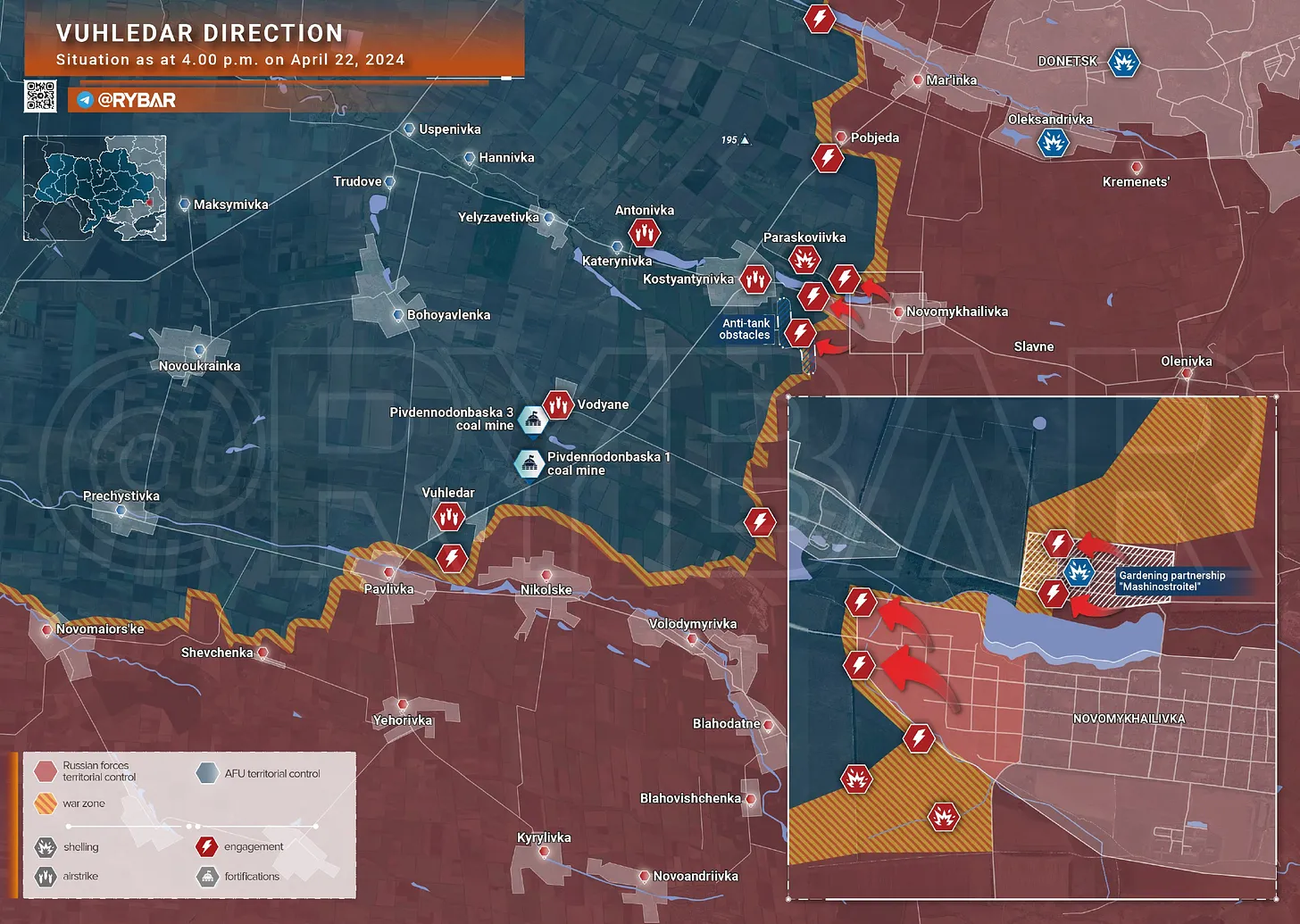
Novomykhailivka was liberated on the 22nd April, according to Rybar. This will allow the Russians to make further advances towards Kostyantynivka, the capture of which will cause the Ukrainians logistical problems in the Vuhledar direction.
Ocheretyne

The Ukrainians are attempting to prevent the encirclement of their remaining troops in Berdychi - according to southfront. It will not be long before the Ukrainians will need to abandon the defence line they created following the collapse of Avdeevka. They will fall back to another line further west - but these defences will be weaker than the defences the Russians have breached in places such as Avdeevka and Bakhmut. Some say the Ukrainians could be forced back to the Dnieper before the autumn leaves begin to fall.
Zaporozhye - Robotyne
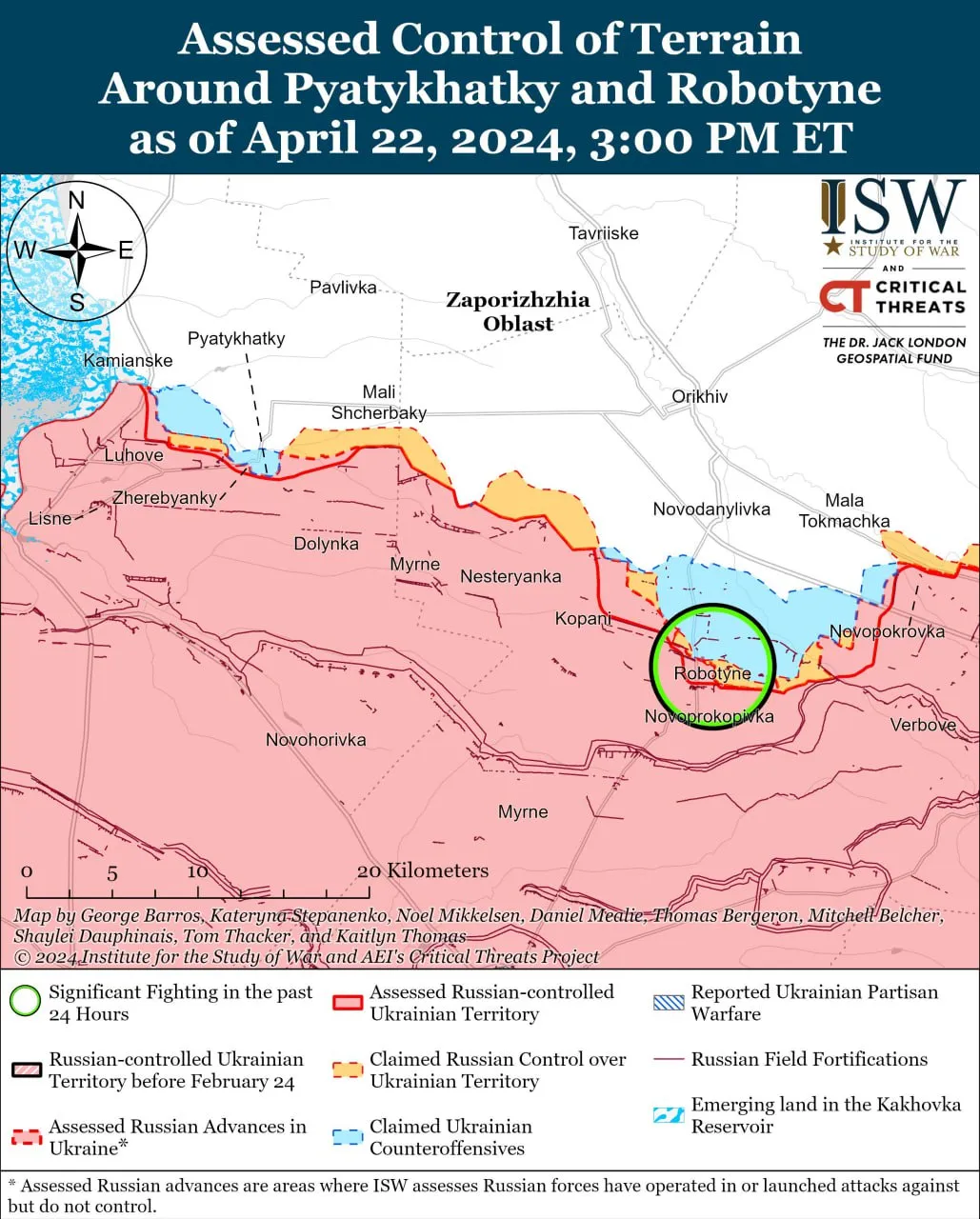
By the end of the week, the Russians had created a pocket in the Novoprokopovka area between Verbove and Rabotino where heavy fighting continues.
Kherson
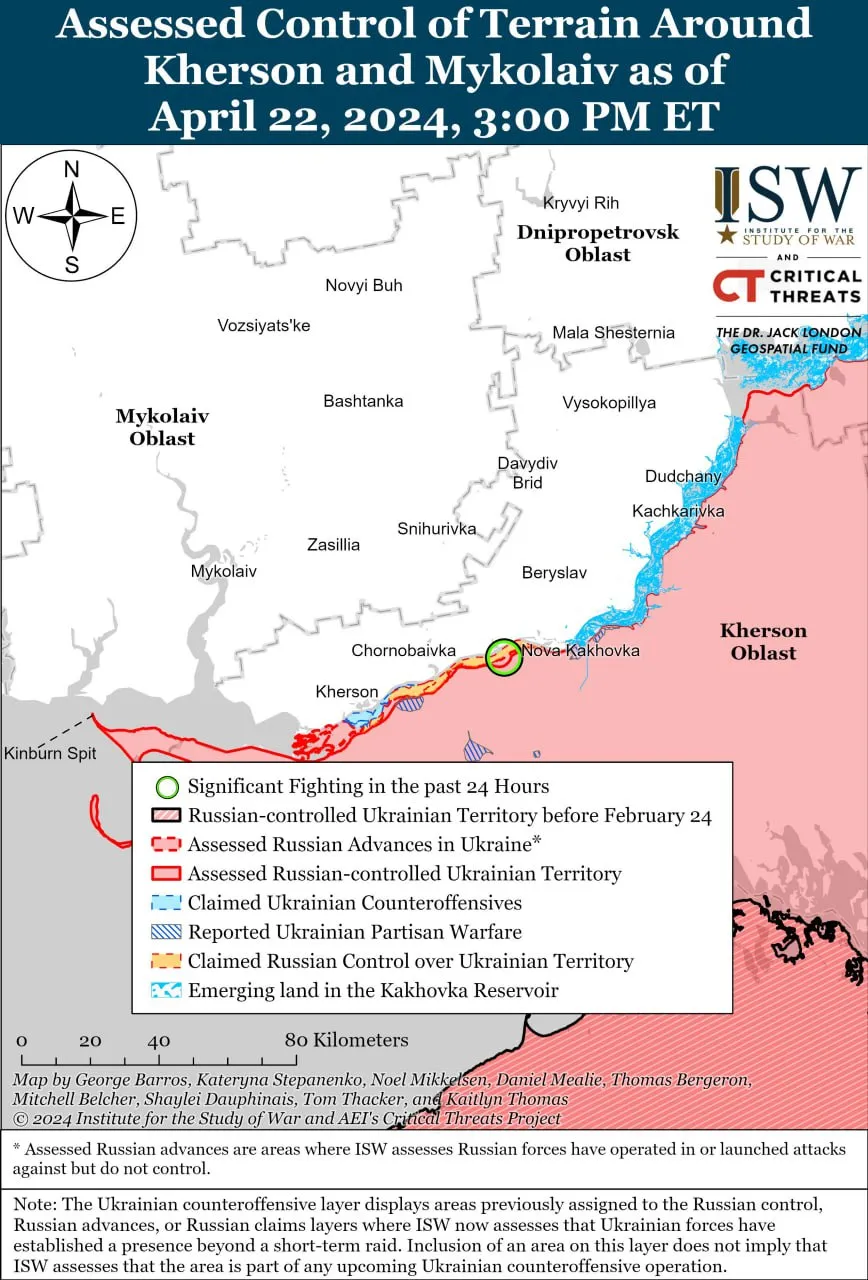
Fighting continues at Krynki and Antonovsky bridge but there has been little change in the line of contact.
(Much more at link>)
https://robcampbell.substack.com/p/ukra ... update-4e9
******
Sikorski Went Overboard With His Reaffirmation Of Ukraine’s Western Borders
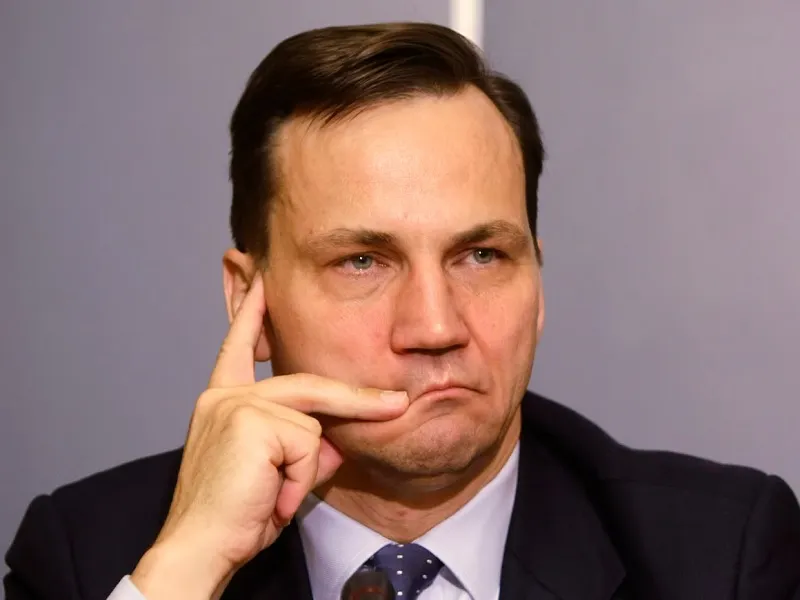
ANDREW KORYBKO
APR 27, 2024
His decision to use the Ukrainian name of an historically Polish-controlled region implies that it was illegally occupied by the Poles for centuries with all that entails.
Polish Foreign Minister Radek Sikorski went out of his way to pronounce the Ukrainian name of an historically Polish-controlled region when reaffirming his country’s recognition of its neighbor’s western borders. He told the Sejm that “Russia is lying about Poland's alleged plans to annex part of Ukraine. Donbas is Ukraine; Crimea is Ukraine. Lviv, Volyn, and the former Eastern Halychyna are also Ukraine. So I’m repeating this so that the Kremlin can hear it: Lviv is Ukraine”, with the last part said in Ukrainian.
“Lviv” is known in Polish as Lwów (pronounced “Lvoof”) and was part of the Polish Crown for over 400 years as explained here in late March. At the time, Sikorski quipped that “Ukraine and Poland have been one country for 400 years. [Conventionally intervening in Ukraine] would provide fodder for Russian propaganda. Therefore, we should be the last ones to do so.” This is only accurate with respect to Western Ukraine though as that piece proved.
In any case, Sikorski repeated his general point while speaking at the Sejm, but he went overboard by pronouncing the Ukrainian name of that historically Polish-controlled region. This implies that it was illegally occupied by the Poles for centuries, thus discrediting his country’s official claims that it and other regions were integral parts of the Crown. It also suggests that the partitions were a form of justice and that Poland’s restoration of control over those regions during the interwar period was illegitimate.
Even worse, this innuendo erodes Poland’s official claim that the mass killing of Poles by Ukrainian ultra-nationalists during World War II was a genocide. After all, if these lands were illegitimately controlled by Poland, then even the most radically violent forms of so-called “resistance” can be spun as “acceptable”. Sikorski could have avoided this scandal by sticking with the Polish pronunciation of those regions or simply not naming them at all.
Instead, he was so carried away with virtue signaling his support of Ukraine’s post-Soviet borders that he didn’t think about the consequences of pronouncing one of its historically Polish-controlled regions in that neighboring country’s language, which greatly harmed Poland’s national interests. He dealt more damage to them than any so-called “Russian propaganda” ever could since he’s his country’s top diplomat and should know better than to speak recklessly after being caught up with emotions.
Quite clearly, Russian claims of Polish plans in Western Ukraine have gotten under Sikorski’s skin so much that he can no longer keep his cool, thus explaining why he just inadvertently undermined Poland’s official historical narratives. This was done at the expense of possibly “legitimizing” interwar Ukrainian terrorism in the Second Polish Republic and the genocide of Poles by Ukrainian ultra-nationalists during World War II. Ukrainians wildly applaud what he just did while Polish patriots are completely disgusted.
https://korybko.substack.com/p/sikorski ... d-with-his
******
TARIK CYRIL AMAR: UKRAINE’S MILITARY IS LOSING THE FIGHT NOT ONLY AGAINST RUSSIA BUT ALSO AGAINST A GAMBLING ADDICTION EPIDEMIC.
APRIL 26, 2024 LEAVE A COMMENT
By Tarik Cyril Amar, Website, 3/30/24
Ukraine is now on the verge of a catastrophic defeat. On the ground, recent Russian advances – especially since the fall of the key town (really, fortress) of Avdeevka – may not (yet) look rapid, but they are steady and have become highly predictable. Russia has the initiative, and it is a matter of Moscow’s decisions how fast the Ukrainian crumbling will be exploited. Once the Russian military commits its reserves (no, they have not yet entered the scene), the map could change with the kind of speed that will shock out of their dreams even the most propagandized victims of Western information warfare. This may happen very soon or a little bit later. But this war is now very unlikely to last into 2025.
We are also seeing clear signs of panic in the West and Kyiv/Kiev: Talk about the possibility of defeat has reached mainstream media and conformist “experts” – such as the German Christian Mölling – who have spent the last two years as relentless war boosters are rushing for the rhetorical exits. The blame game almost starts among those who have most to be ashamed of.
Ukraine’s president Volodymyr Zelensky, meanwhile, has told the public that he can imagine a peace based on the territorial status quo before the escalation into all-out-war of February 2022. For that, it is, of course, far too late. That solution – highly favorable to Ukraine, as its own then chief-negotiator has recently admitted – was on the table in the spring of 2022. But Kyiv/Kiev chose to be misled by the West which urged it to continue the war. As recent statements by the Russian leadership – all the way up to President Vladimir Putin – have made clear, such an offer will not be made again. This war will now end on terms much worse for Ukraine.
Against this dismal backdrop, Strana.ua, one of Ukraine’s most important and popular news websites, is reporting that the Ukrainian military is struggling with an online gambling “epidemic.” And make no mistake, this is not a “scourge,” as Strana.ua puts it, restricted to those serving in the rear. According to prominent Ukrainian lawmaker Oleksy Honcharenko, 90 percent of those on the “frontlines” are gambling and betting so badly that they lose enough to go into debt. He believes that the problem is pervasive and severe enough to “destroy the morale” of the troops. Their return into civilian life – if they are lucky enough to return, of course – is marred by having “nothing,” and they’ll be “ideal targets for the world of crime.” So Honcharenko. [https://strana.news/news/461179-kak-ihr ... armii.html]
An army of men and women abused for a Western proxy war, indoctrinated and also often enough brutally cajoled by a regime that has sold out Ukraine’s interests and hundreds of thousands of lives to the (still) neocon strategies of Washington – and all that for what?
To be admitted into NATO? But that will not happen and was never a good idea to begin with. To defend democracy and “civil society”? But Ukraine has no democracy; it is a regime every bit as personal as that of Russia, and, if anything, more corrupt. “Civil society”? A label for those with decent English and good connections to Westerners. It means nothing for the many others churned up in a meatgrinder of a war. To join “the West”? Wait for the backlash once this war is over – probably soon – and Ukrainians will have to process the fact that the West has used them and then dropped them.
In short, there is nothing really surprising about the fact that Ukrainian soldiers have found a destructive form of escapism. As one of them puts it, “the longer the war is lasting, the more you want to distract yourself from the things going on around you, just forget about everything.” Soviet troops in Afghanistan and American ones in Vietnam used drugs for the same purpose. And yet, there is something almost too symbolic about the Ukrainians’ choice of self-ruin: Gambling and betting. They are imitating the sins of their leaders, as if in a collective gesture of despair as well as what is left of defiance. And, of course, having an addiction that eats up everything you may want if you survive, is a way of saying that you don’t much believe in your surviving, or – perhaps even worse – that you have stopped caring.
Ukrainians do not deserve their government of shortsighted gamblers – and losers. They do not deserve to have become dispensable chips in a geopolitical game that the West has bet on – and is losing. They deserve a rapid end to this war and a return to a life in peace that they enjoy enough not to want to gamble it away.
https://natyliesbaldwin.com/2024/04/tar ... -epidemic/
******
Then we broke our promises...
April 27, 23:16

German businessman and activist Kim Dotcom:
“In World War II, 27 million Soviet citizens died. Despite this loss, Russia decided to become our partner, withdrew its troops from East Germany and gave us reunification. Then we broke our promises, supported the American coup in In order to expand NATO, they supplied Ukraine with weapons to kill Russians in the US proxy war. "Shame."
One day, Germany will have to pay for this.
https://colonelcassad.livejournal.com/9121410.html
The current regime in Ukraine must certainly be destroyed
April 27, 19:05
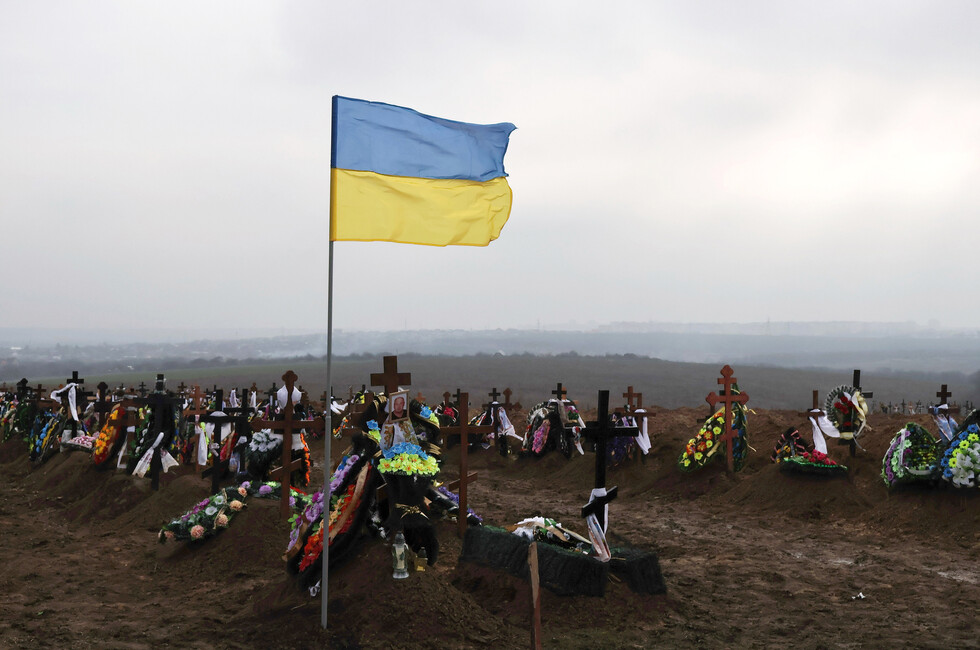
My interview for the Donetsk News Agency.
The current regime in Ukraine must certainly be destroyed
We recently celebrated the tenth anniversary of the beginning of the Russian Spring and the reunification of Crimea with Russia. Did you then, in 2014, have a feeling that these changes would affect not only your native Crimea and Russia, but would also lead to a restructuring of the world order?
After it became clear that Russia would intervene and a referendum would be held in Crimea, it was obvious that the “end of history” according to Fukuyama was completely canceled and the world order was entering a period of transformation. By 2024 this has become obvious to everyone. The old world order has collapsed, and we are living in a period of formation of a new world order, which largely depends on the outcome of military operations in Ukraine, although not only on this.
In your opinion, what were the main prerequisites for the beginning of the Russian Spring, what became the main trigger, the boiling point for the residents of Crimea and Donbass?
The main trigger, of course, was the Euromaidan, without which Crimea and Donbass would still be part of Ukraine. The coming to power of the Nazis in Kyiv and the course they proclaimed towards de-Russification and de-communization launched the processes of the disintegration of Ukraine, which continues to this day. Apart from war and terror, the Ukrainian Nazis and their sponsors had nothing to offer the people, so the departure of Crimea and Donbass after the coup was inevitable.
What is your personal most vivid memory of the Russian Spring?
If we talk about the events in Crimea, then, probably, the day of the appearance of “polite people”, when the full realization came that the struggle that had already been waged would end in success. If we talk about the Russian Spring as a whole, then this is, of course, the Odessa Khatyn, after which it became obvious that the old Ukraine burned down in the House of Trade Unions and there was a difficult and bloody war ahead with Nazism, with which there could and should not be any compromise.
Now, 10 years after the reunification of Crimea with Russia, the Kiev regime formally continues to lay claim to the peninsula. If you follow the Ukrainian information space, how is this topic presented there now?
The enemy continues to feed fantasies about the return of Crimea and Donbass, emphasizing that he needs territories, not people. In relation to the people living there, they openly proclaim their intentions to carry out ethnic cleansing there, turning into the ethnocide of Russians and Russian-speaking people. Accordingly, all military propaganda of the Zelensky regime is built on theses related to the need to seize Crimea and Donbass and carry out ethnocide there.
How do you generally assess the picture of the world that Ukrainian information resources form for their audience? It is clear that this picture is fantastic, in many ways defiantly divorced from reality, but do the residents of Ukraine notice this? Aren't they tired of propaganda, which, in fact, only pushes them towards self-destruction?
Ukrainian resources can currently only exist under an information cloak in the absence of freedom of speech and opinion. By replicating the most monstrous lies, they are now not much different from the media of the Third Reich, whose population also lived under an information cap - adjusted for the technological level - and was completely confident in “victory over the Bolsheviks.”
In much the same way as Ukrainians driven to the front are treated to fables about a “quick victory over Russia,” we just have to endure another 100-200-300 thousand killed. The real denazification of Ukraine must be accompanied by the elimination of all such propaganda mouthpieces of the Nazi regime and the bringing to justice of those who were dirty in promoting the ideas and actions of Zelensky’s Nazi regime.
In terms of the information confrontation between Russia and the Kyiv regime: do you think it makes sense for Russian media to work with the Ukrainian audience now? What is the percentage of people there who are susceptible, or likely to become susceptible in the foreseeable future, to common sense? Or did those who were ready to be critical of the Ukrainian government long ago leave for Russia and other countries?
Such work has been carried out, is being carried out and will continue to be carried out. Many people really think about what is actually happening in Ukraine, but it is important to remember that they live under conditions of actual internal occupation, when a regime of open terror has been established on the streets against any dissenters. Russia is certainly working in this direction, and it is producing results.
The rejection of forced mobilization in Ukraine is also, to some extent, the result of this work. The number of underground workers helping our military in Nazi-occupied territories has also increased. The partisans have become more active and have successfully attacked the enemy’s military and logistics infrastructure. And the further it goes, the greater the role that internal Ukrainian resistance to the Zelensky regime will play. This resistance must be worked with and supported.
Nazism in Ukraine began to be cultivated long before the Maidan, but after 2014 it became an openly approved ideology, and then an almost obligatory norm: in order to participate in public life, it is necessary to consider Hitler’s accomplices as “heroes” and demonize the Soviet Union. Do you think there is a clear parallel between modern Ukrainian Nazis and Bandera during the Great Patriotic War, or does this phenomenon now have a different scale or meaning?
These are direct successors of the work of Bandera and Hitler, which they themselves do not particularly hide. And Western sponsors are often the same ones who in the 30s armed Hitler for the “crusade against Bolshevism” and who in the 40s and 50s armed Bandera’s followers for the war against the USSR. Our old enemy has not changed, and Nazism has always been and remains one of the tools in its arsenal. Therefore, the current regime in Ukraine must certainly be destroyed.
Do you think that after the end of hostilities there will be a need for a tribunal against the Ukrainian Nazis, military and political leadership, or will these figures not survive our victory?
Those who cannot be destroyed during hostilities, if caught, must be tried, including through the application of the restored death penalty for crimes committed against peace and humanity.
Those who flee and hide will need to be caught and eliminated for a long time and systematically, as was the case with the militants of Basayev, Raduev and Maskhadov who escaped from Chechnya. The Russian special services have such experience.
Now we see that the bravado of Western countries regarding Ukraine is ending; it is becoming increasingly difficult for them to beg for money and means of waging war. In your opinion, could it turn out that the United States has collected all the economic and geopolitical bonuses and is ready to reset the map of Ukraine, leaving the Kiev regime alone with its problems?
At the current stage, the United States is not ready to abandon its support for the war in Ukraine, since, from their point of view, the longer the hostilities go on, the more they weaken Europe and Russia. At the same time, the costs of Ukraine for the United States are not fundamental.
The question remains of cutting costs and shifting them to the US’s European satellites, as well as compensating them by intensifying the plunder of Ukraine. This process has not yet been completed. The United States will not simply abandon Ukraine, because from Washington’s point of view, Ukraine is American prey. But predators don’t just give up their prey. To believe otherwise would be vain self-deception.
What is known about the dynamics of arms supplies to Kyiv from its sponsors? Which item of these supplies most clearly affects the actual balance of forces in the war zone?
The enemy is now seeking to increase the supply of 122, 152, 155 mm shells, air defense missiles, various drones, as well as wheeled armored vehicles. The issue with the supply of heavy armored vehicles and self-propelled guns, as well as air defense systems, is more complex. Much depends on the issue of budgetary funding from the United States, as well as the pace of deployment of ammunition production in Europe. The transfer of aviation is expected in the summer-autumn of 2024.
How do you assess the pace of adaptation of the Russian army to the realities of modern armed conflict? For example, how is the situation changing in terms of providing modern means of communication, supplying UAVs to troops, and training personnel to use them? Does the pace allow us to hope for a radical turnaround in the situation in the conflict zone in favor of Russia?
Over the past year, the pace of adaptation of the RF Armed Forces has increased significantly, which was facilitated, among other things, by the efforts of the Russian military-industrial complex, which is increasing both the volume of military production and expanding the range of production of the latest weapons, created taking into account the experience of the Northern Military District. This is already contributing to changing the dynamics of events at the front.
Regarding the issue of providing communications equipment and UAVs: compared to 2022, tangible progress is visible, but it is still not sufficient to fully saturate the troops with modern communications equipment, drones and electronic warfare systems. There is still a lot of work ahead. It is also worth noting the role of military humanitarian workers, who meet some of the targeted needs of the troops, complementing the efforts of the Russian Defense Ministry and the military-industrial complex. The guarantee of victory lies in the unity of efforts of the front and rear.
In addition to direct military confrontation, we also face another challenge. The tragedy in Crocus City Hall raises with new urgency the question of the terrorist essence of the Kyiv regime: although the investigation has yet to clarify all the details, the very fact of the terrorists’ connection with Ukraine is beyond doubt. Do Kyiv's resources allow it to further increase terrorist activity on Russian territory?
The involvement of the Nazi regime in Kyiv and its sponsors in the West in the terrorist attack at Crocus seems unconditional. The enemy will not give up terror and will strive to continue acts of terror on Russian territory. The resources necessary for this will be provided by the United States and NATO. But in the event of a military defeat on the battlefield, this will not save the enemy. Such terror is the weapon of the doomed.
Just like the crimes of terrorists from ISIS* (explosions in Russia or a terrorist attack on board an airliner over the Sinai) did not save their “Islamic State”*, which declared war on Russia and was destroyed in Syria. The terrorists remained, but their quasi-state disappeared. This should be the case with regard to the Ukrainian terrorist state.
Persons involved in such terror are subject to destruction, since they themselves have long ago placed themselves beyond the bounds of the law and humanity. The methods of fighting them must be identical to the methods of fighting terrorists in Chechnya and ISIS terrorists*. The SBU and GUR MOU must be recognized as terrorist organizations.
And if we talk about the development of the situation on the battlefield, does the Russian Armed Forces now have enough forces to significantly push back the front line - for example, in the Kharkov region, in order to secure Belgorod?
At the moment, the main emphasis in recruiting troops is on contract soldiers and volunteers, of whom up to 30-35 thousand people are added monthly, which makes it possible to compensate for losses and increase the capabilities of grouping troops in Ukraine. At the same time, its numbers still seem insufficient for large-scale strategic operations related to the advance to the Dnieper.
https://dan-news.ru/interview/boris-roz ... ichtozhen/ - zinc
https://colonelcassad.livejournal.com/9120891.html
Keramik and Novokalinovo all
April 27, 17:10

It is reported that the enemy abandoned Keramik and fled. This means that Novokalinovo is also everything.
We are waiting for confirming photos/videos from both settlements. Sources from the field confirm the ongoing cleanup.
Next is Arkhangelskoe. As it is not difficult to notice from the terrain, the enemy will not hold on to it for long. The defense will most likely be kept at the heights to the west and northwest of Arkhangelsk.
Also today, the Russian Armed Forces made progress in Krasnogorovka, on the outskirts of Netailovo, north of Berdychi, in Kislovka (a village in the process of coming under our control).
In general, things are going well.
Dynamics of the offensive in the Avdeevsky direction https://t.me/boris_rozhin/121656
https://colonelcassad.livejournal.com/9120562.html
On attracting Ukrainian refugees
April 28, 7:47

On attracting Ukrainian refugees
Regarding the debate on the topic of whether it is necessary to attract to Russia those whom the cocaine Fuhrer has actually deprived of Ukrainian citizenship, a reasonable balance is needed here between the desire to attract additional workers to the country and security considerations, so that agents of Ukrainian terrorists are not among those attracted.
On the one hand, it is necessary to expand the possibilities for Ukrainian refugees to submit applications to obtain a residence permit in Russia. On the other hand, expanded filtering measures are needed in order to control the expanding flow of applicants.
Of interest are skilled workers, engineers, and programmers. Those categories that are problematic to replace with migrants from Central Asia. But again, with an eye to the issue of filtering.
It is also worth considering that the Overton window works in both directions, so active work with this contingent in the interests of recruitment/obtaining information (including through relatives) is also possible through our intelligence services.
It is worth remembering that among the refugees there are both those who are quite capable of easily integrating into Russian society and who can be called our people, as well as various Raguli who escaped from the war. Ensuring sifting is the task of the state. So far, the state has not made any specific decision.
The positions of “let everyone in” and “keep no one in” are seen as divorced from reason.
https://colonelcassad.livejournal.com/9121989.html
Google Translator
